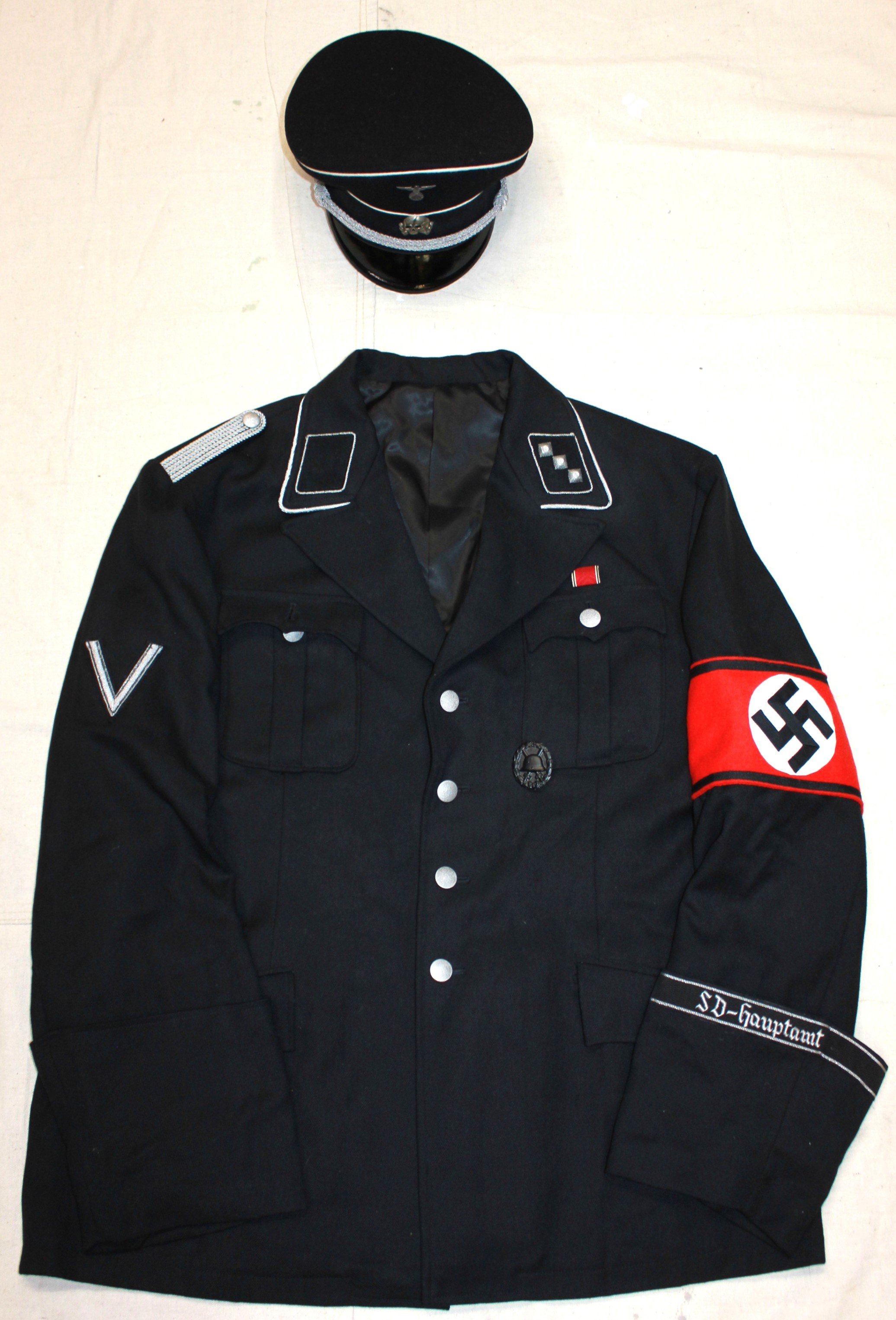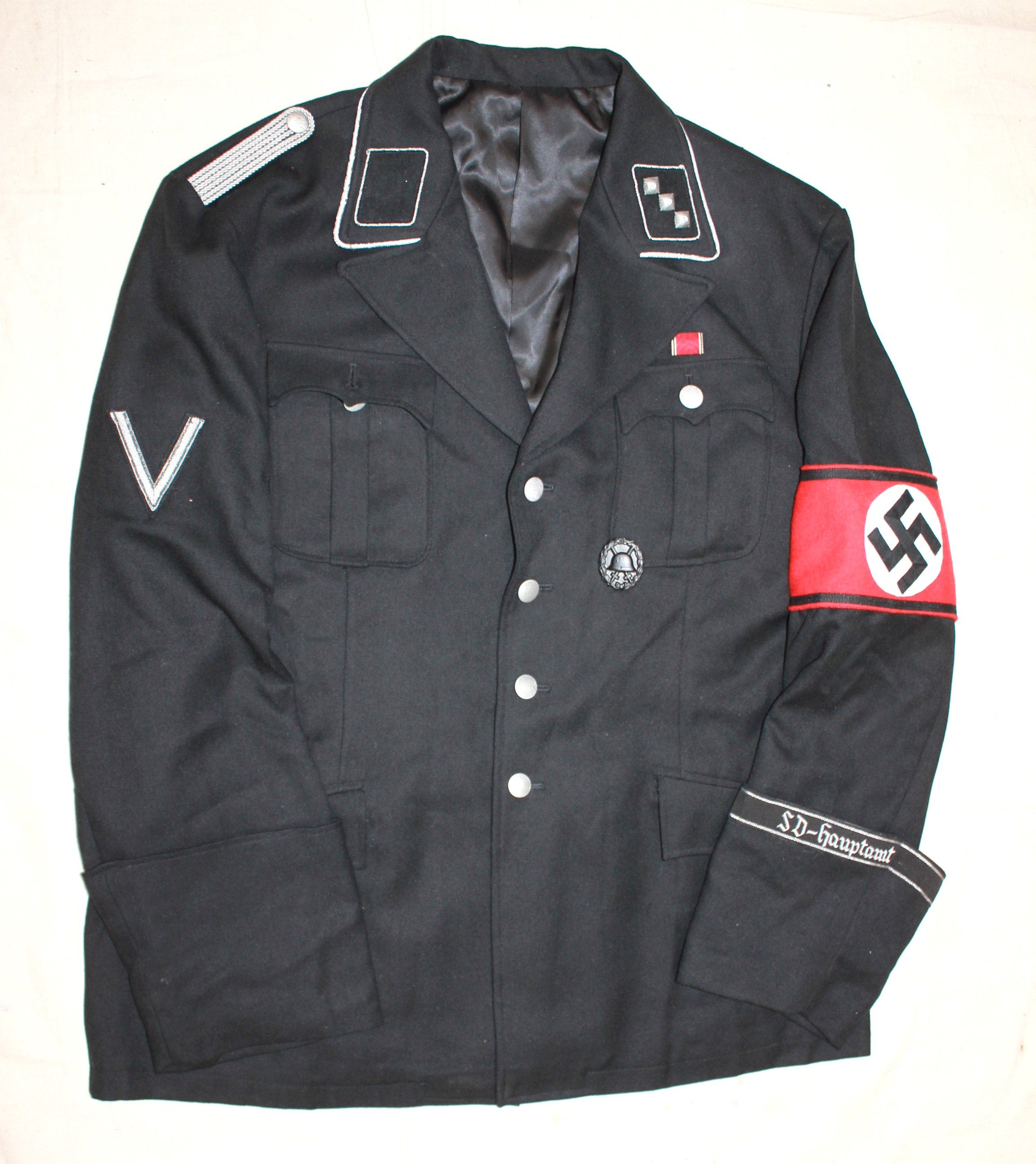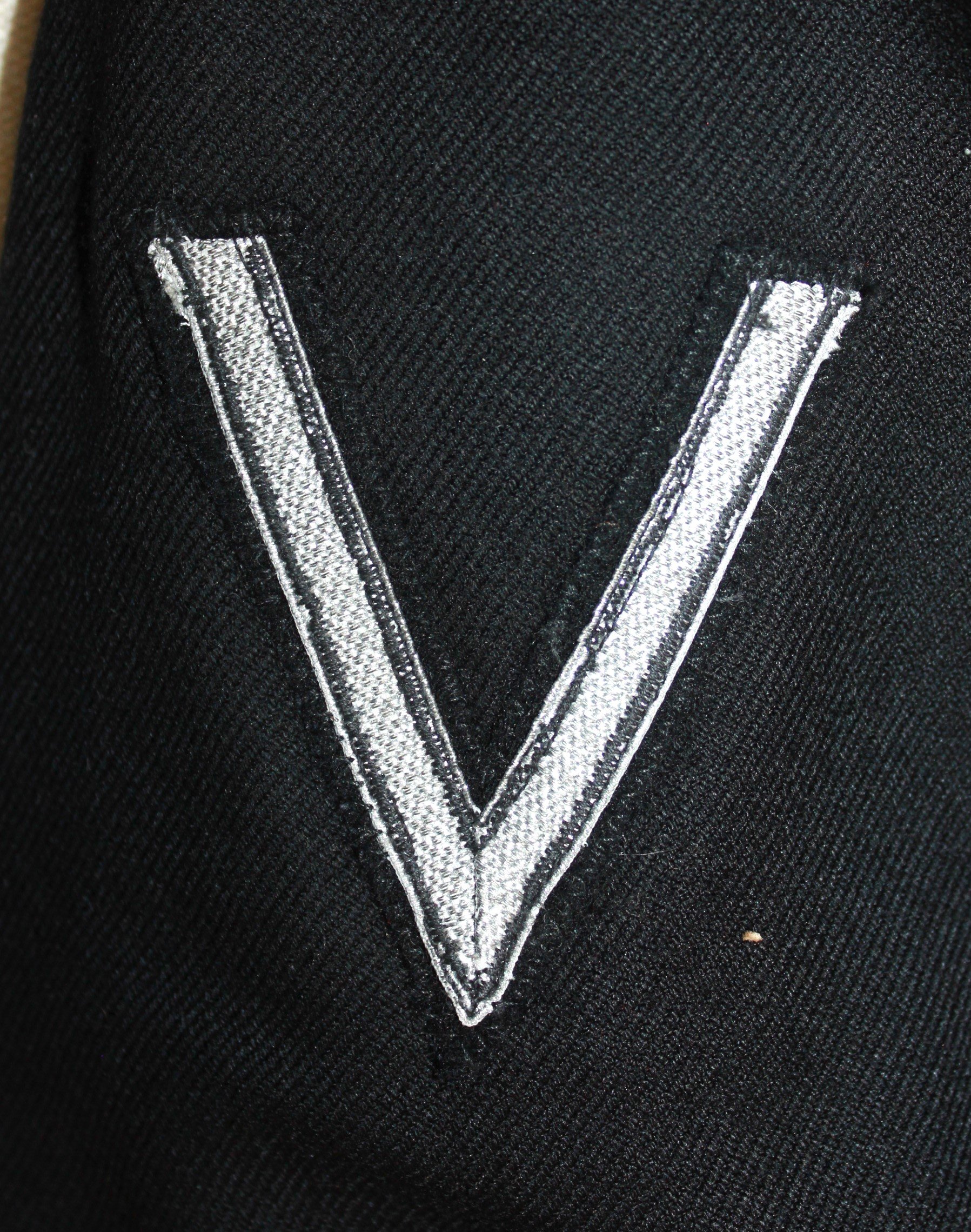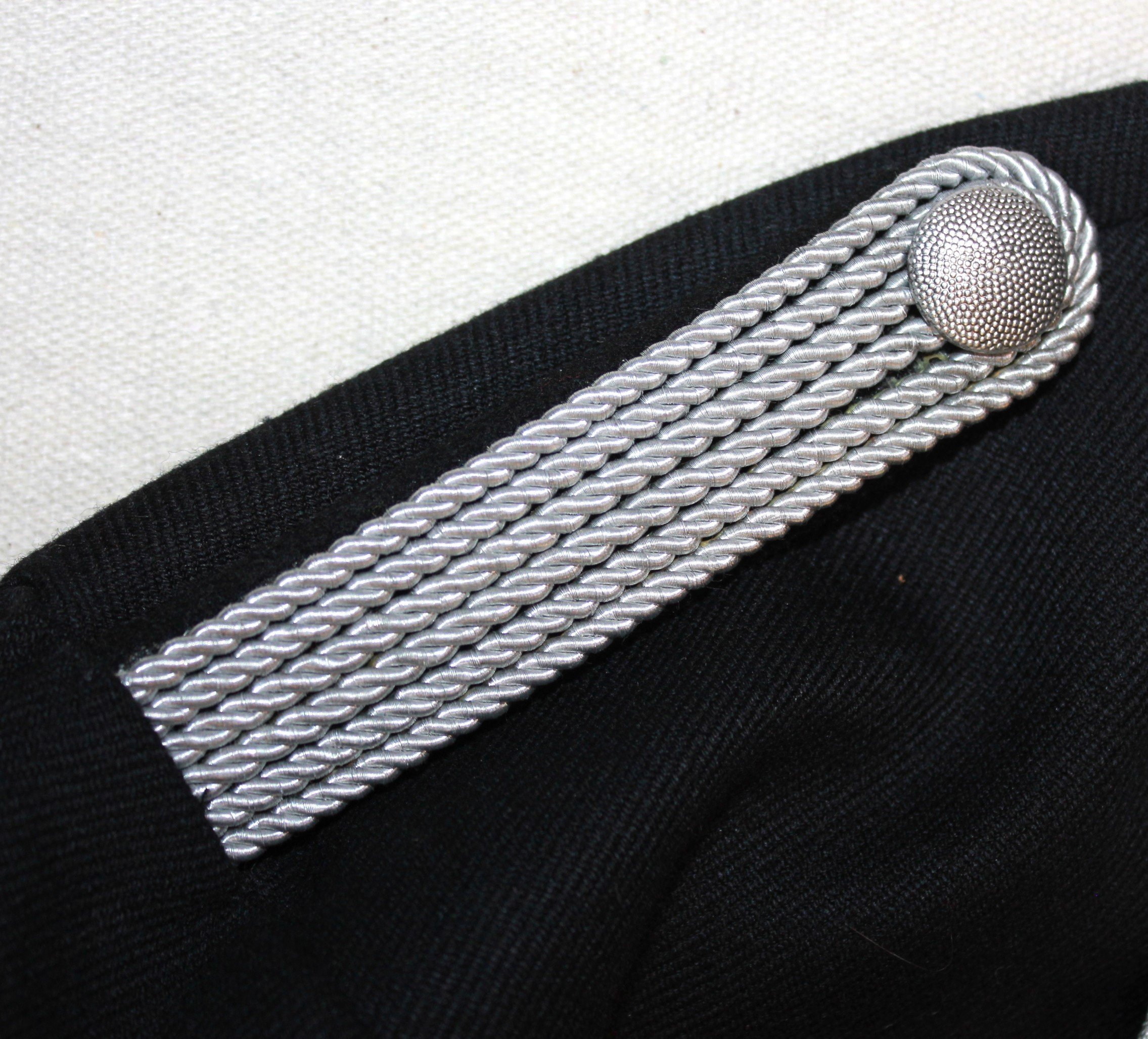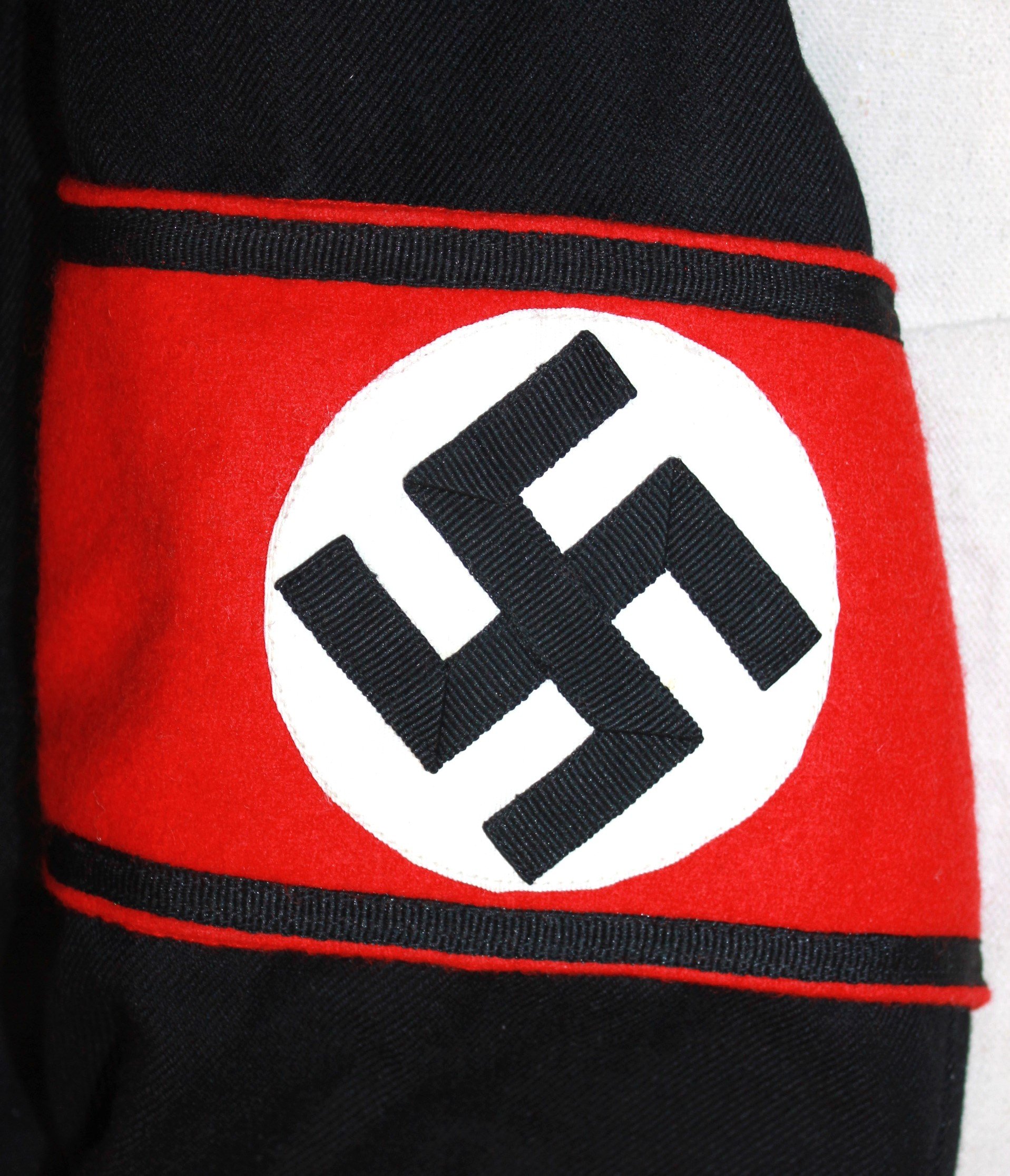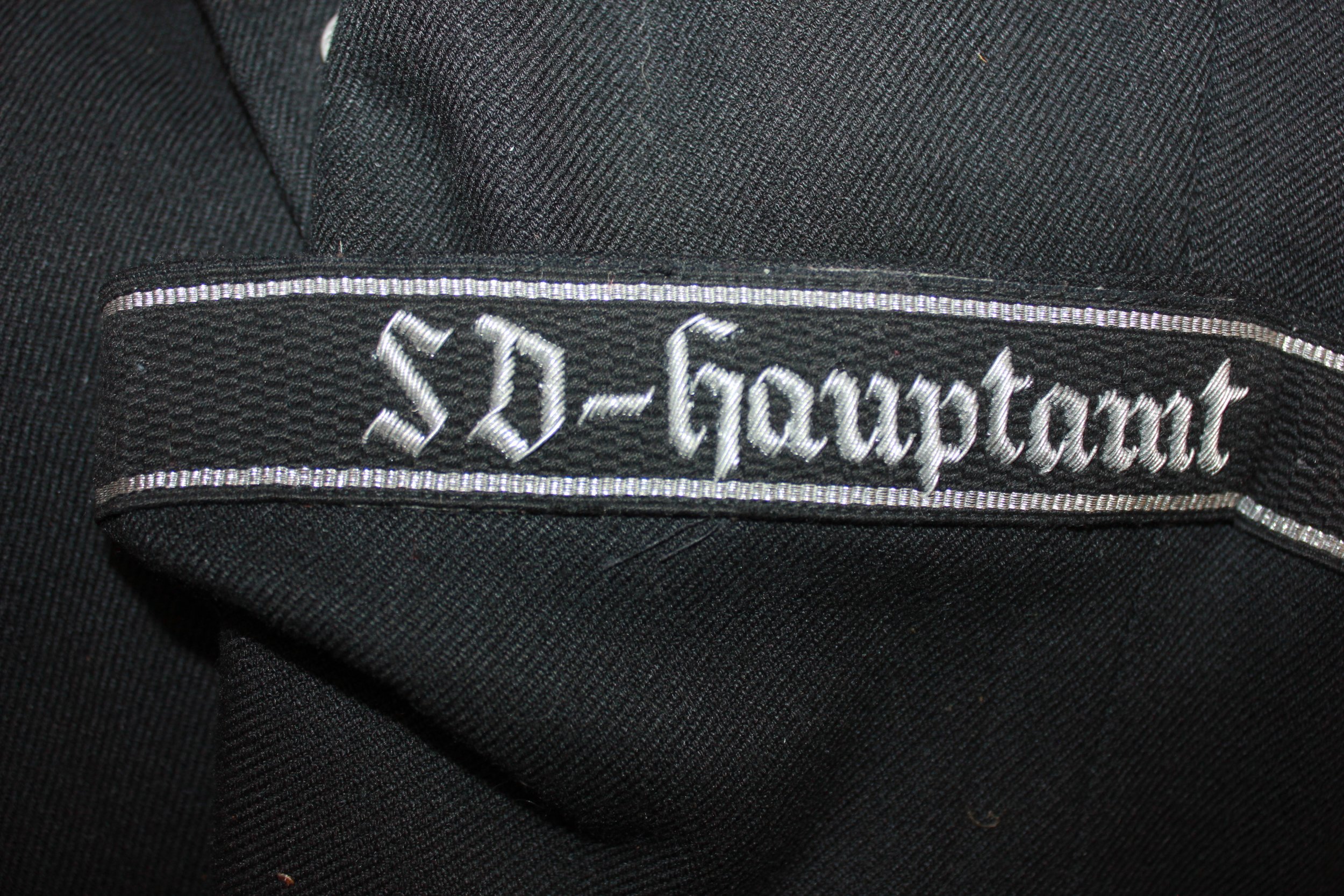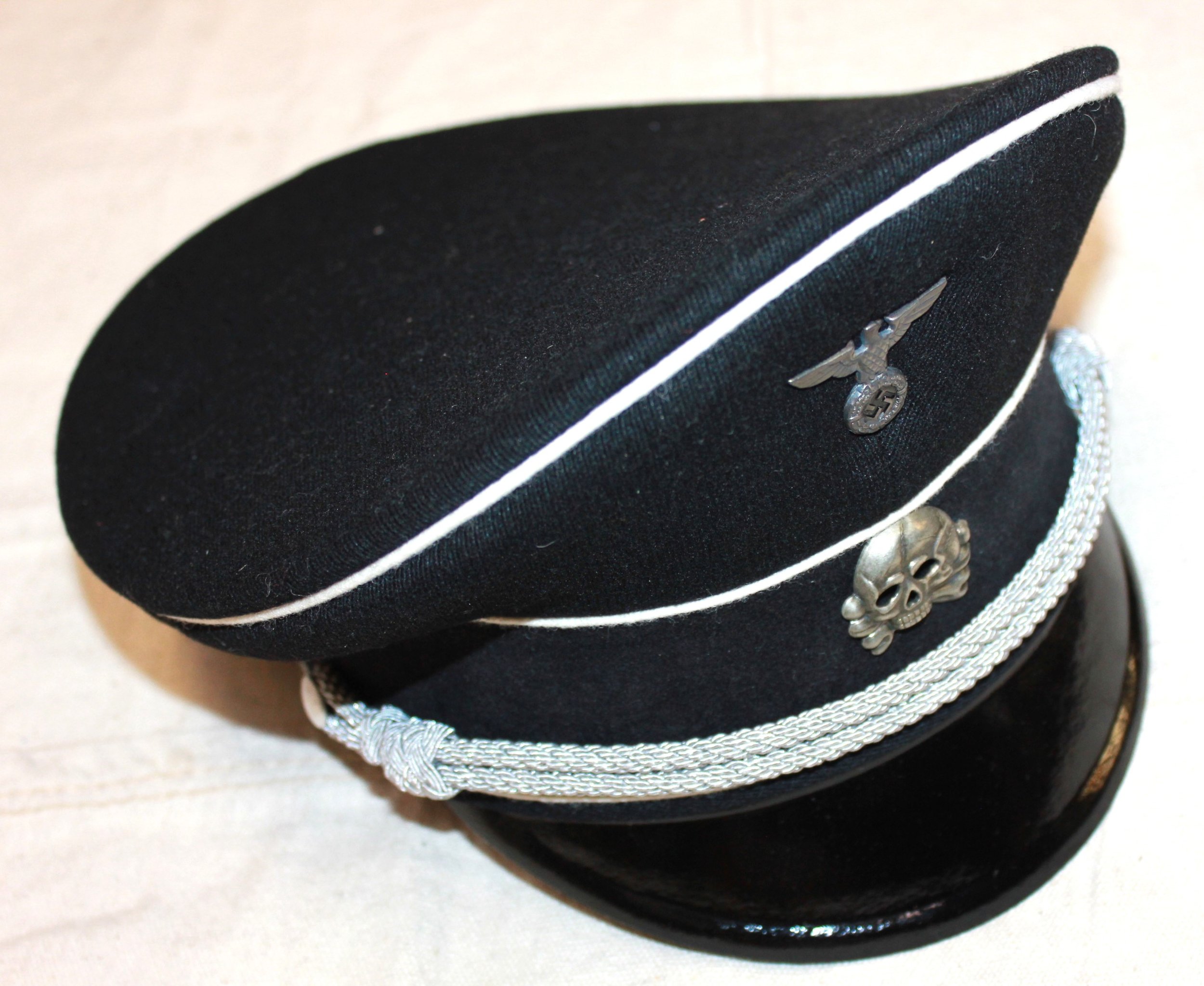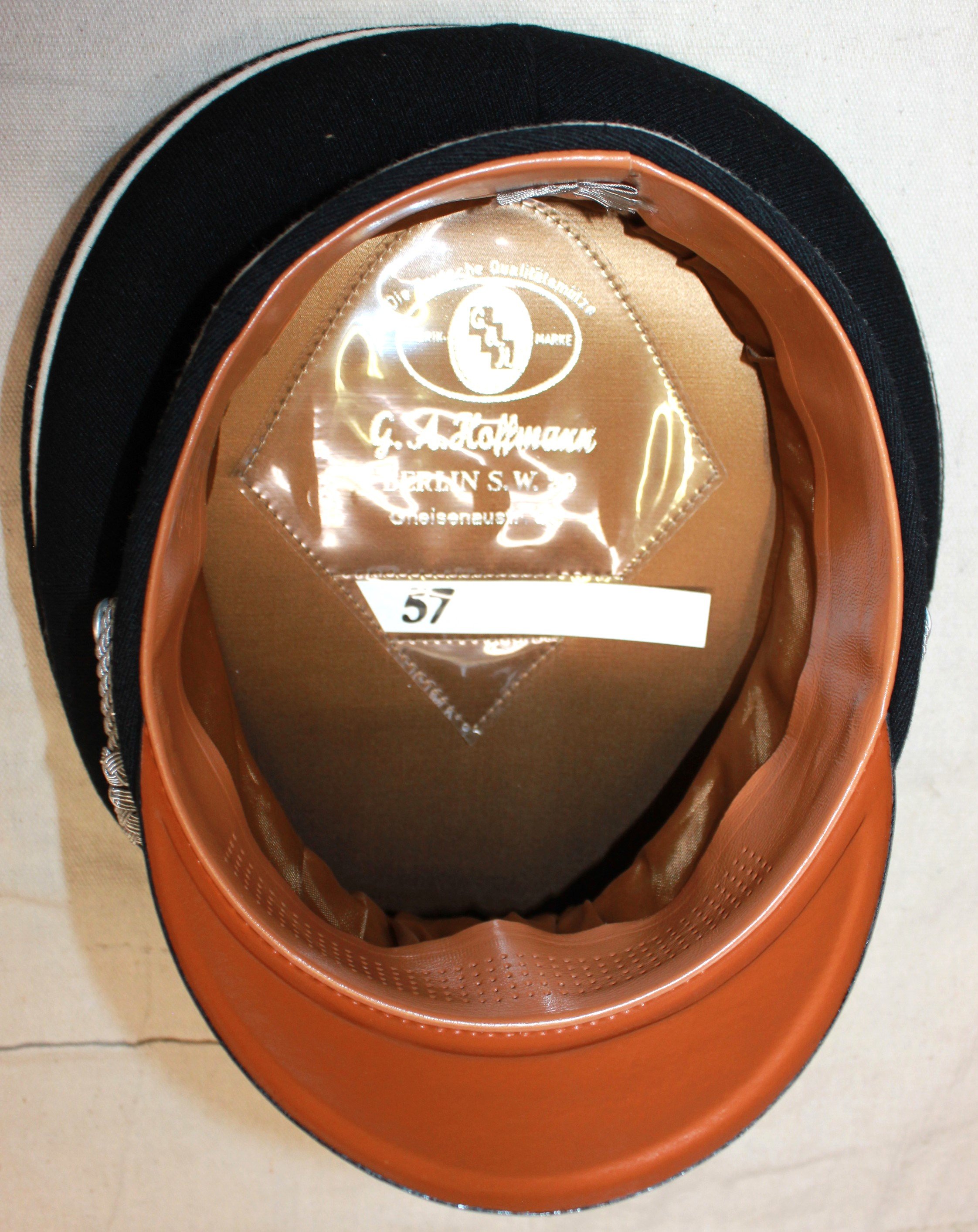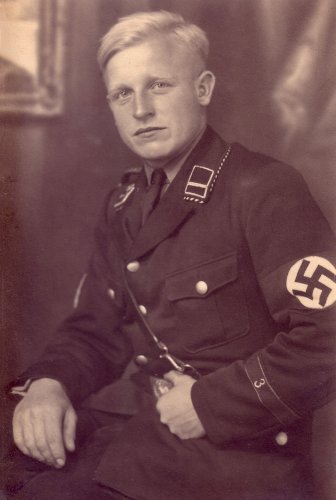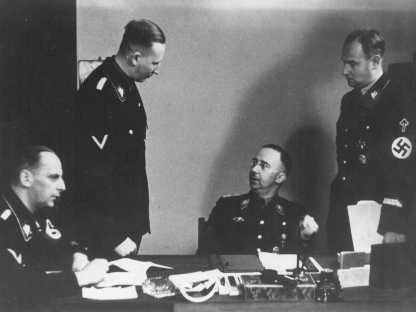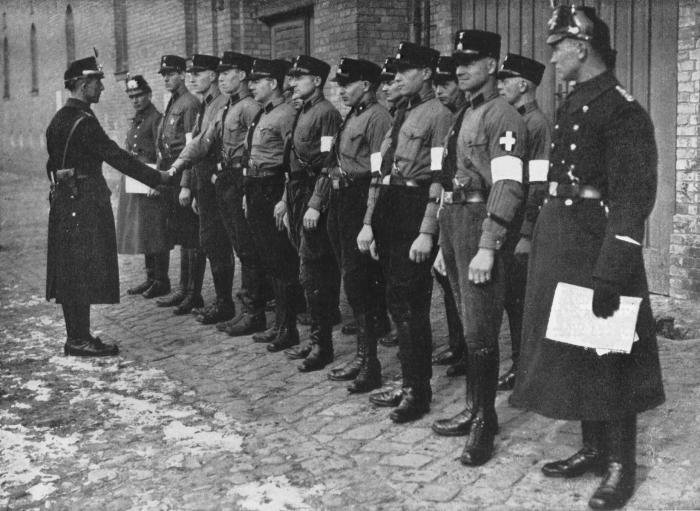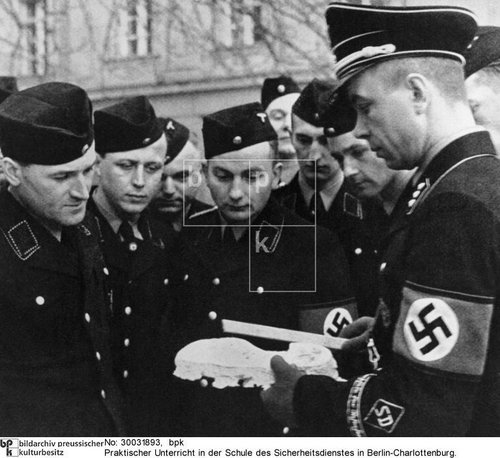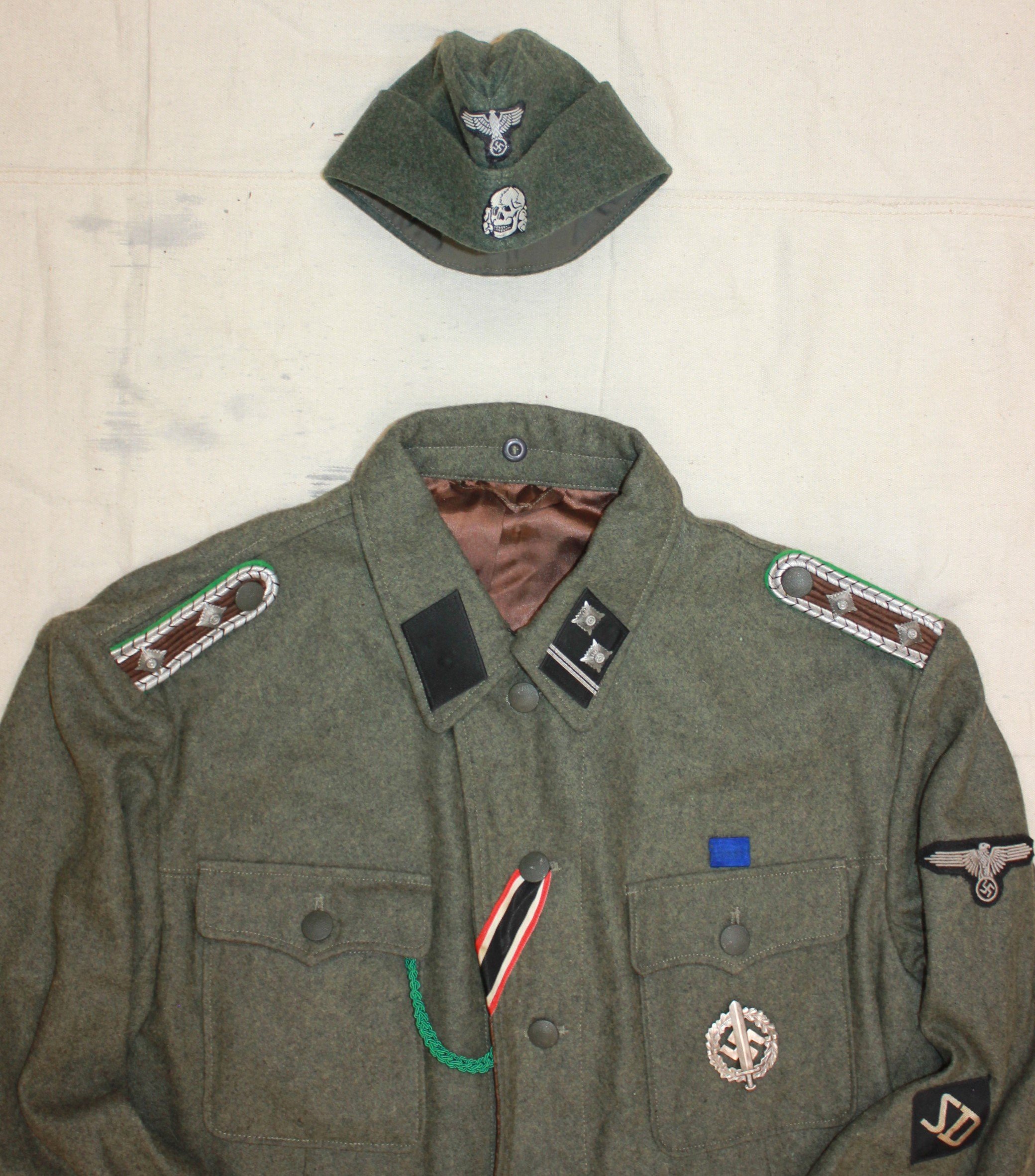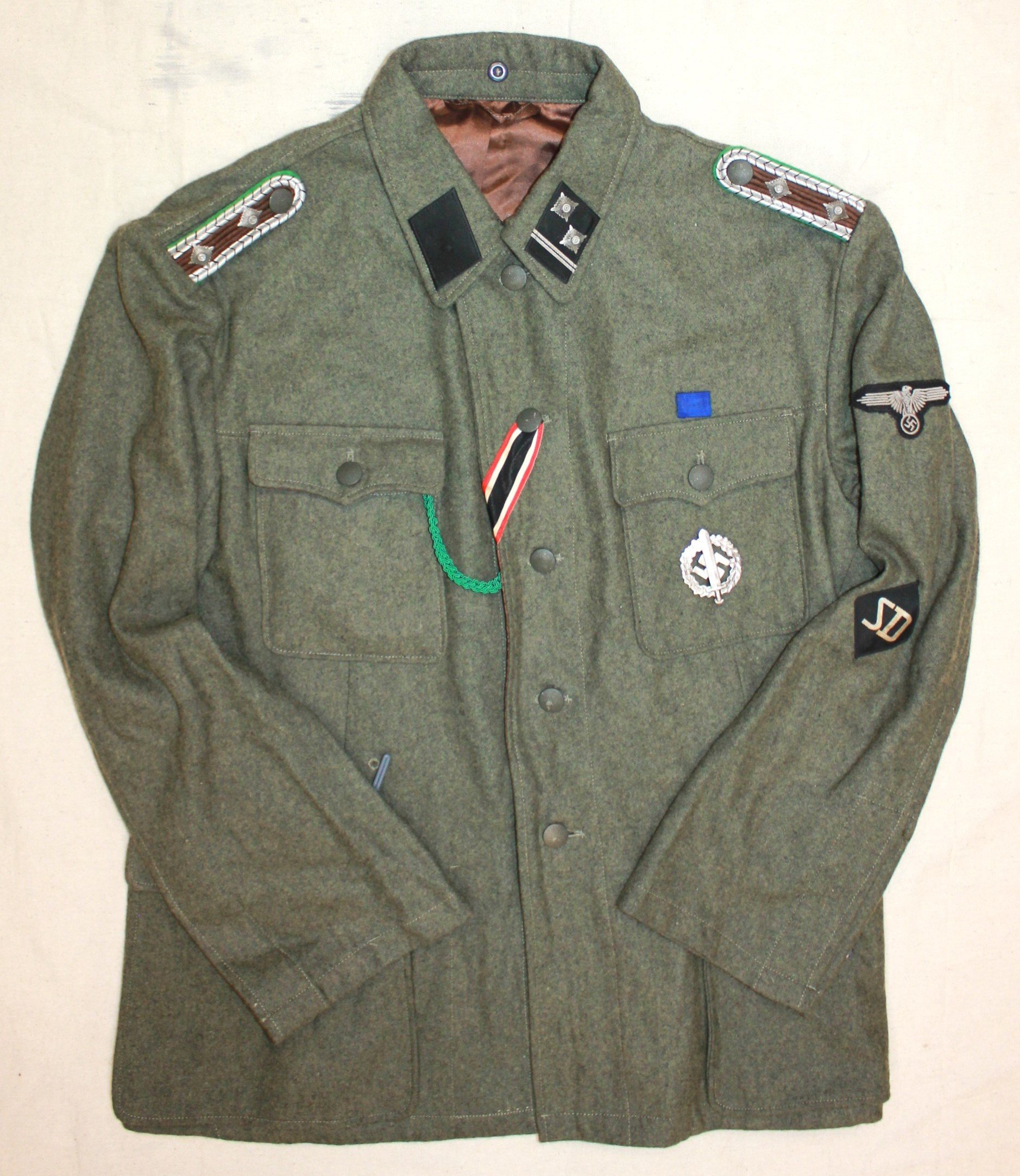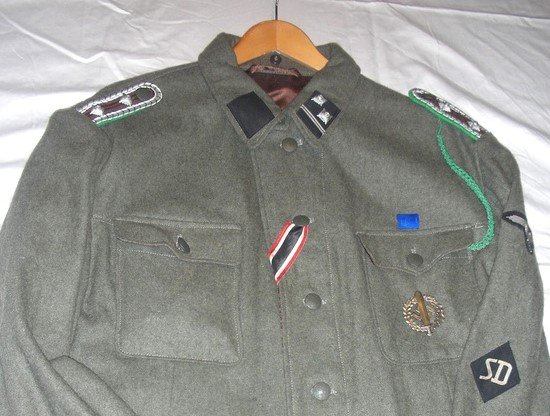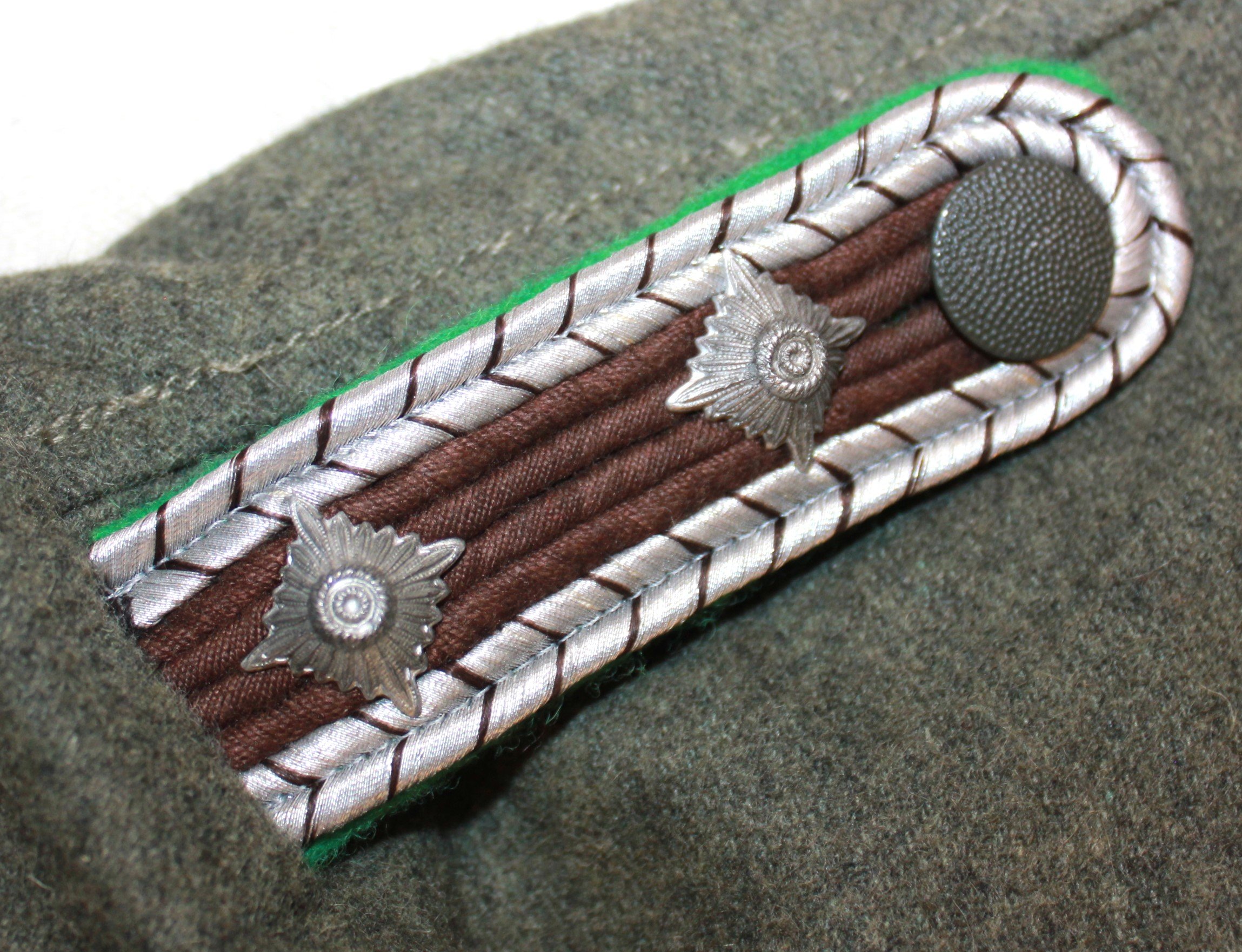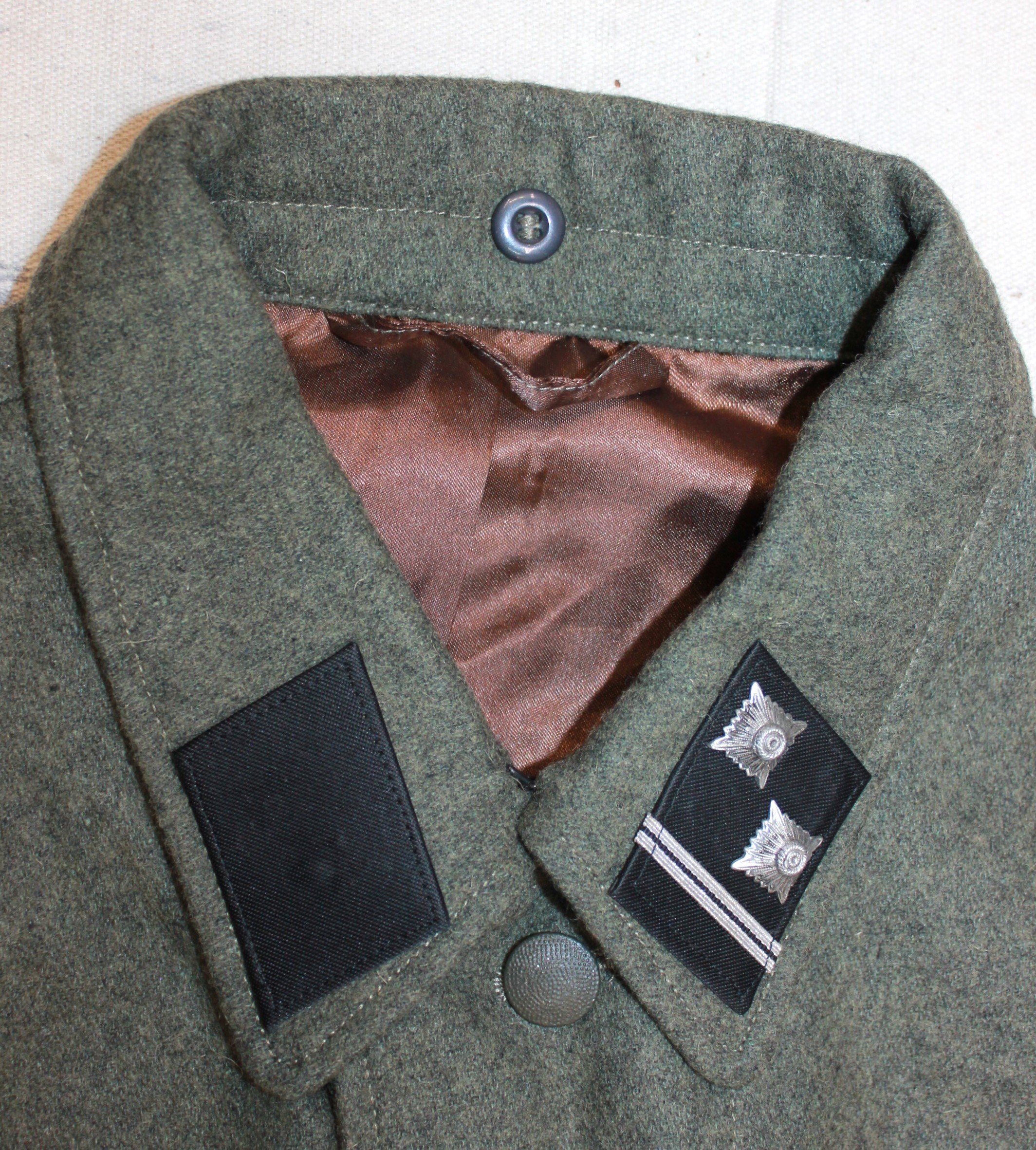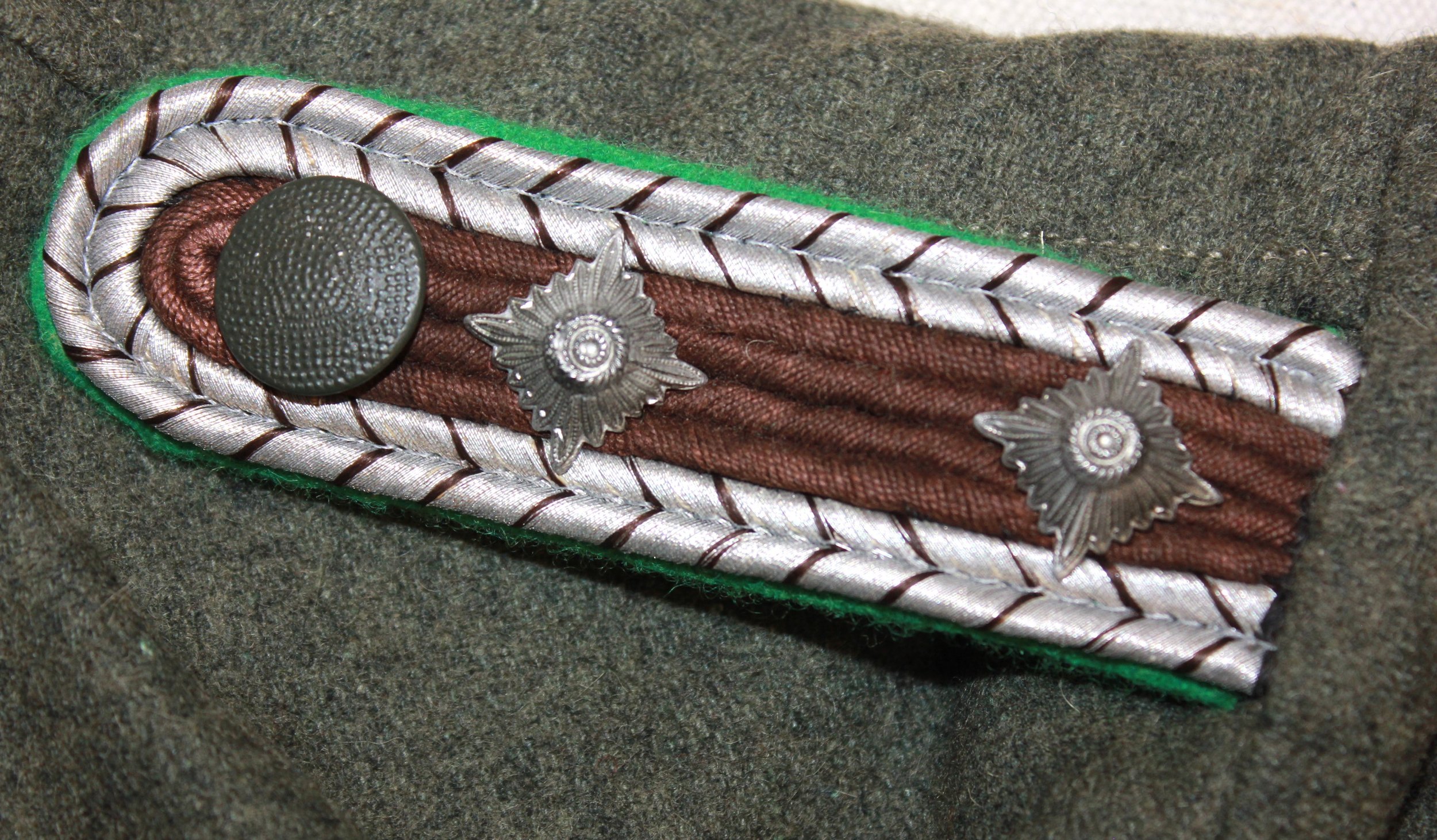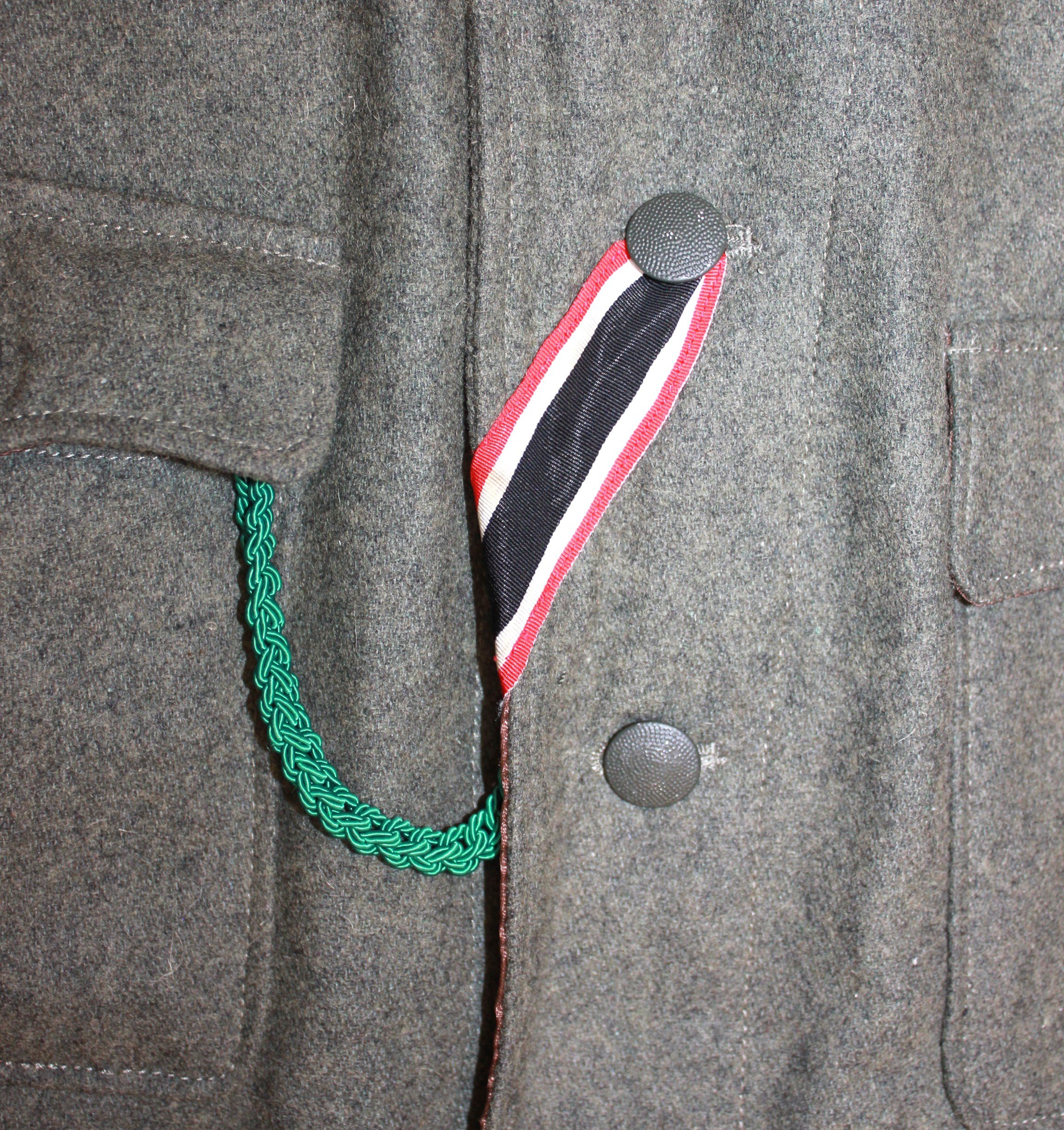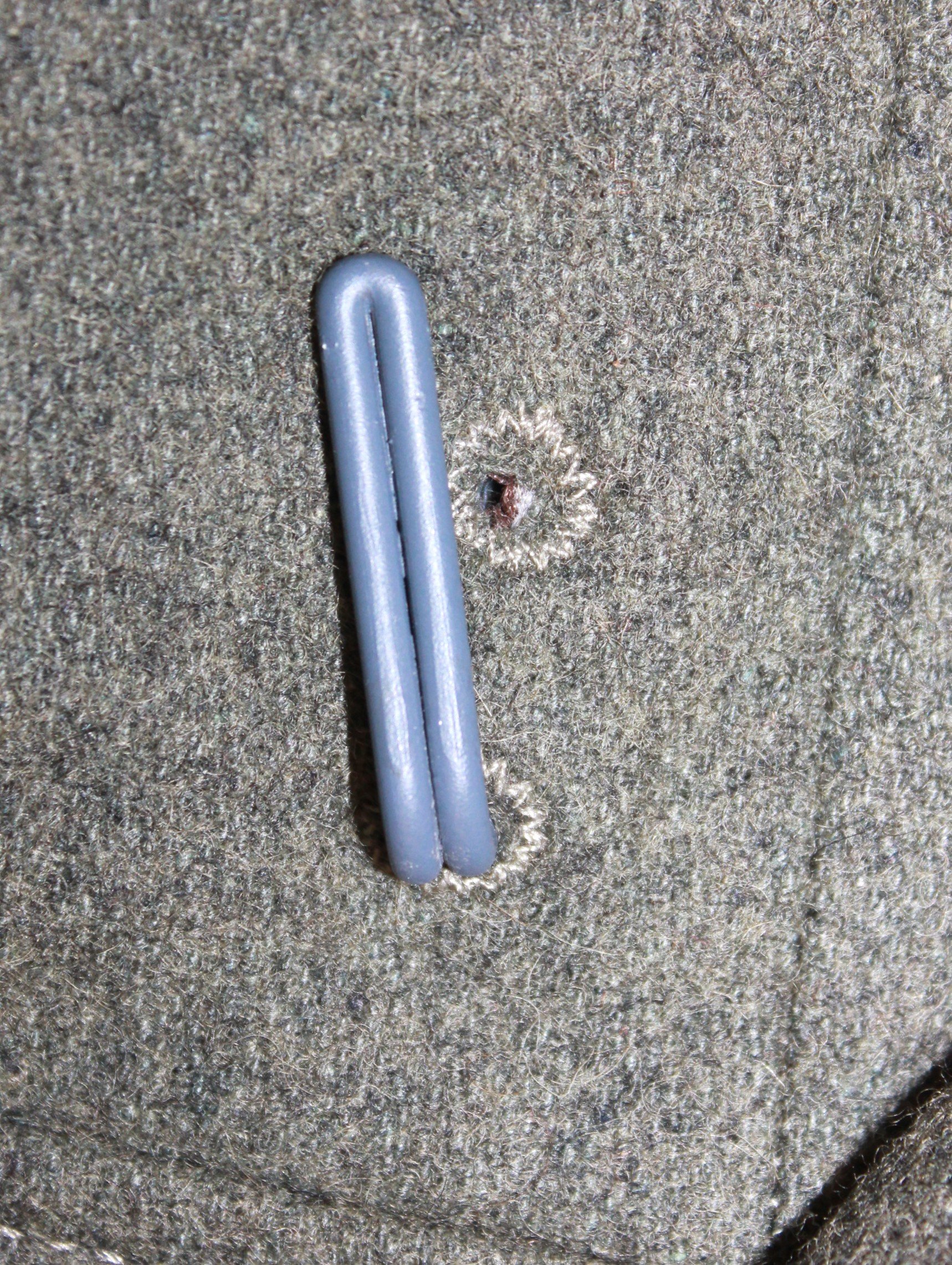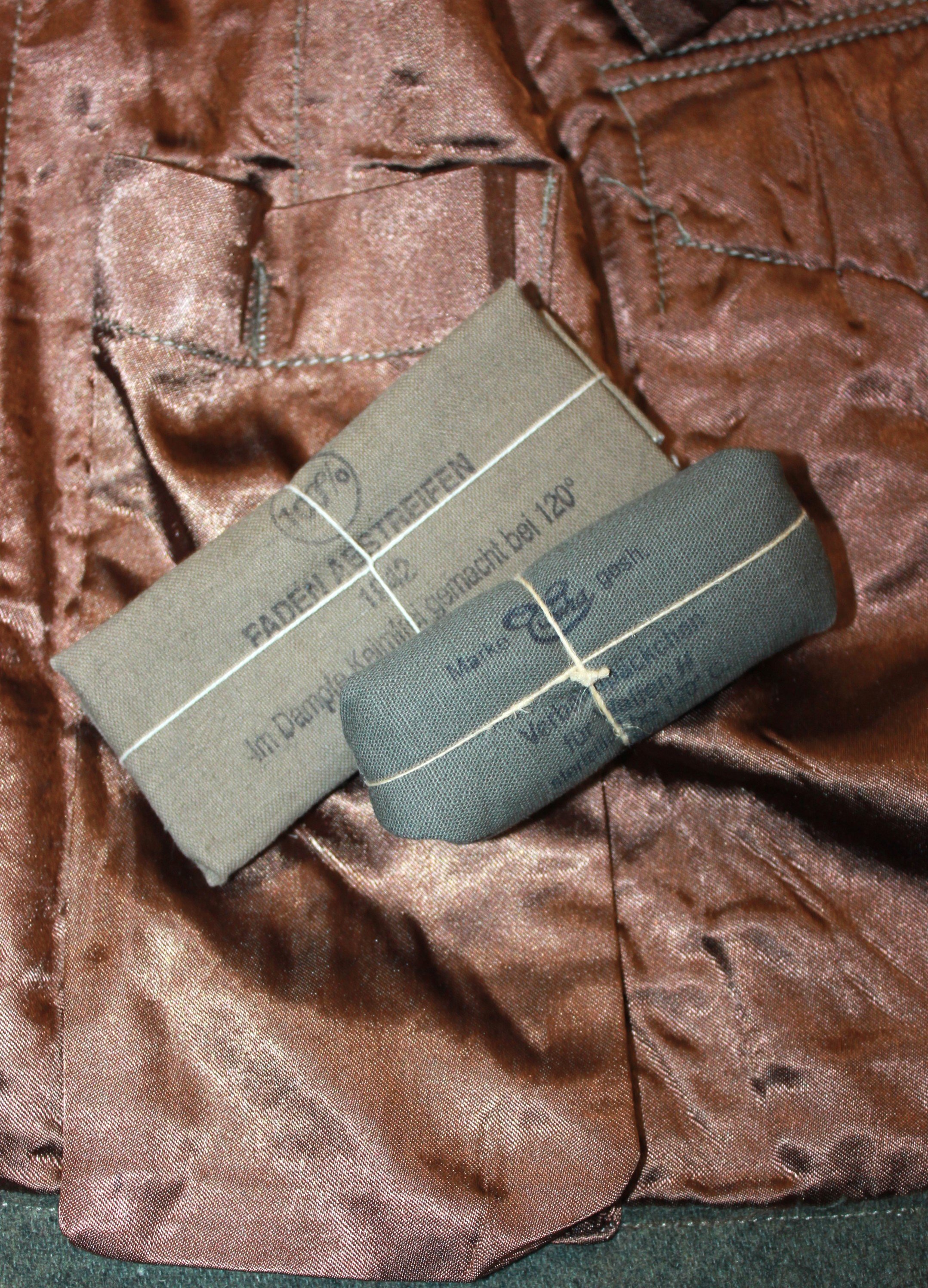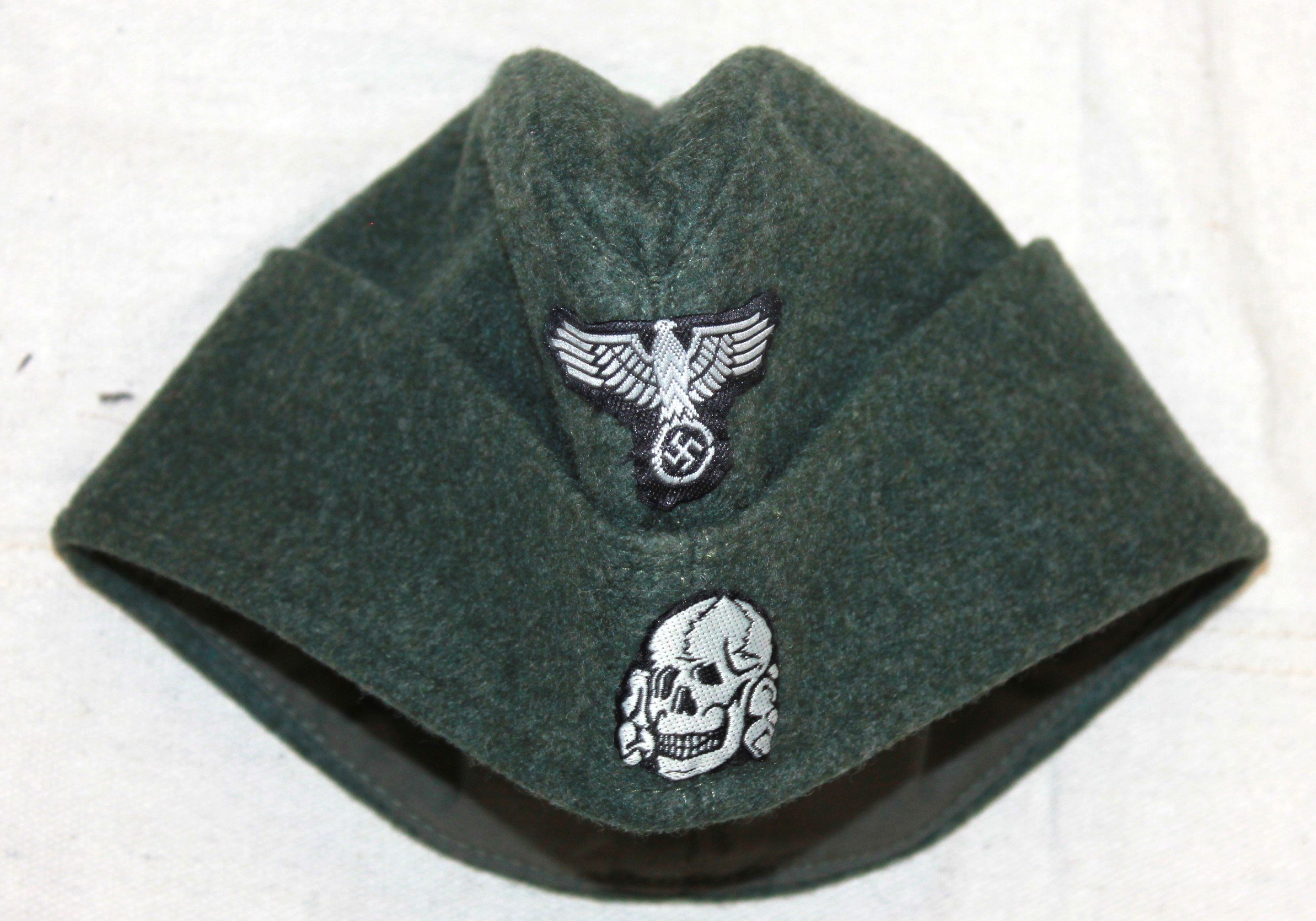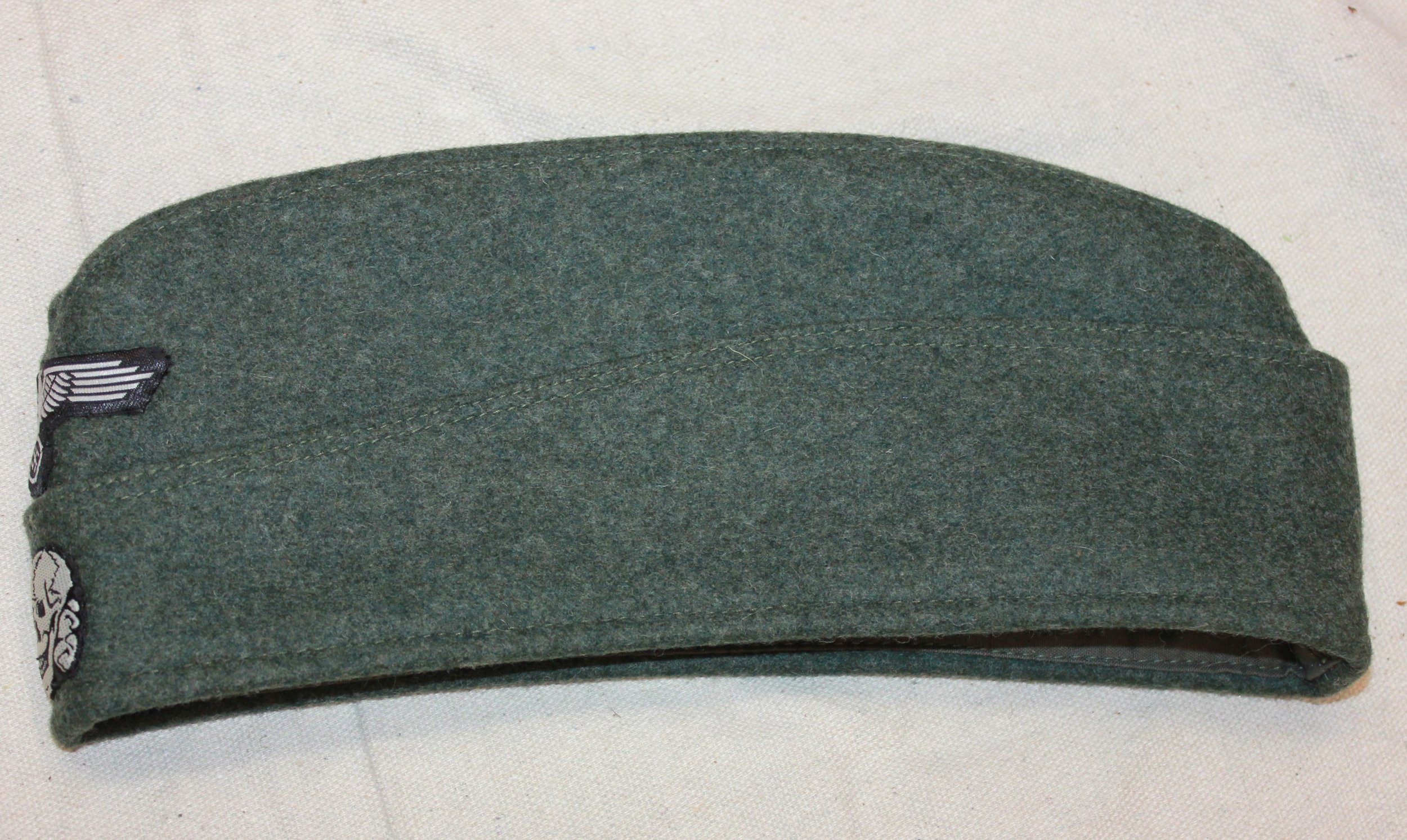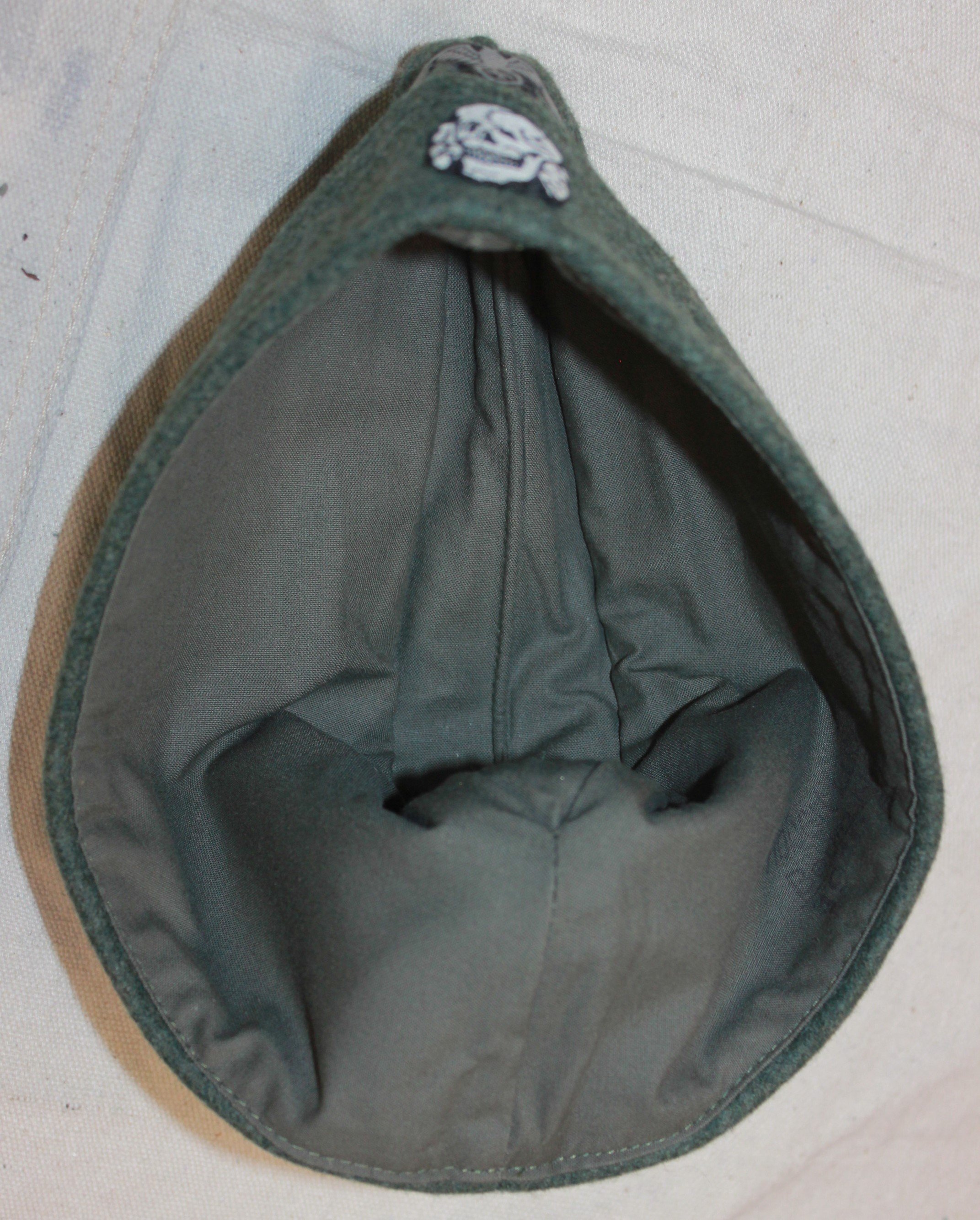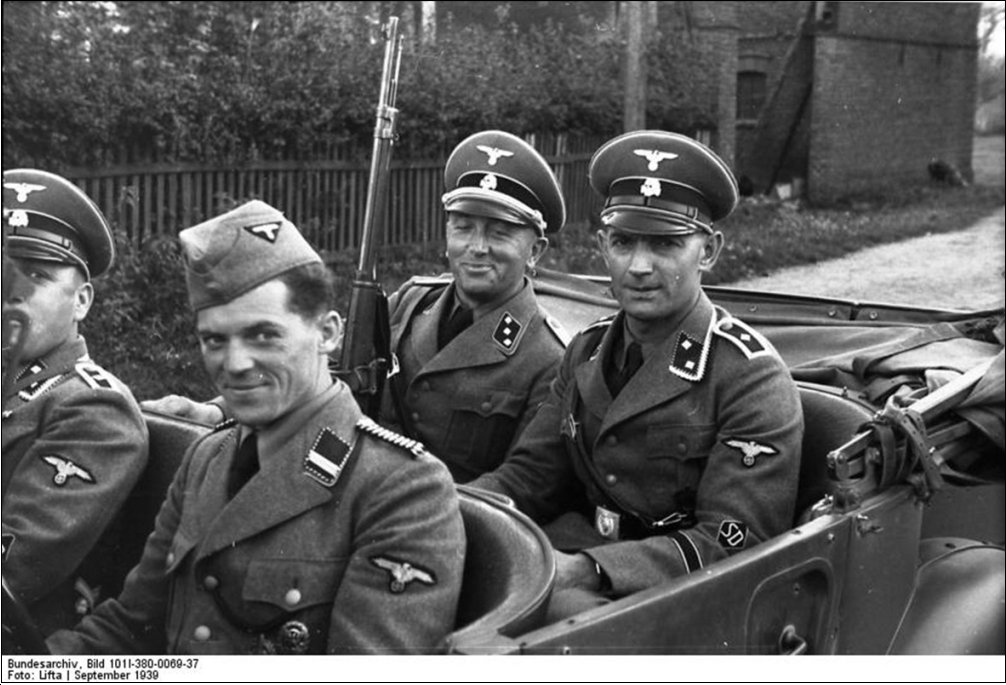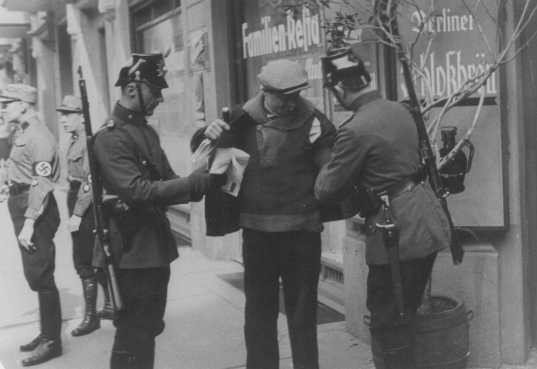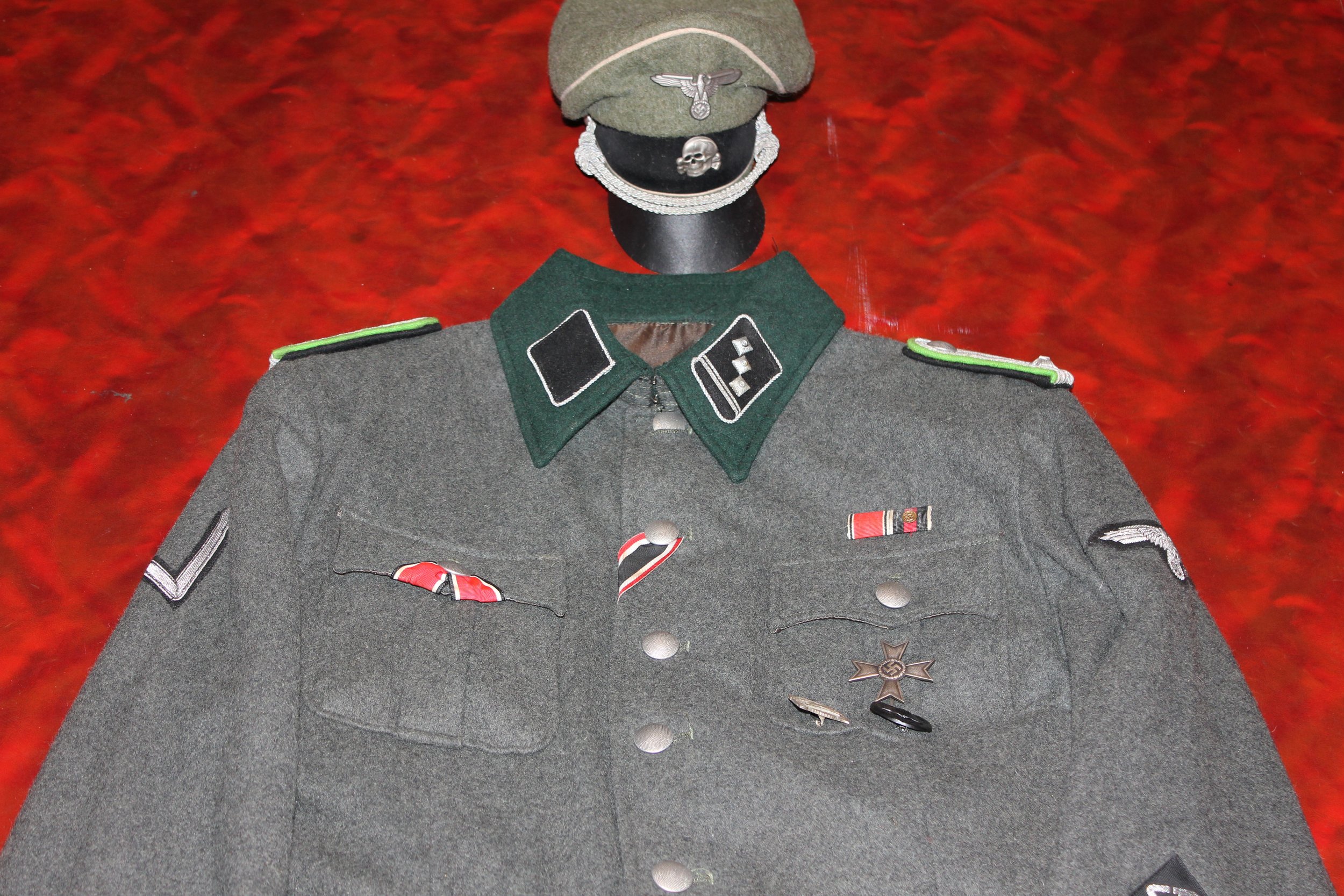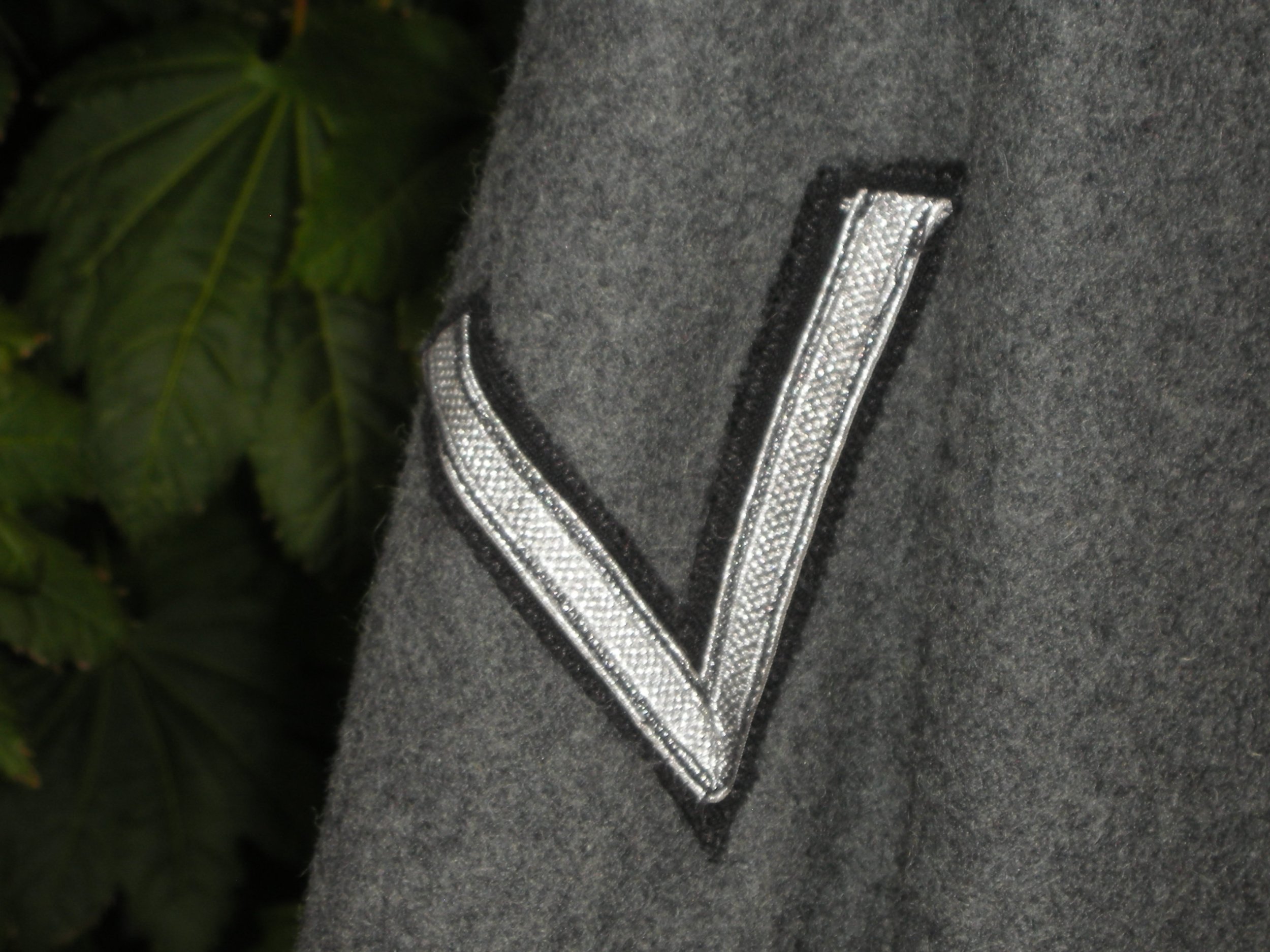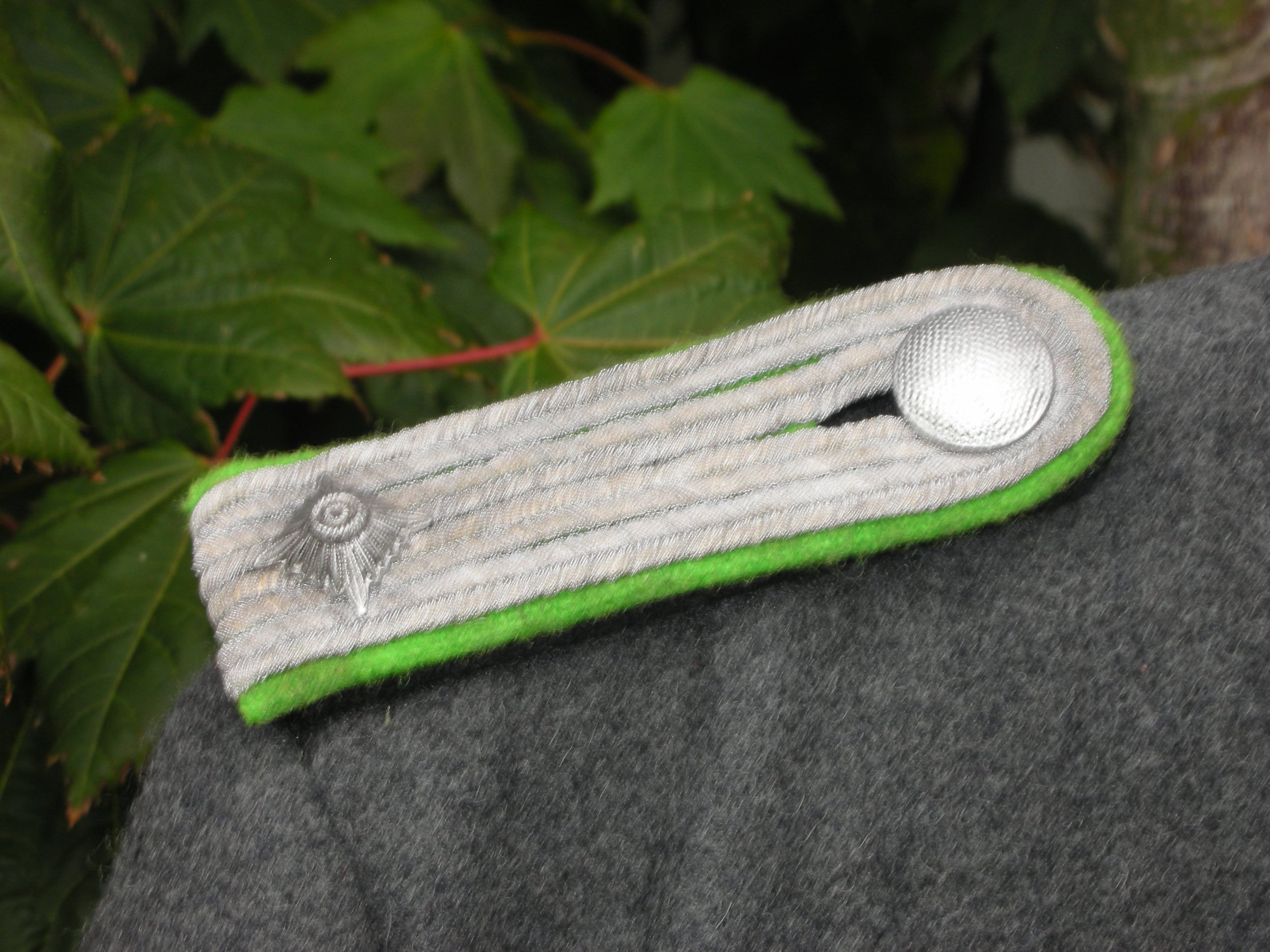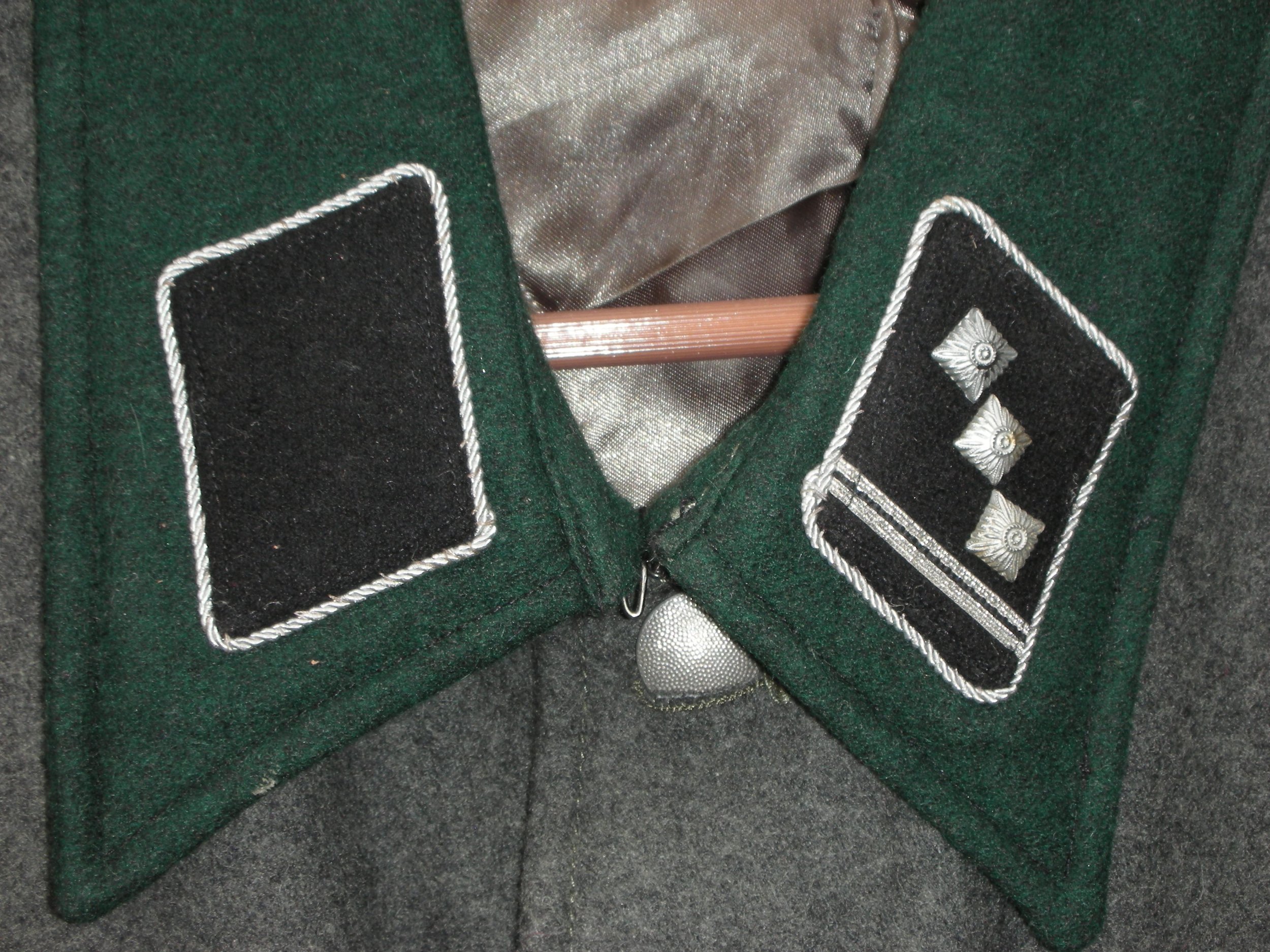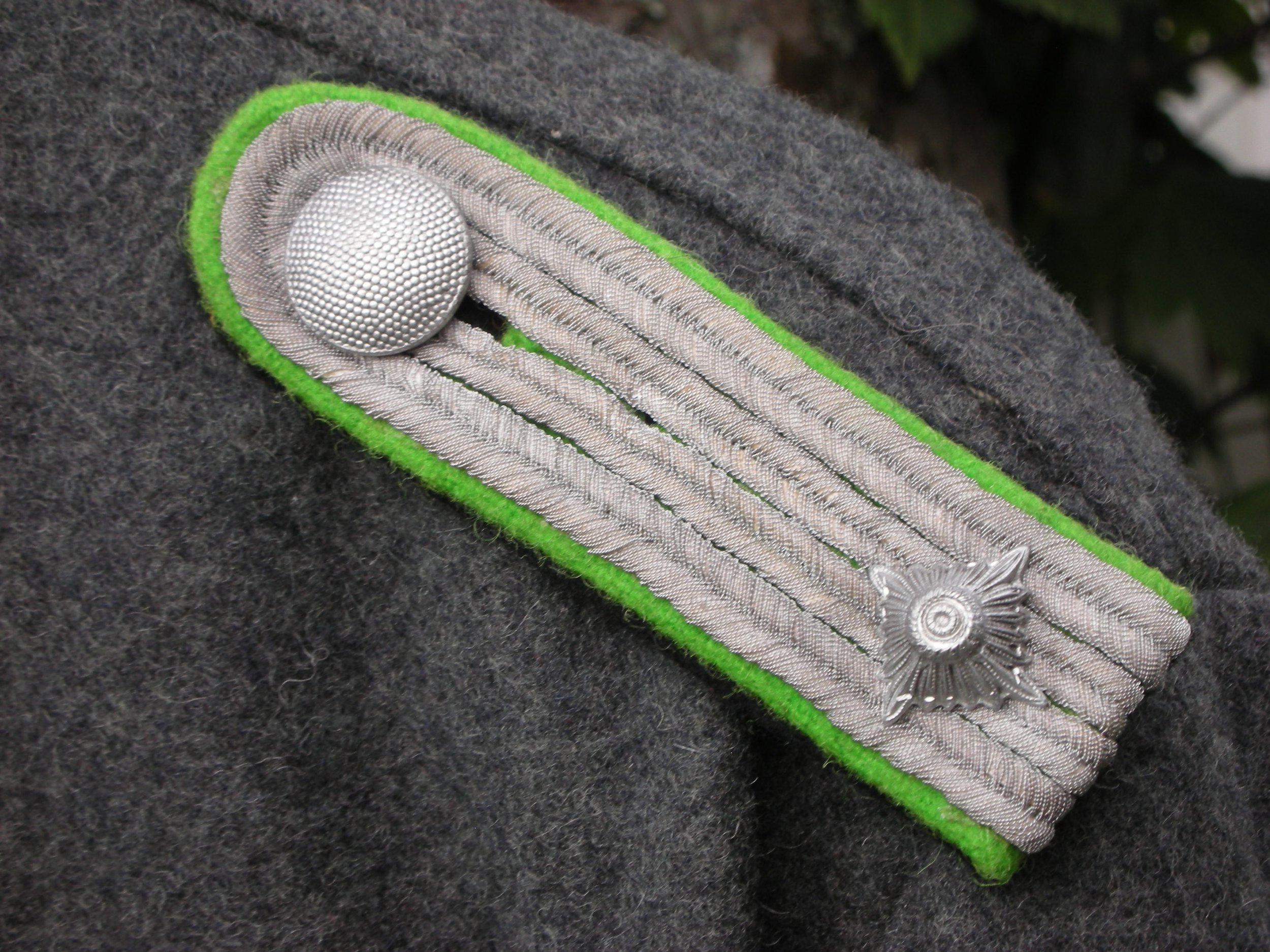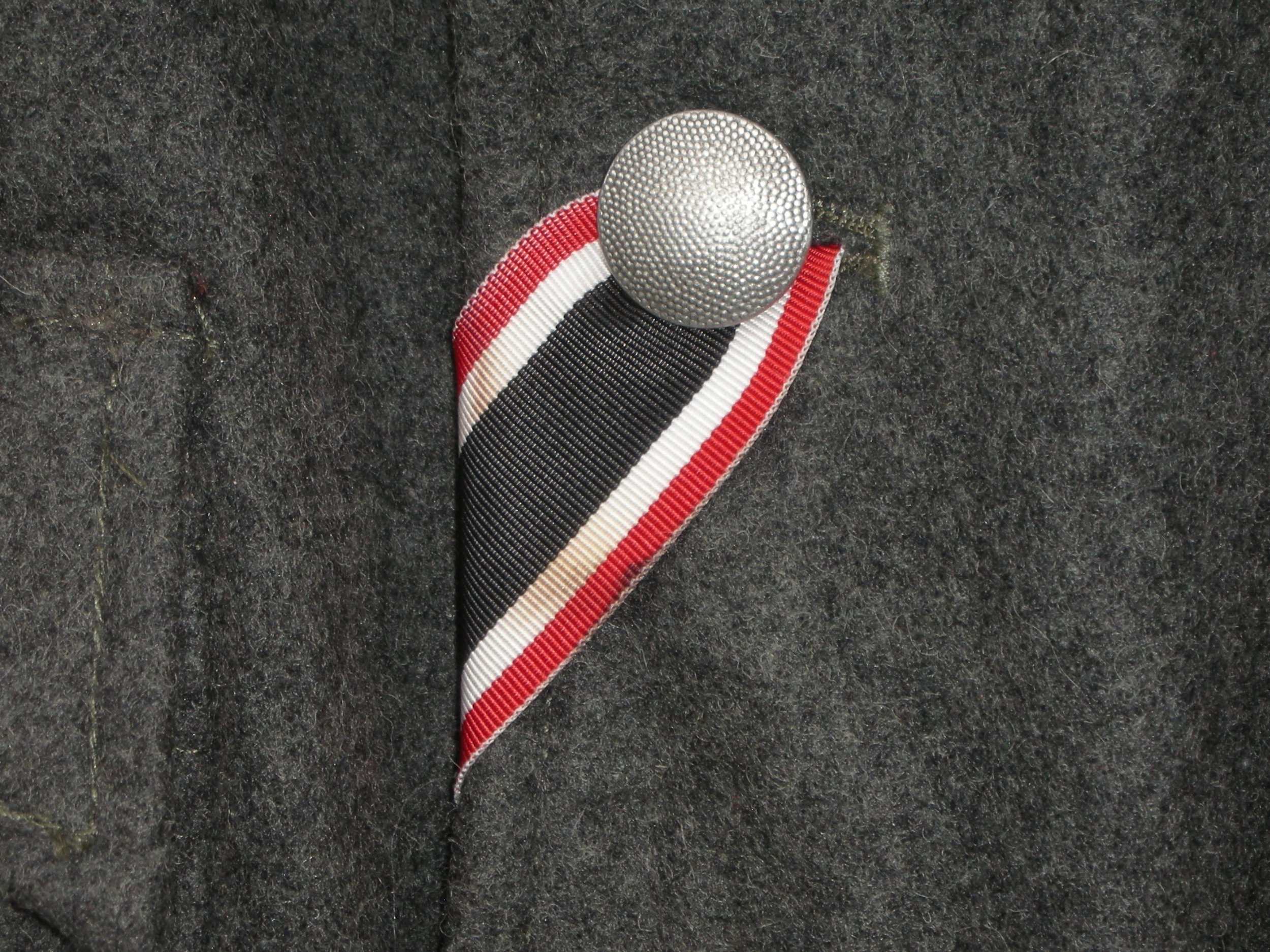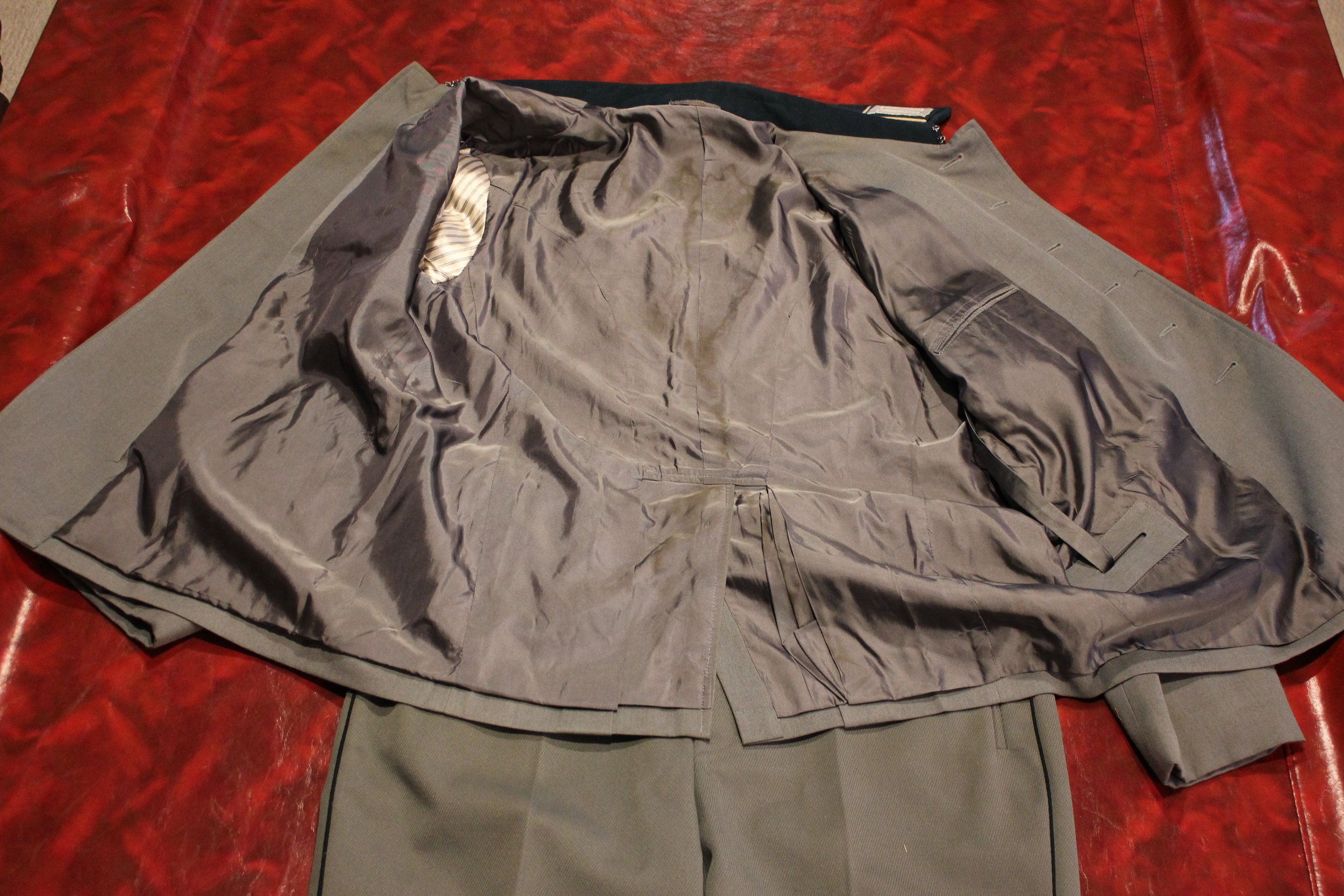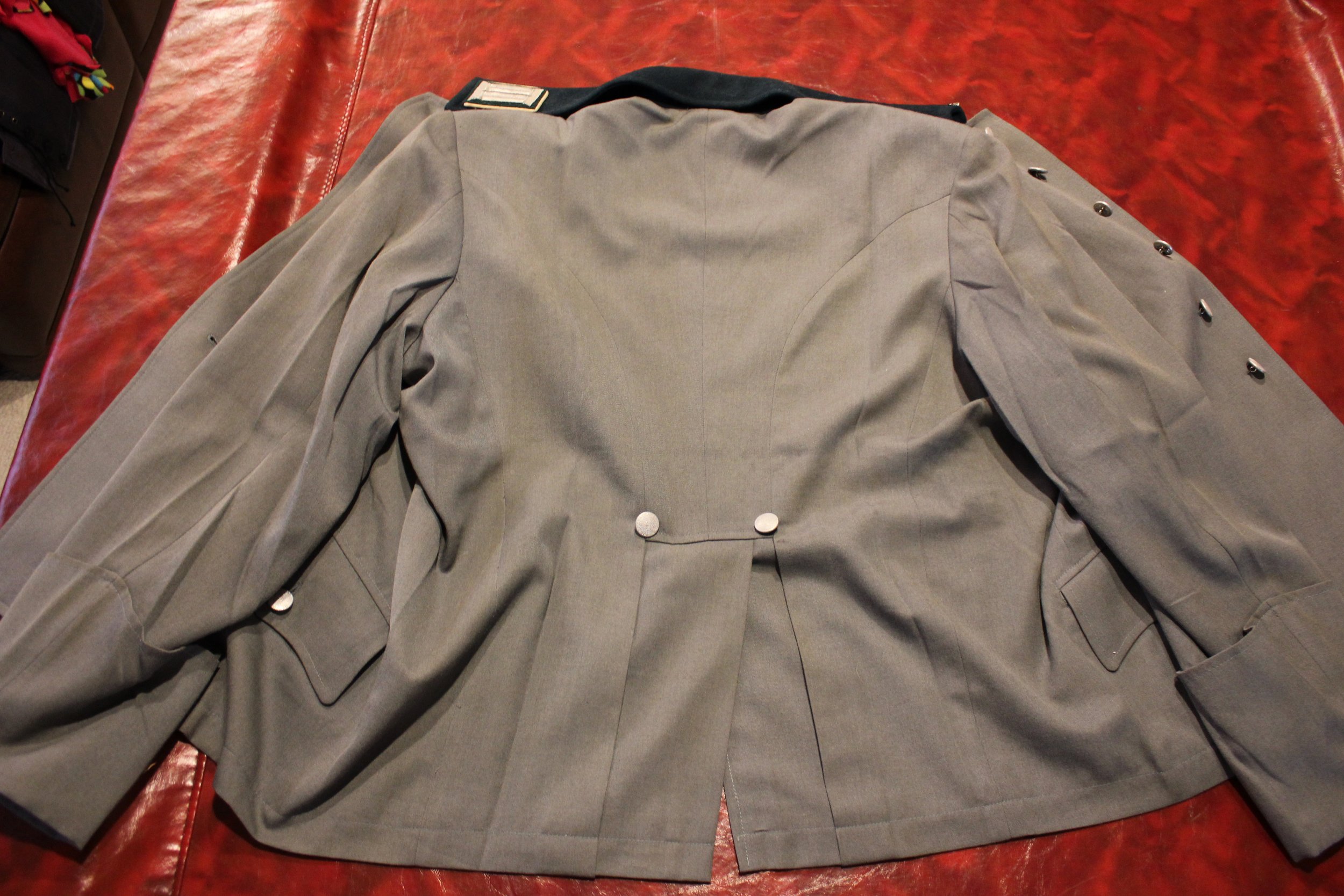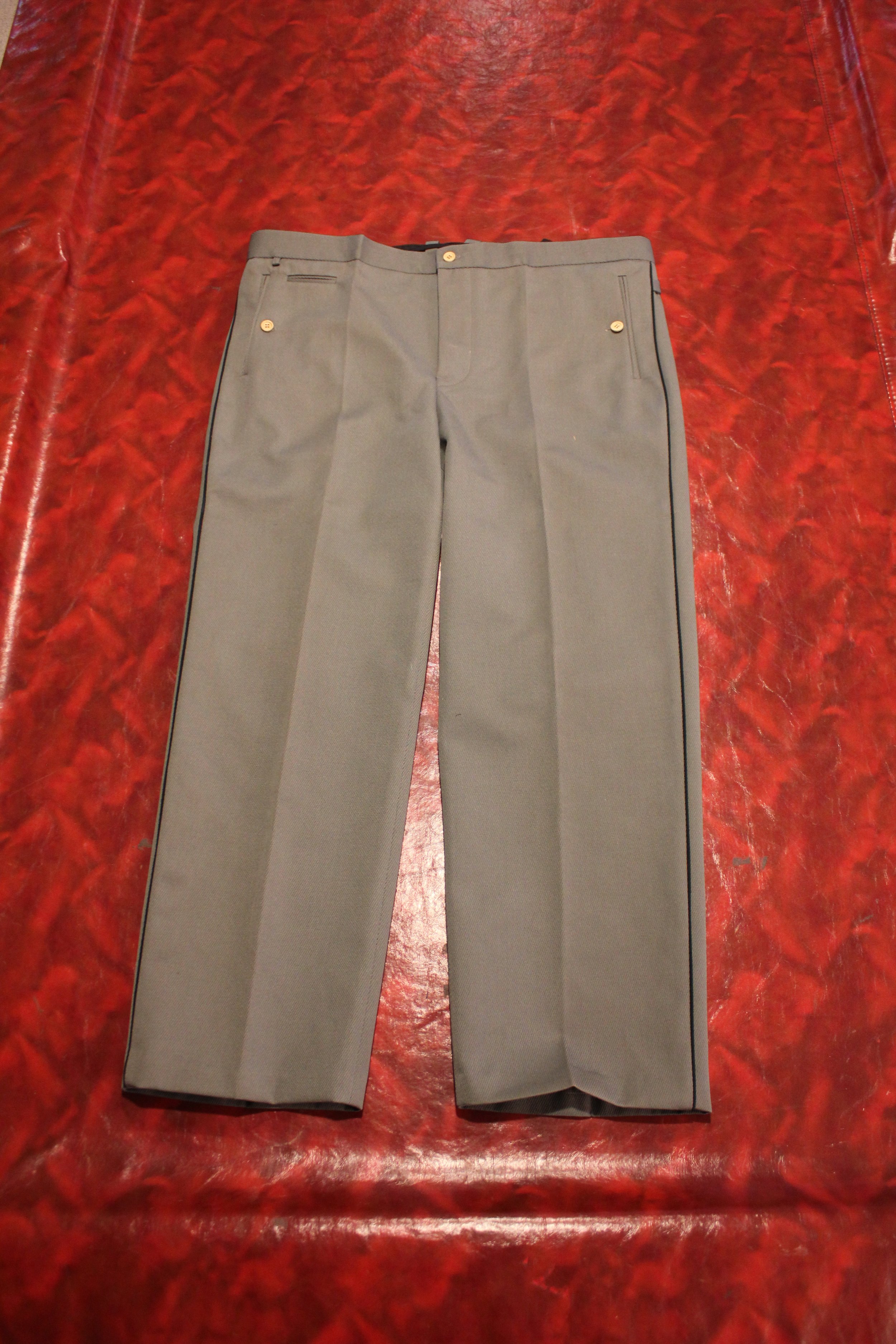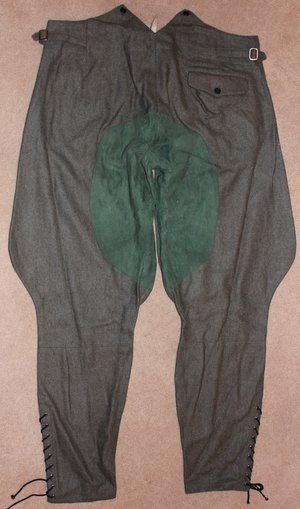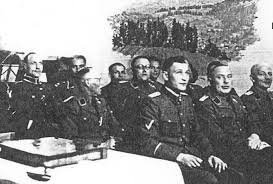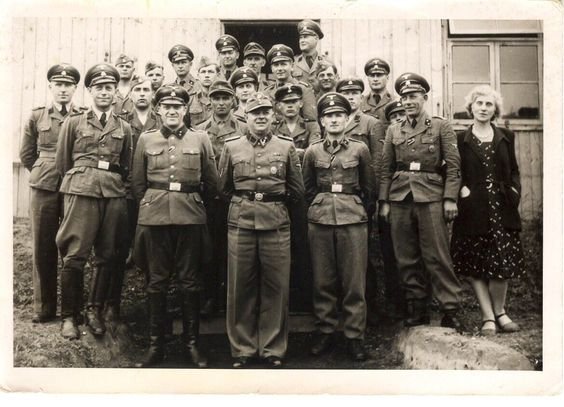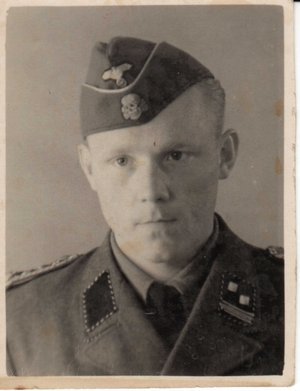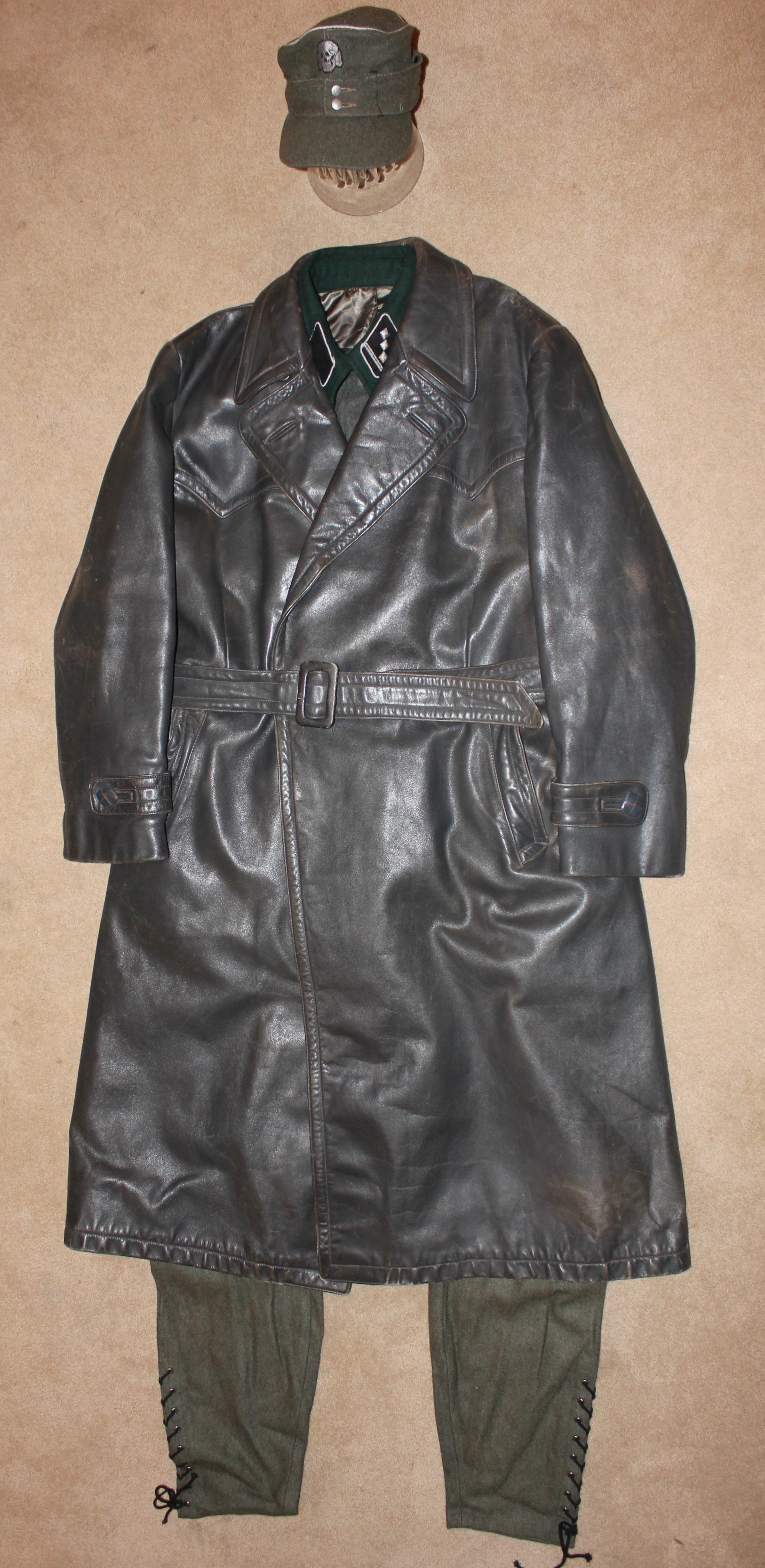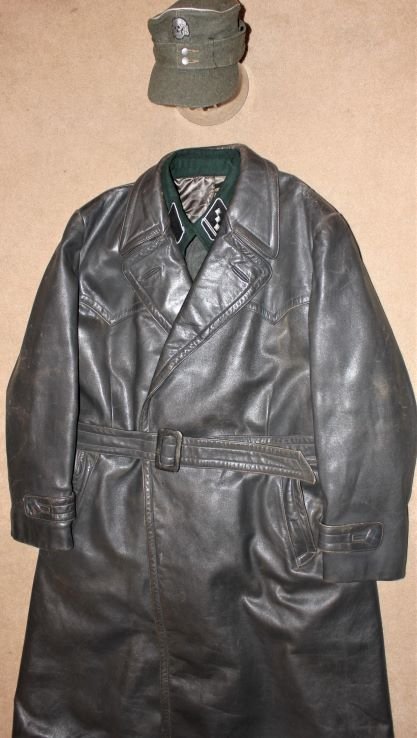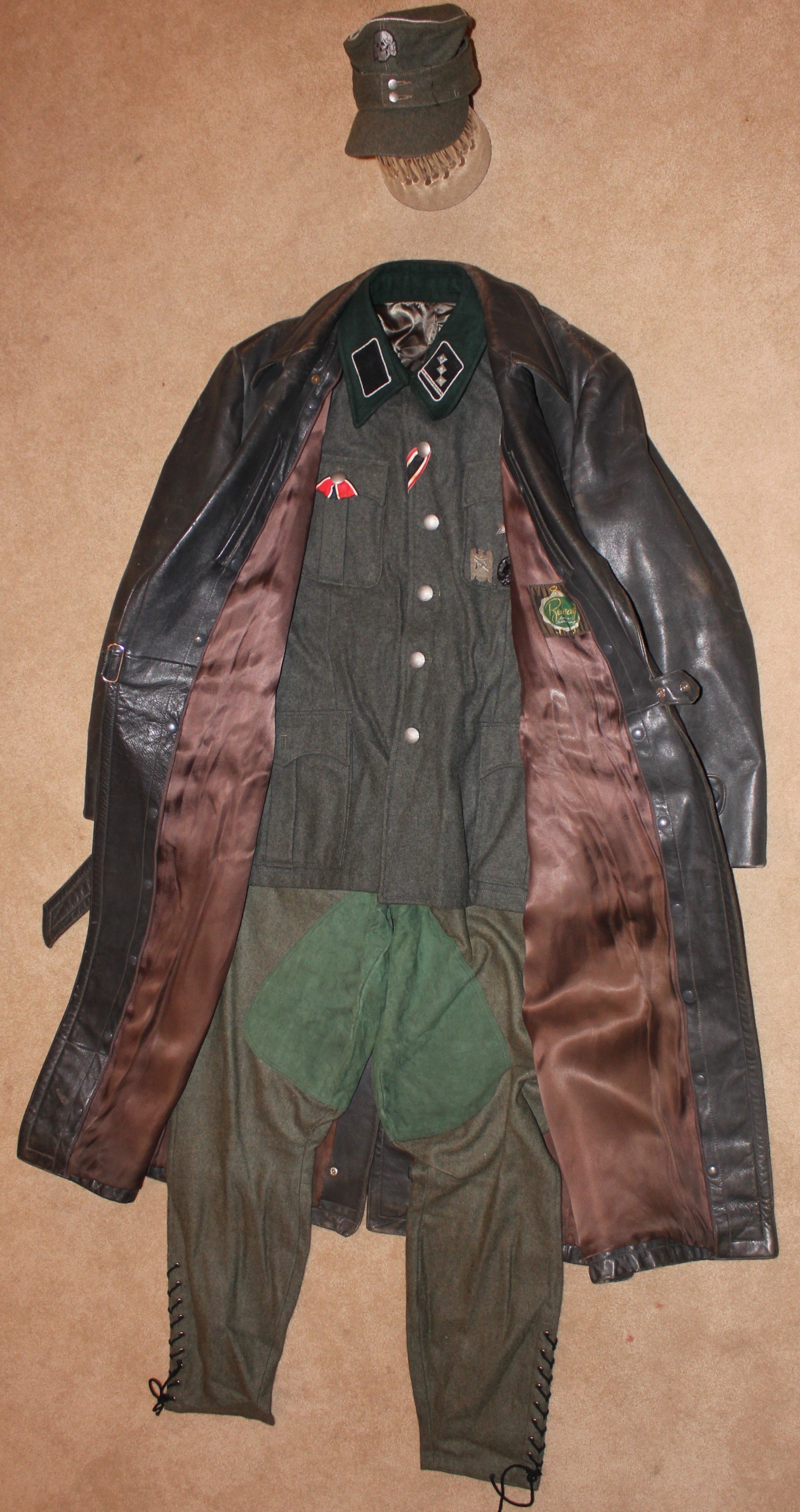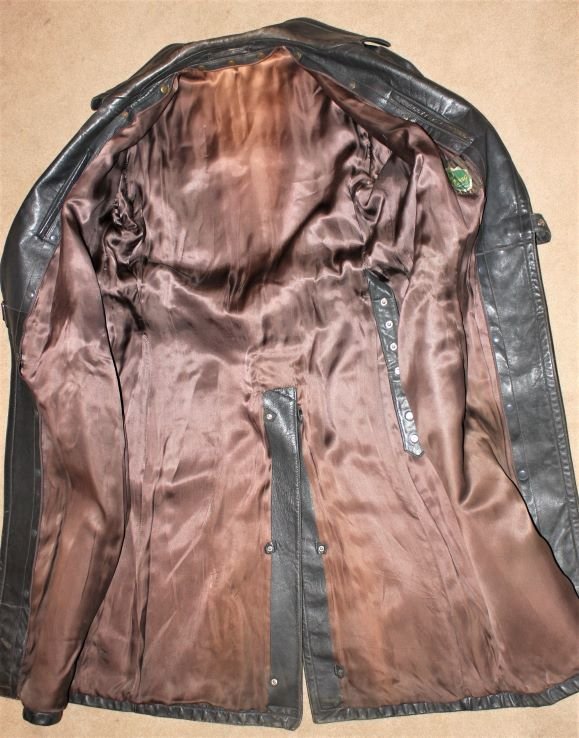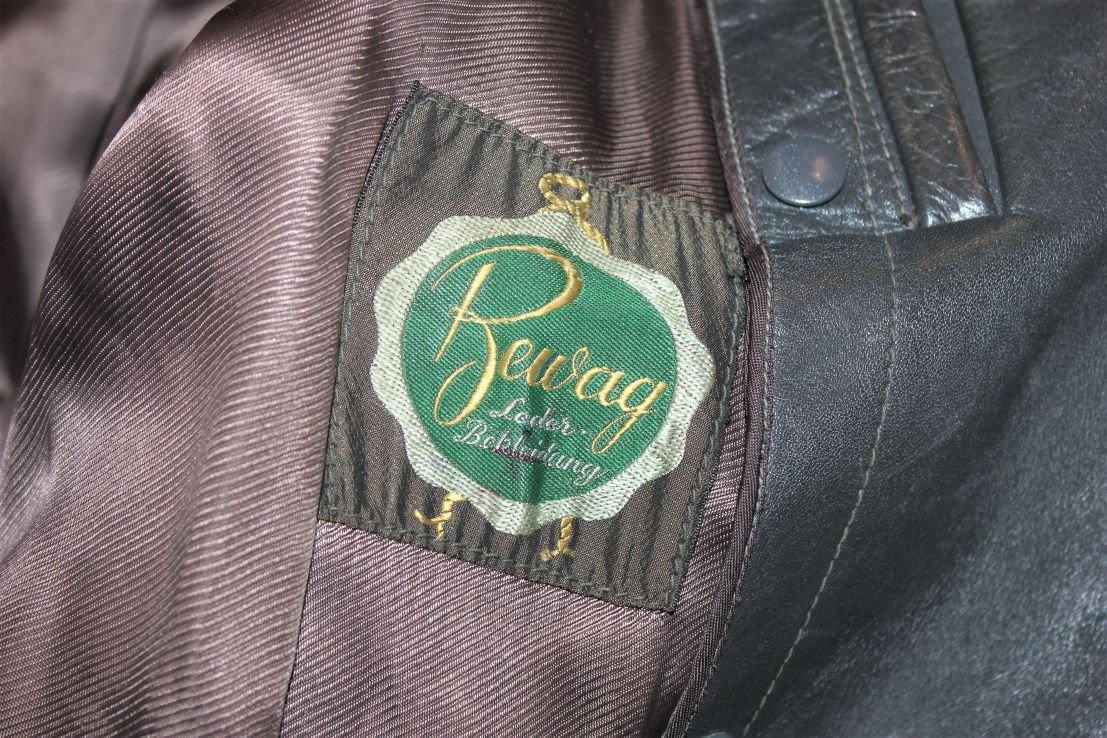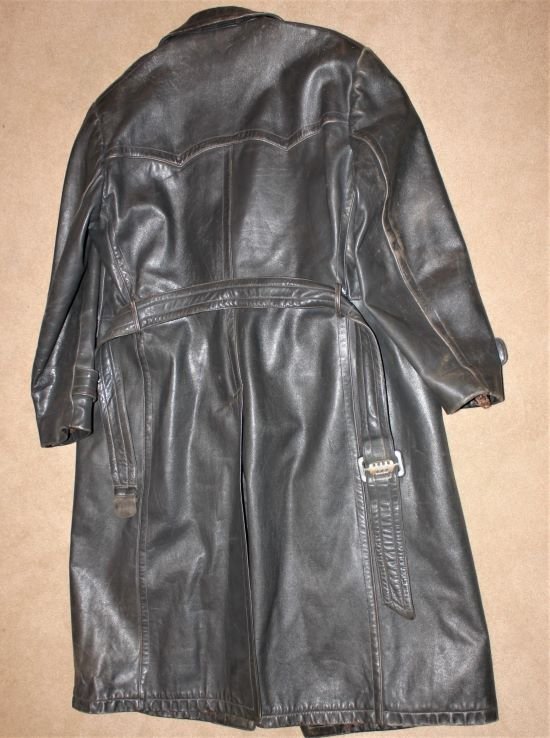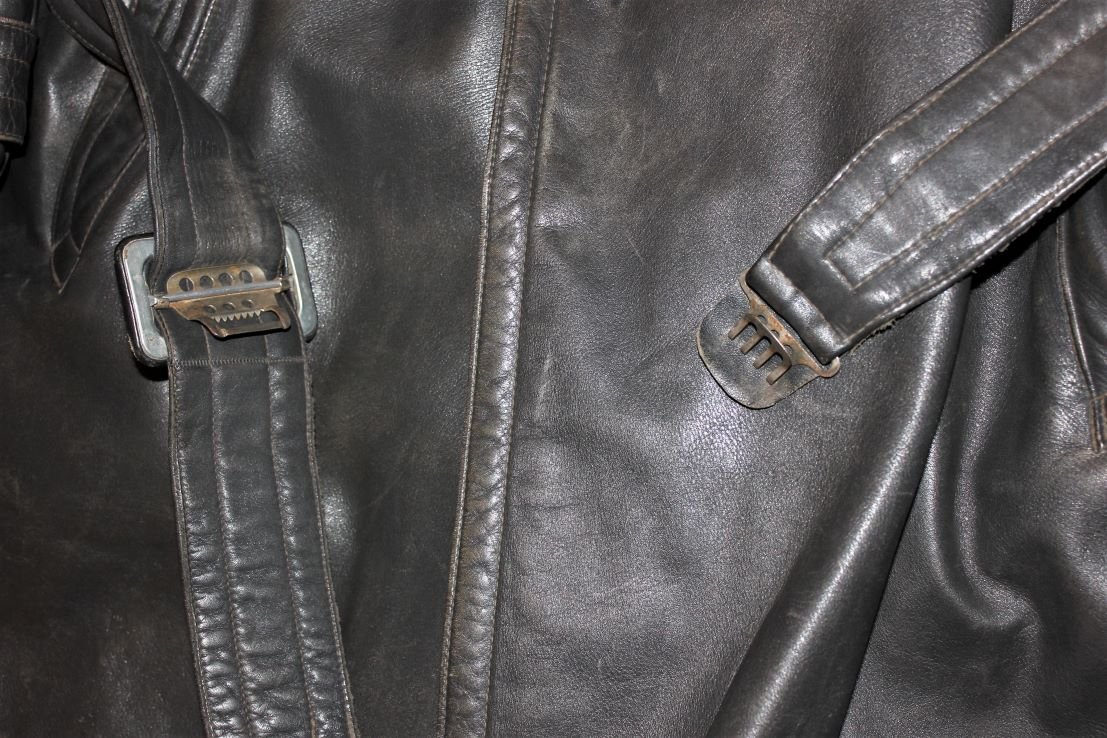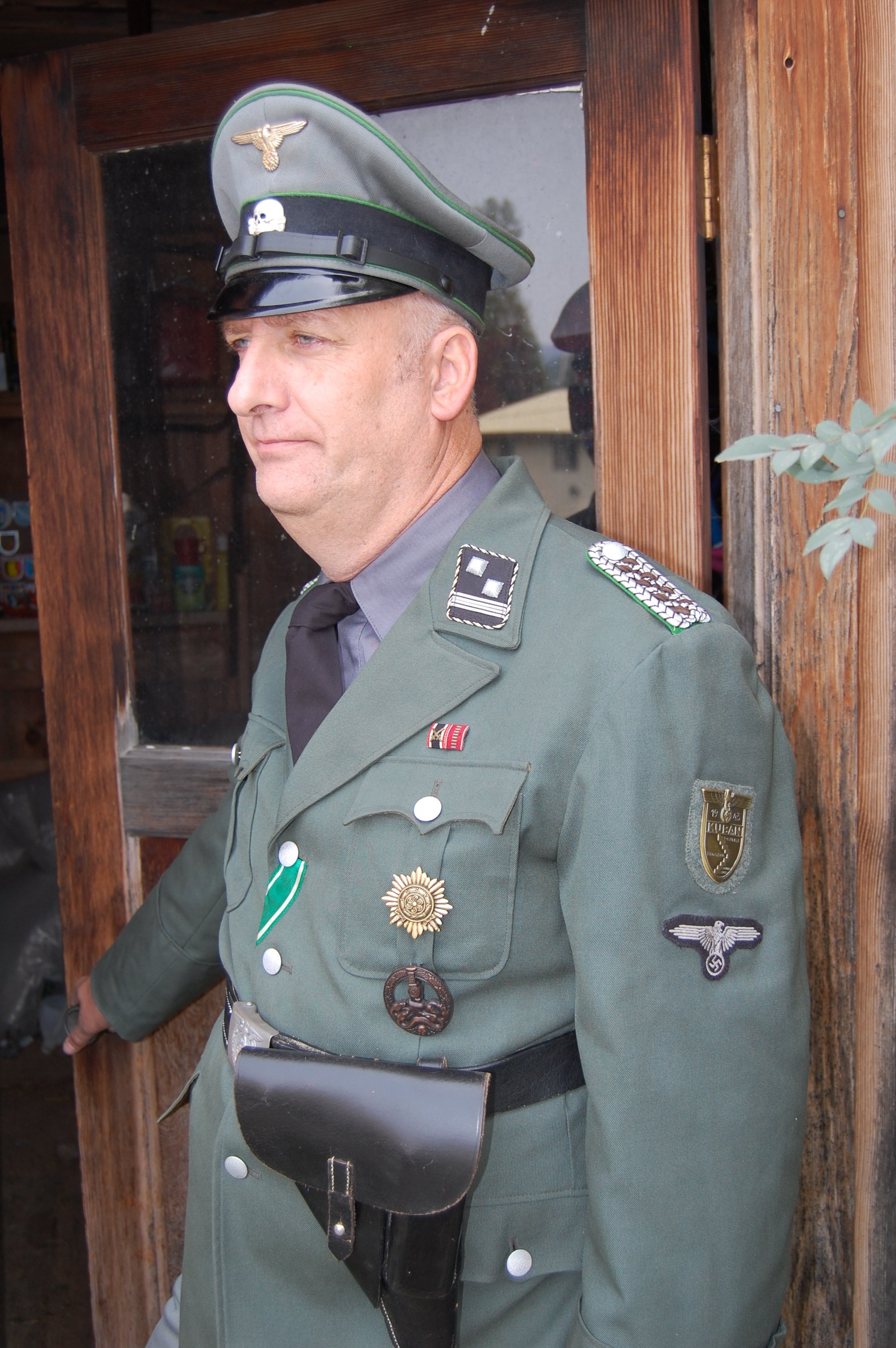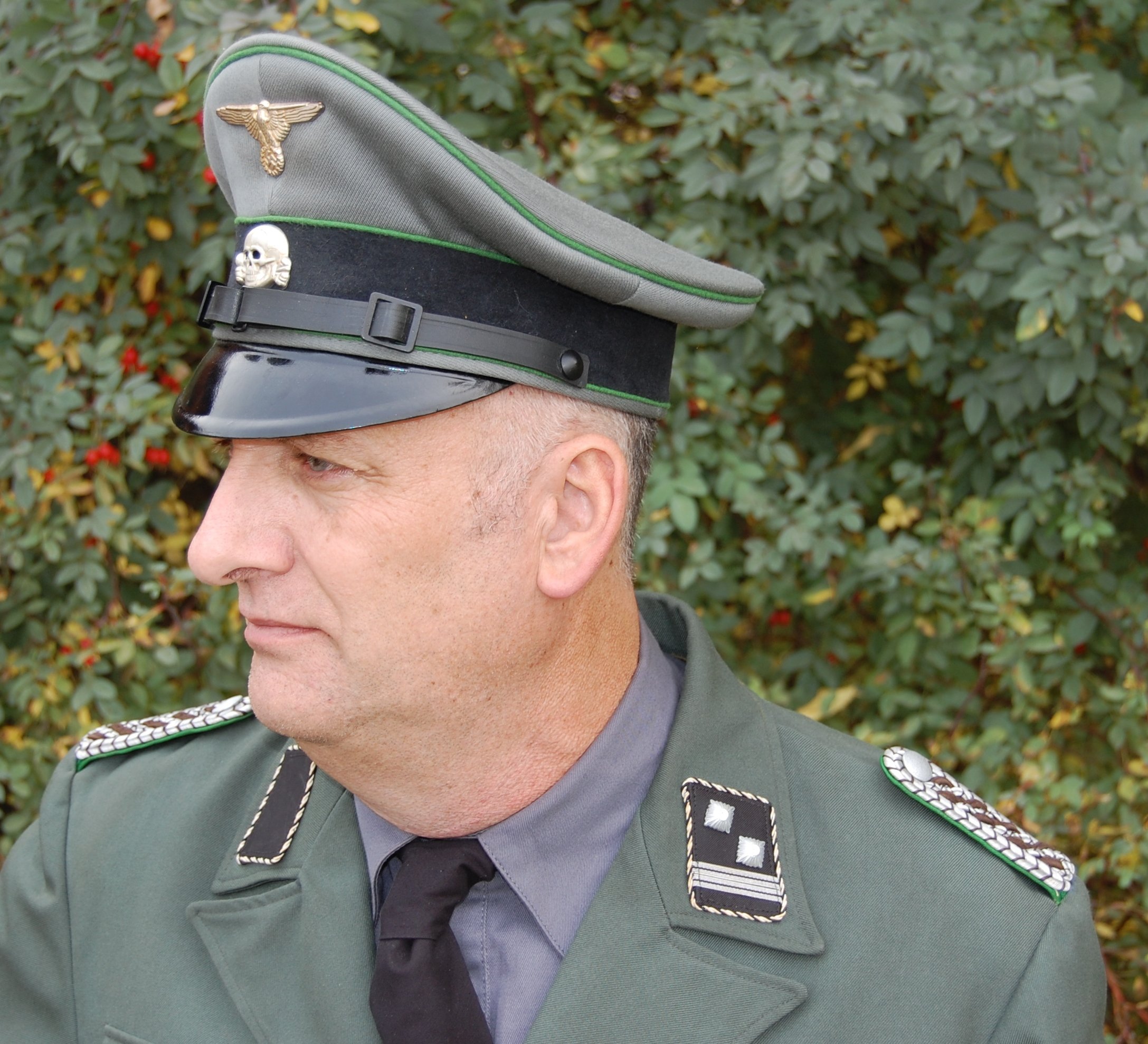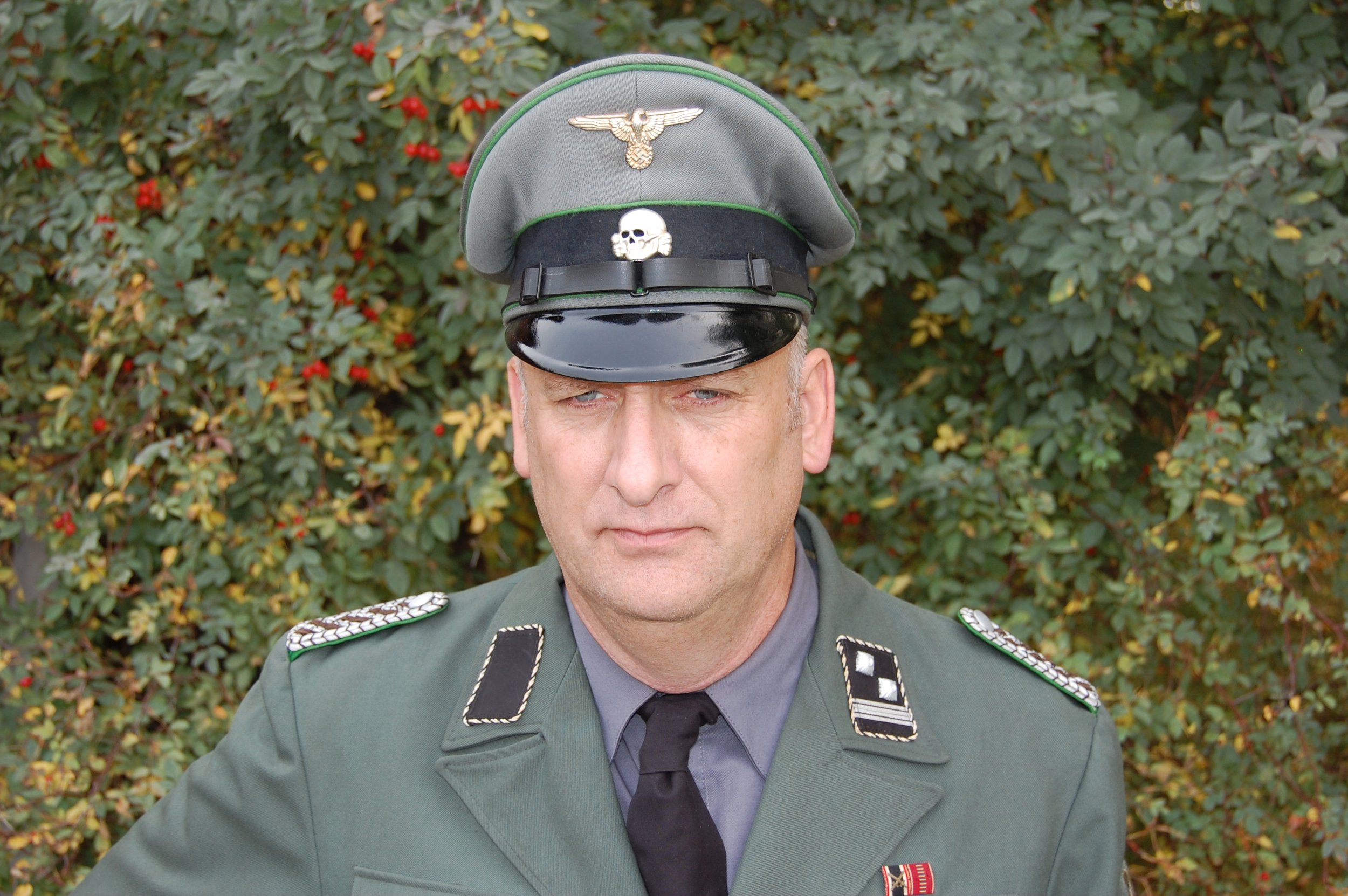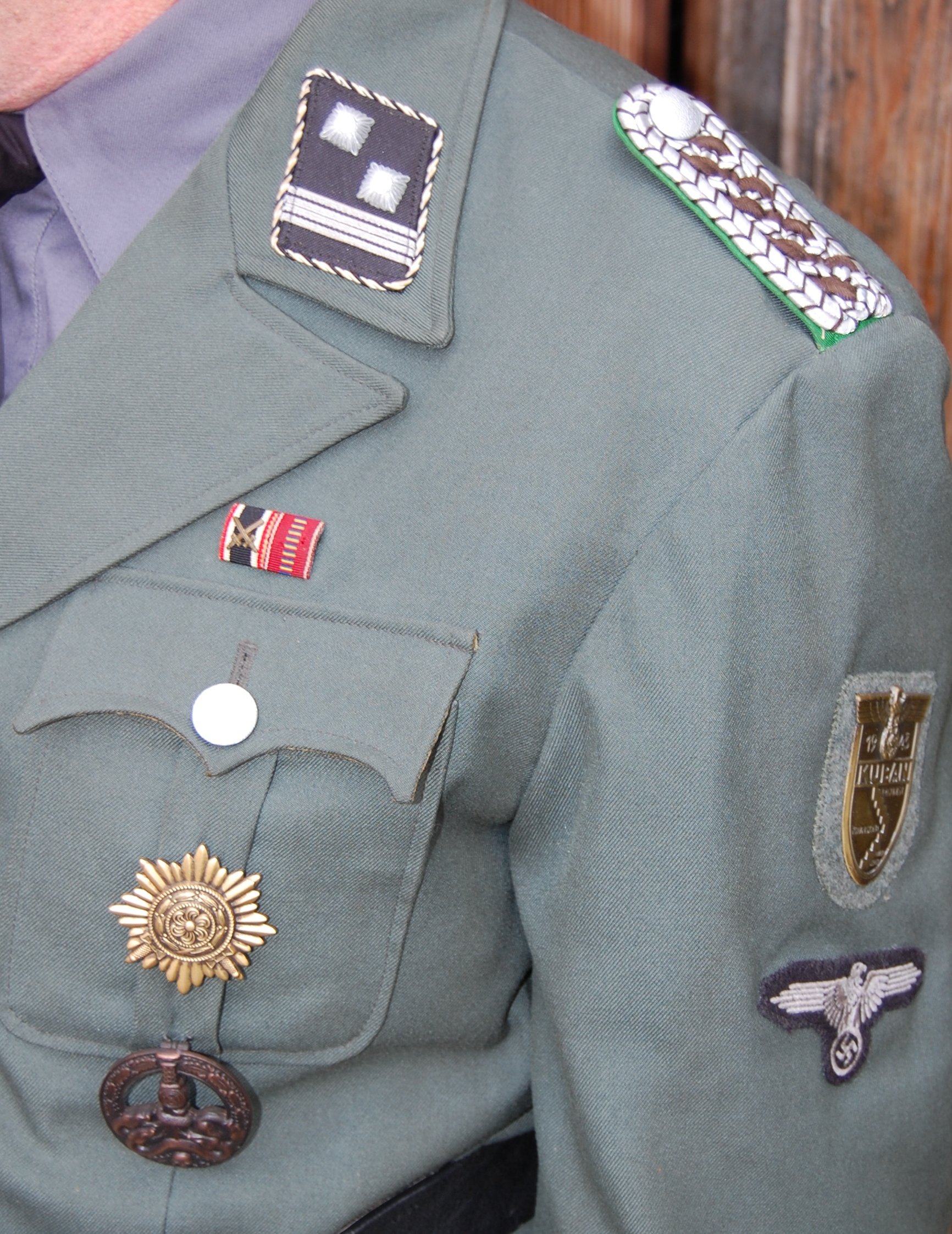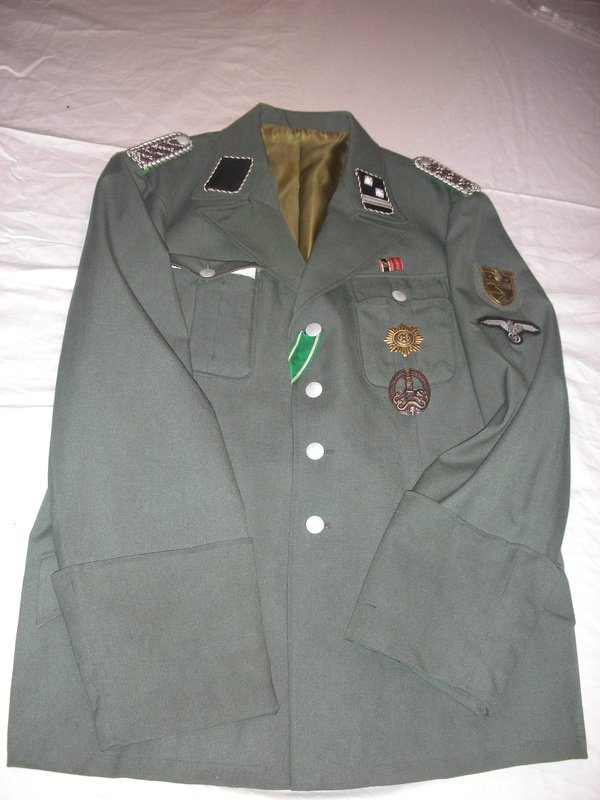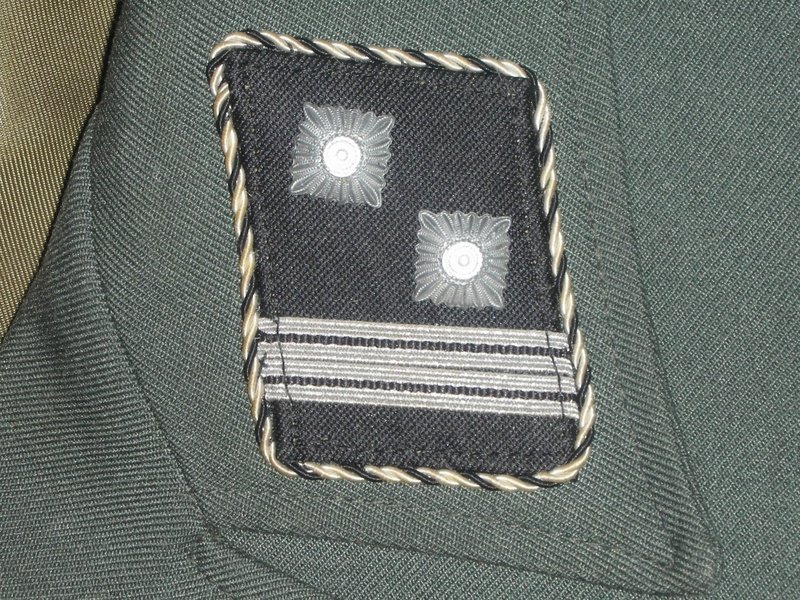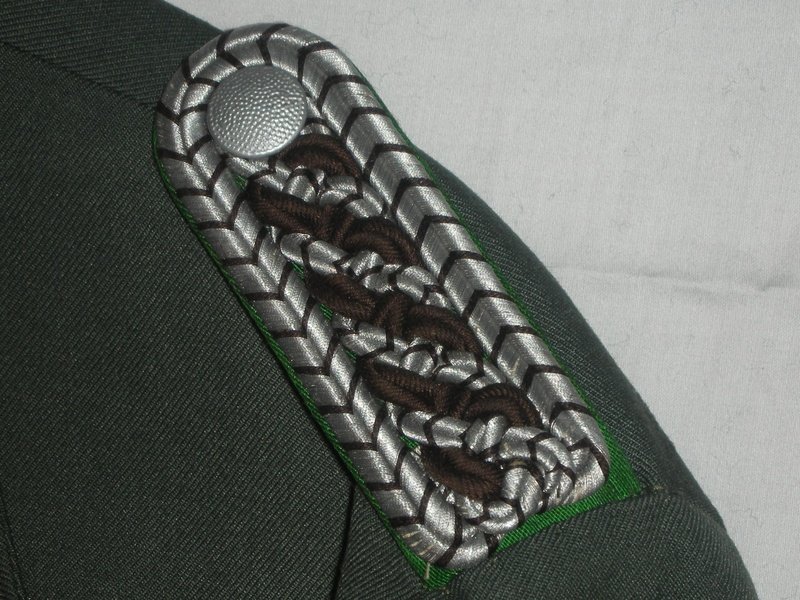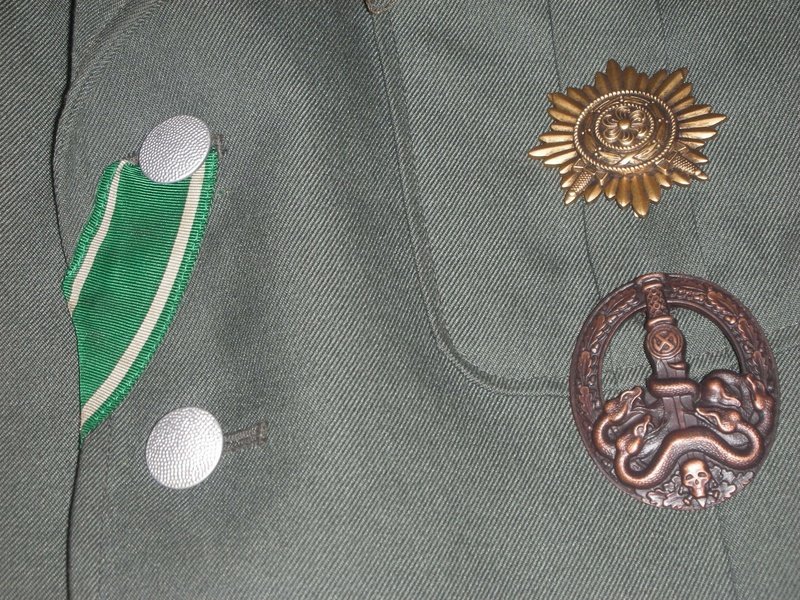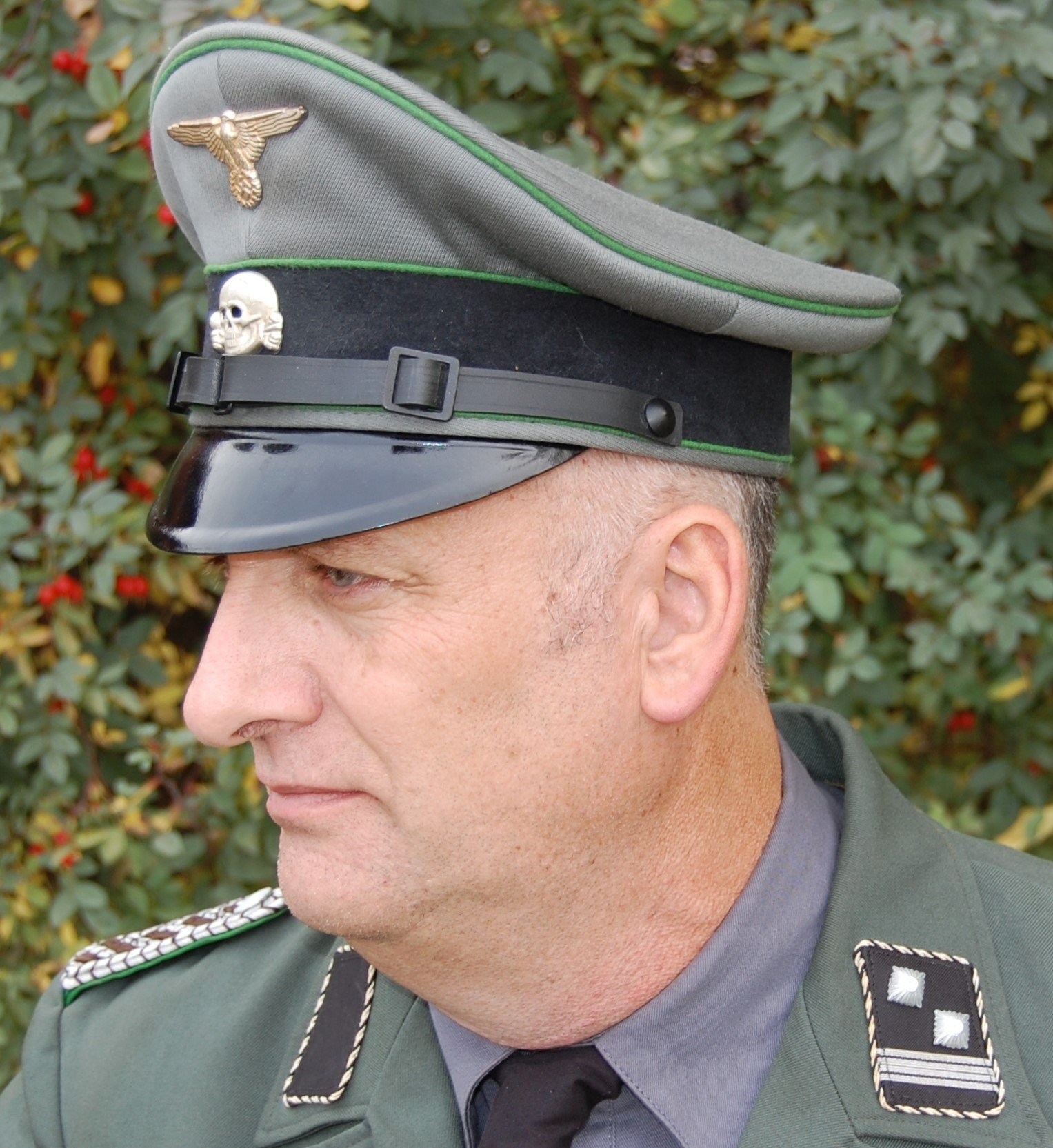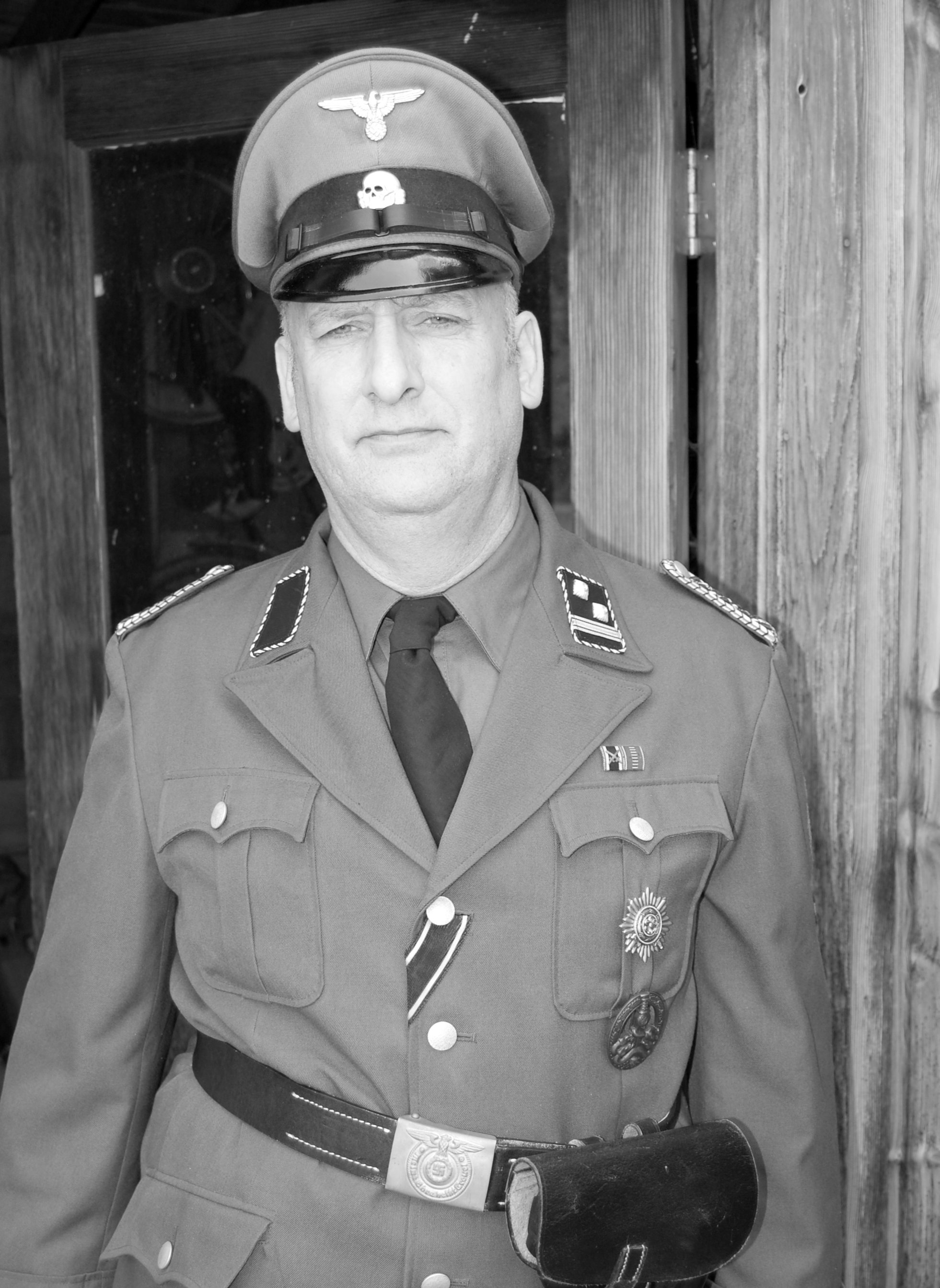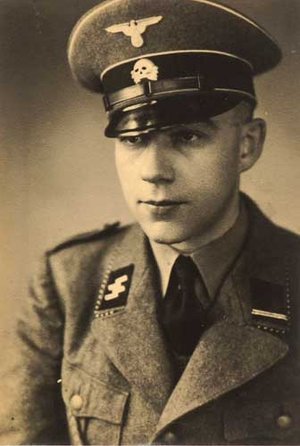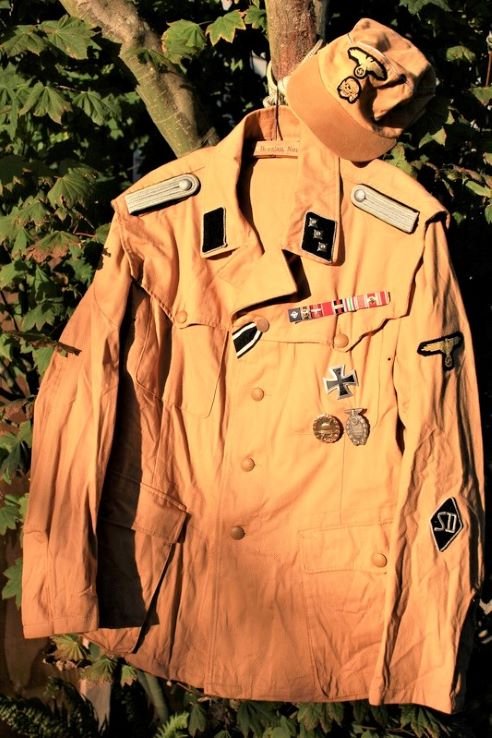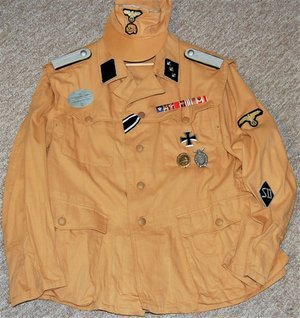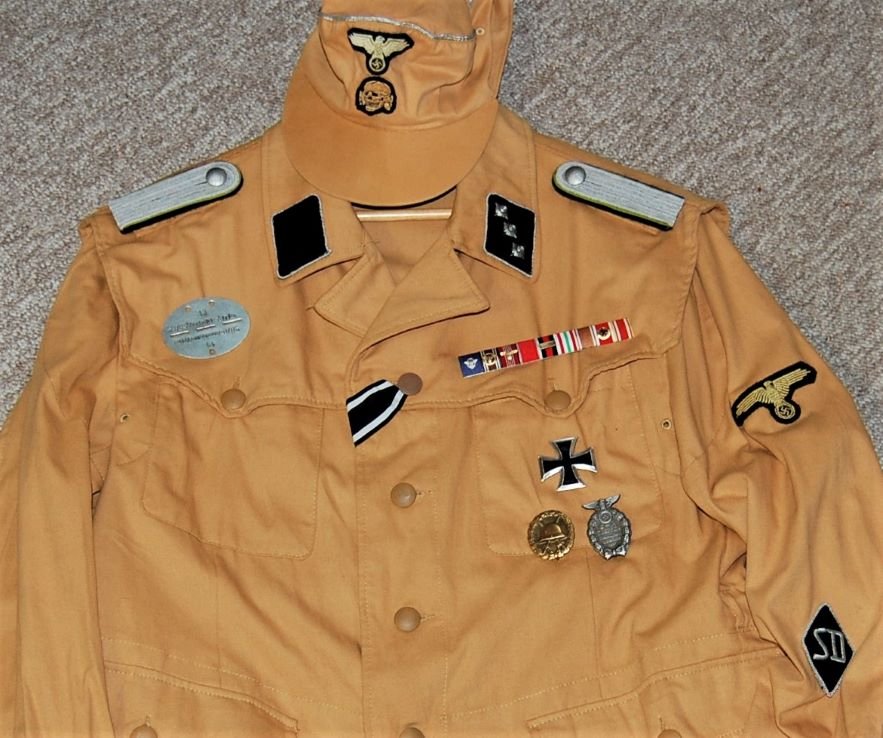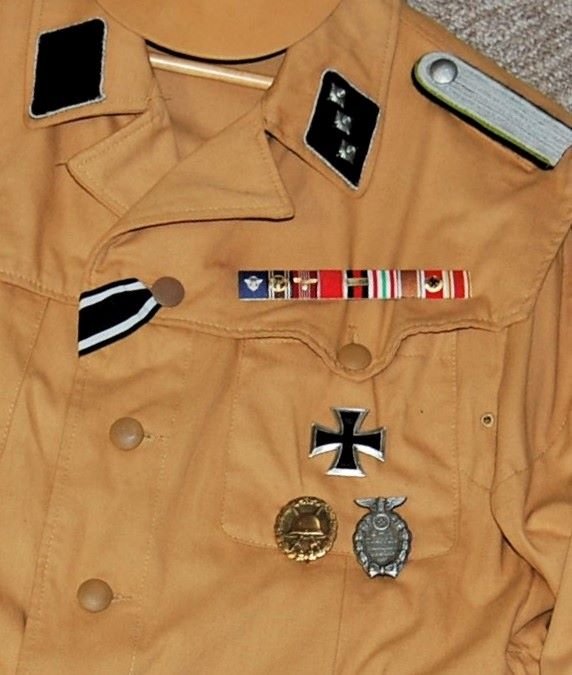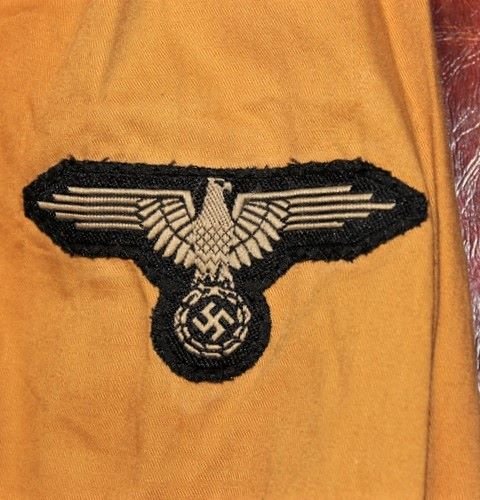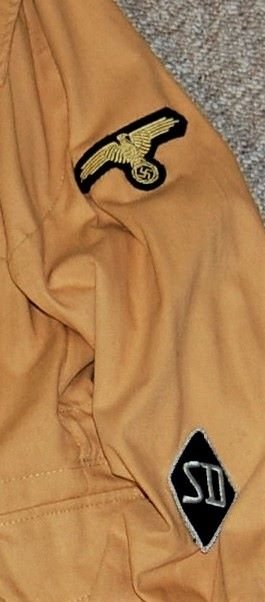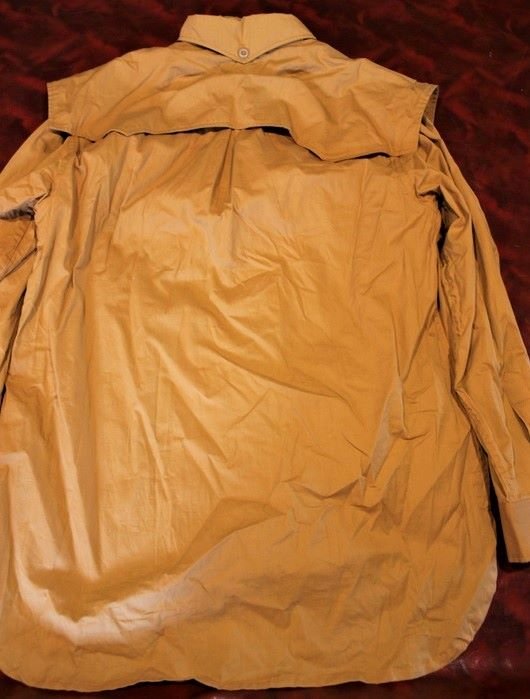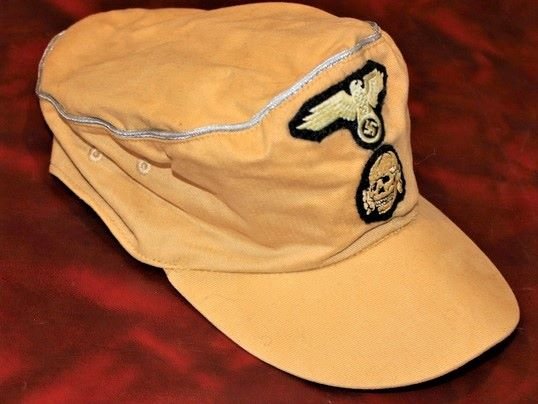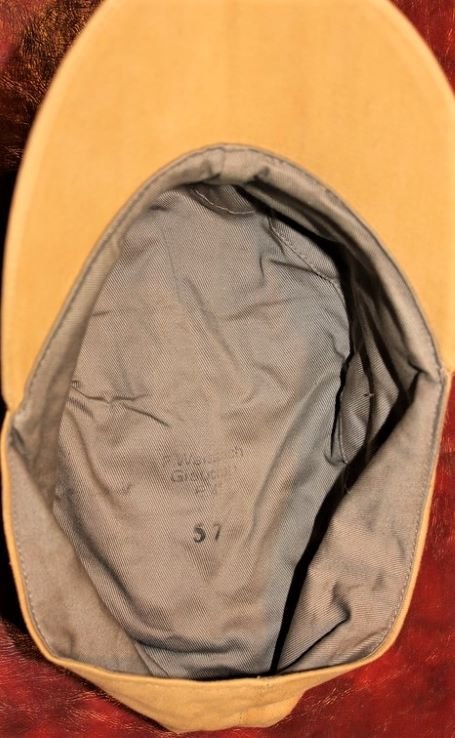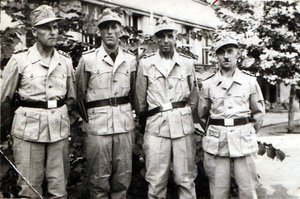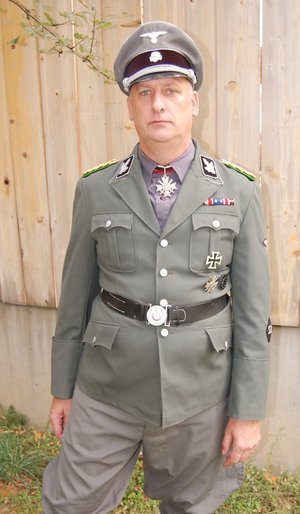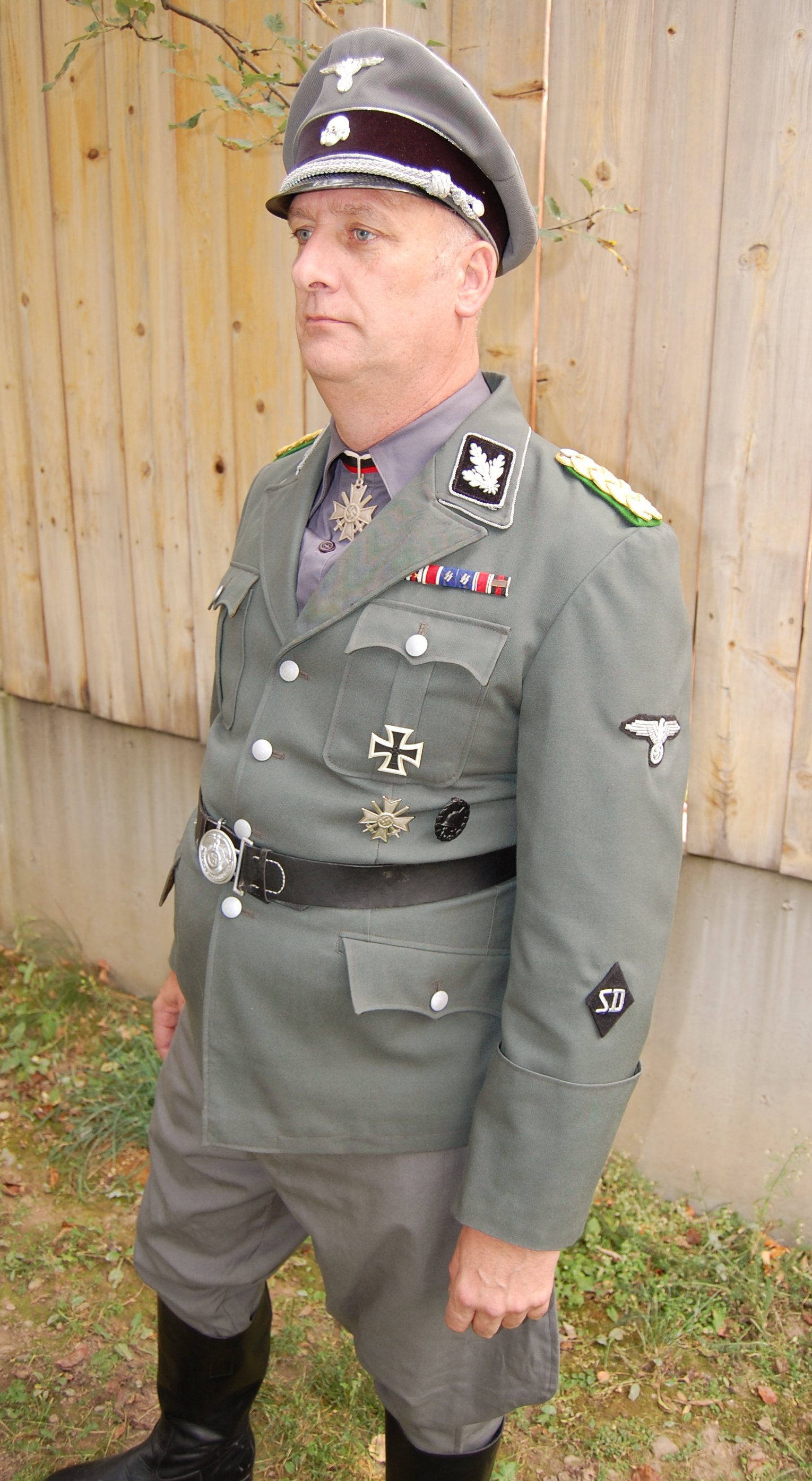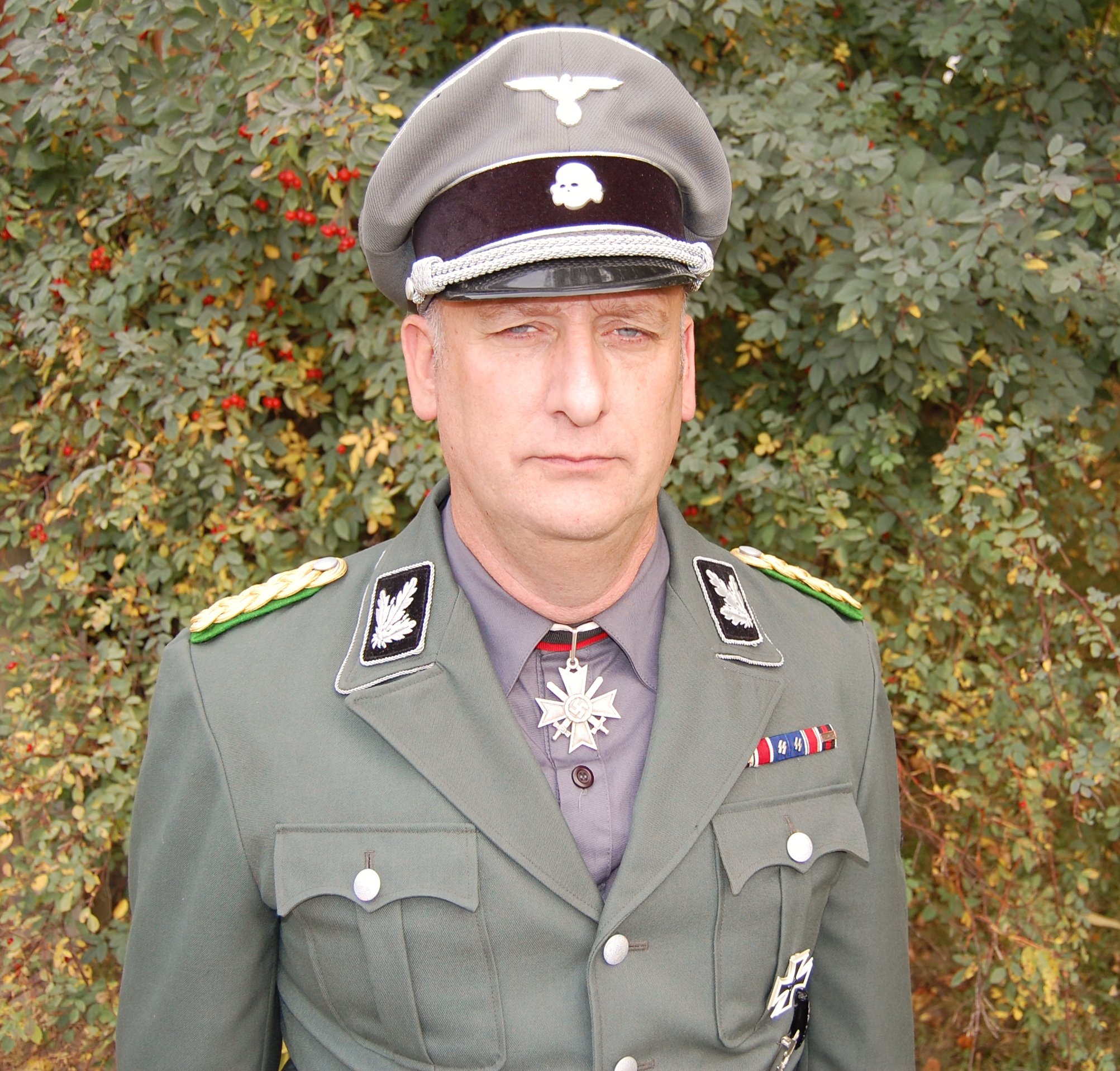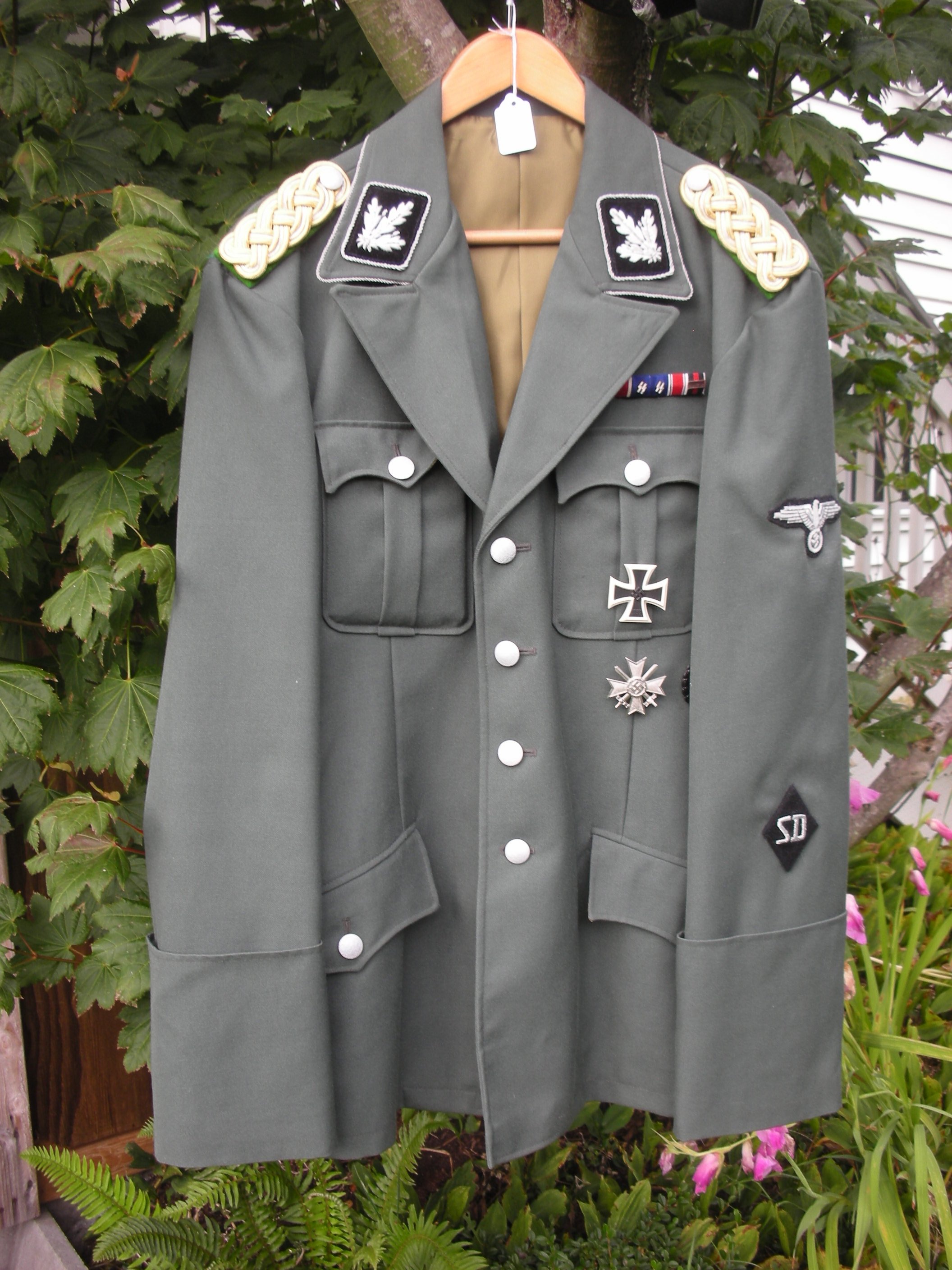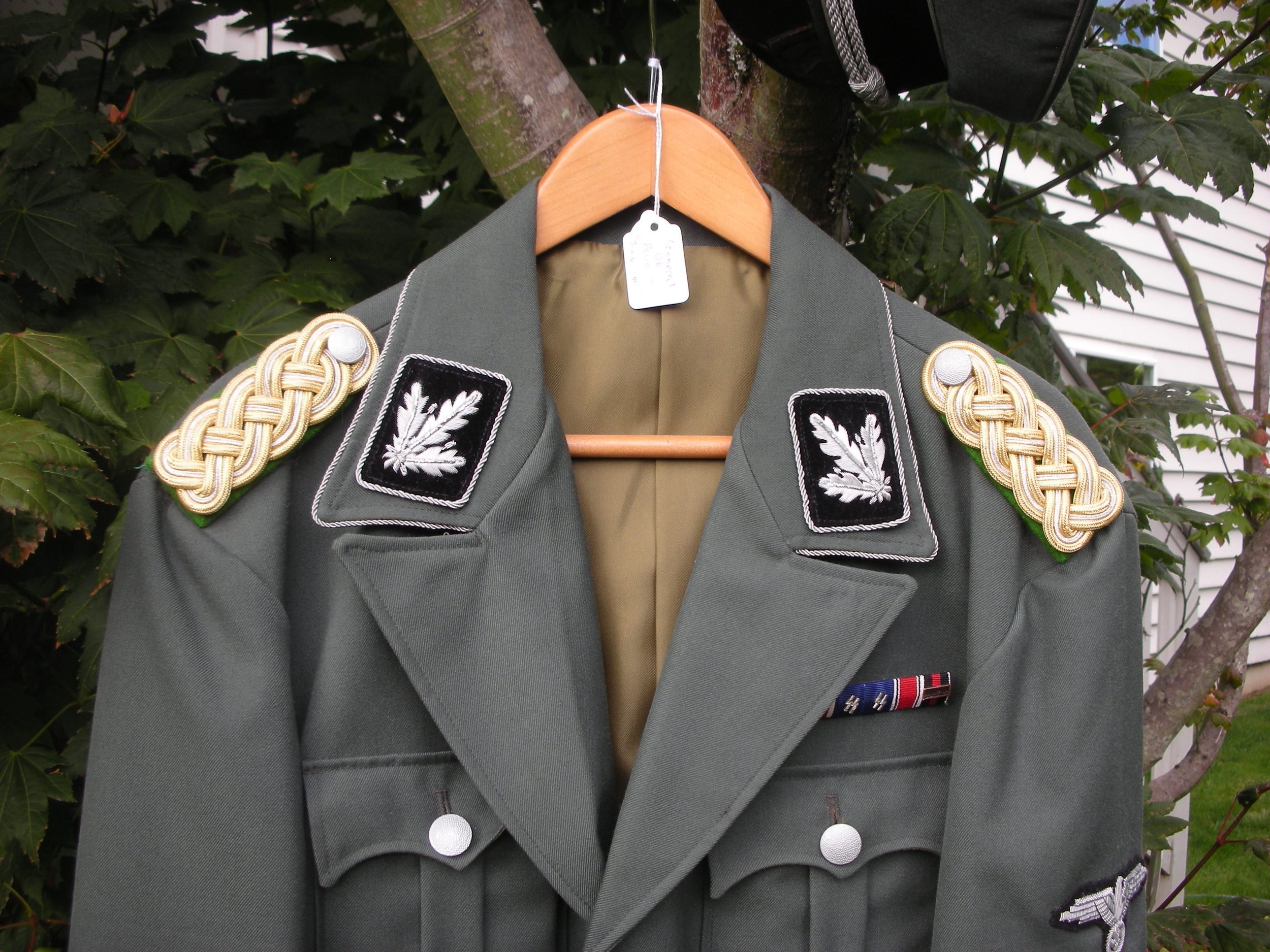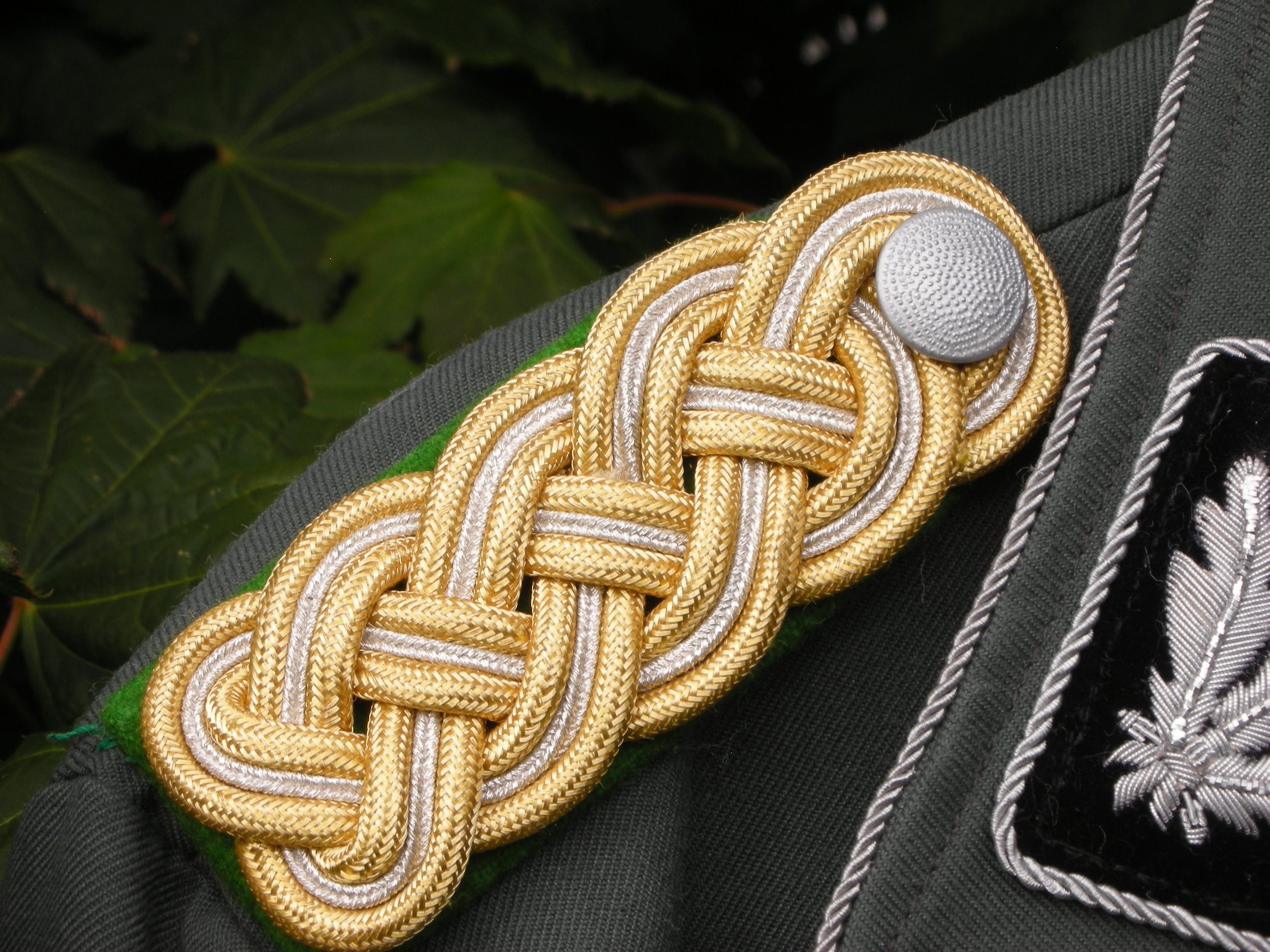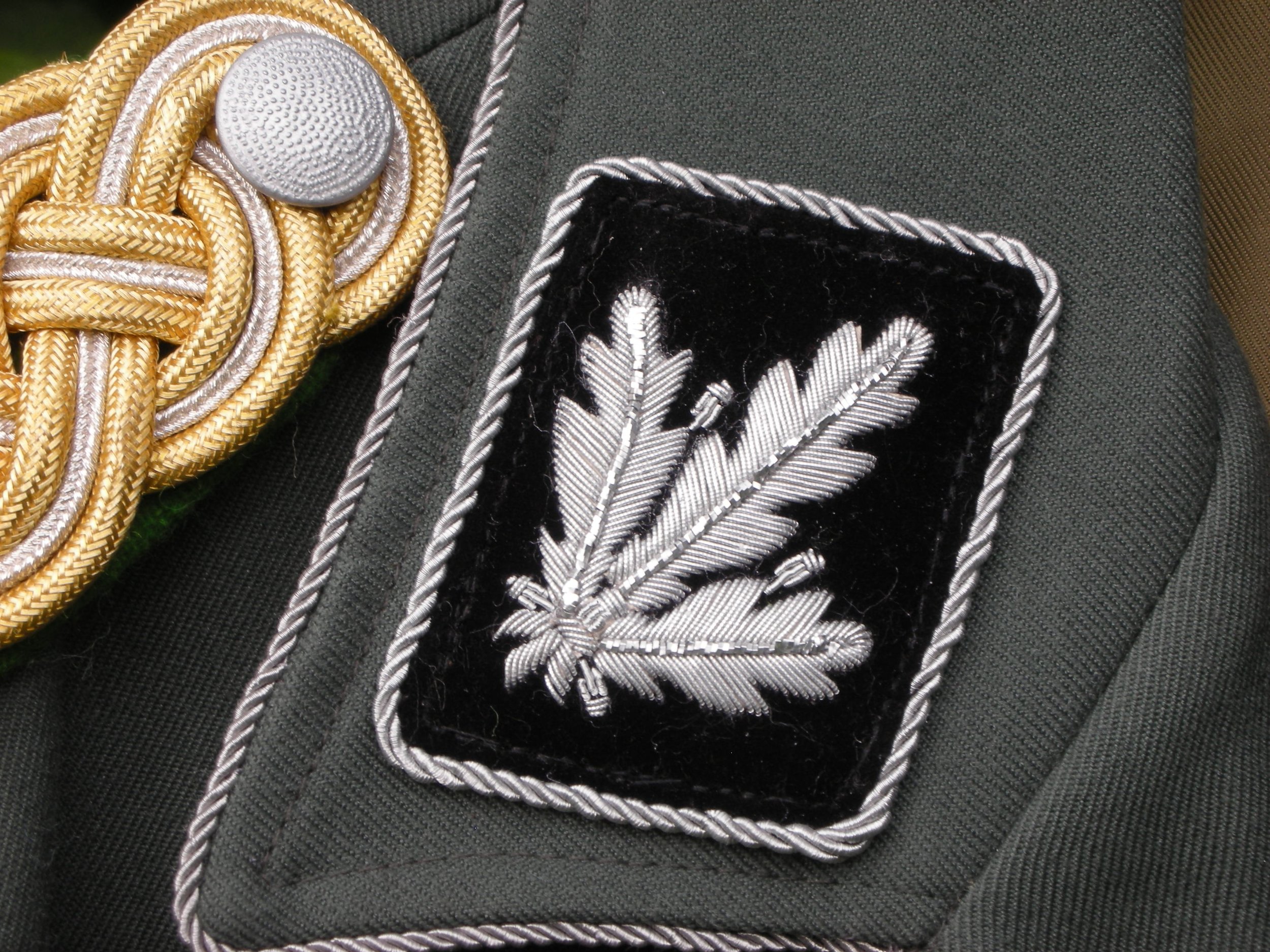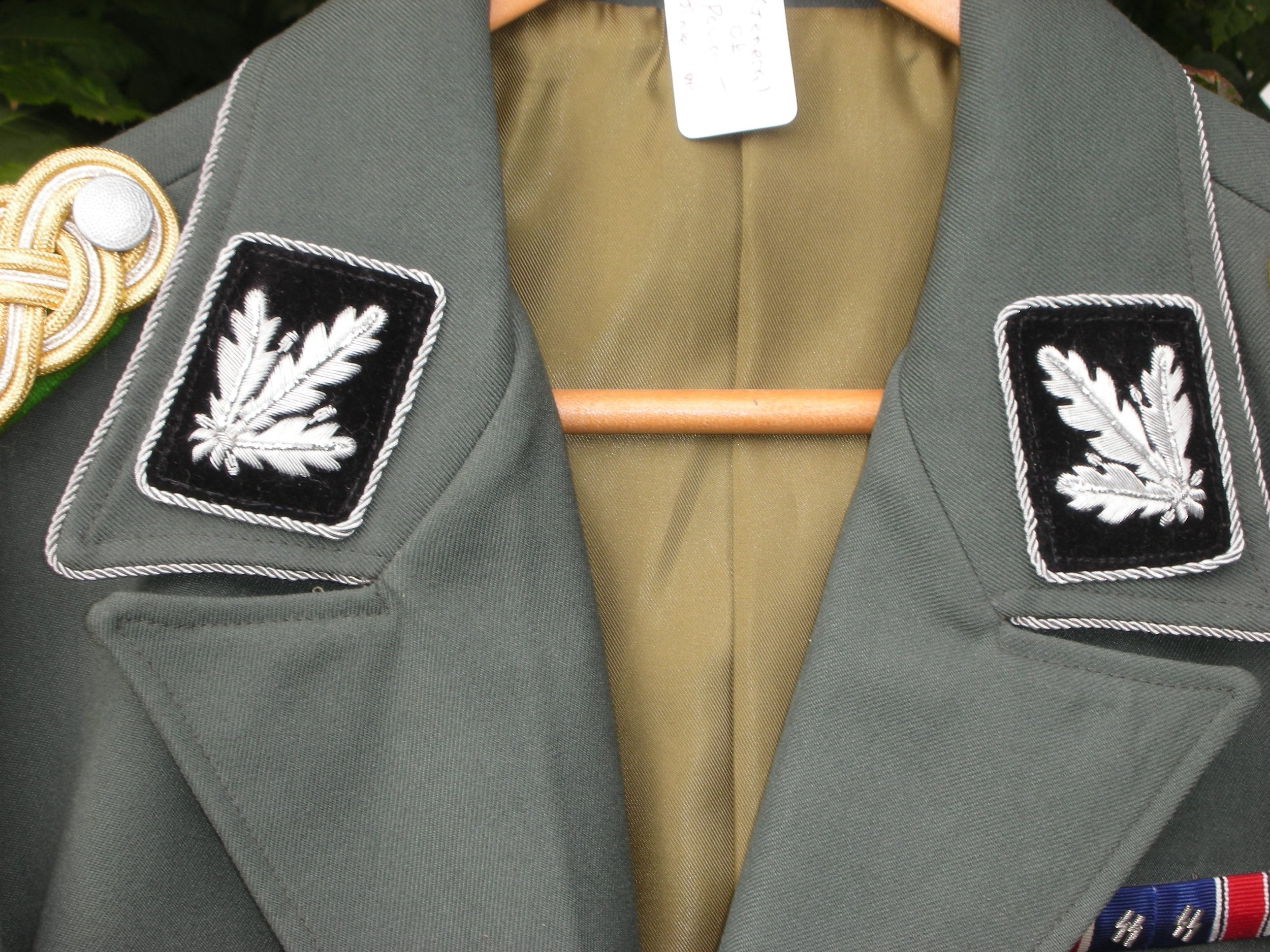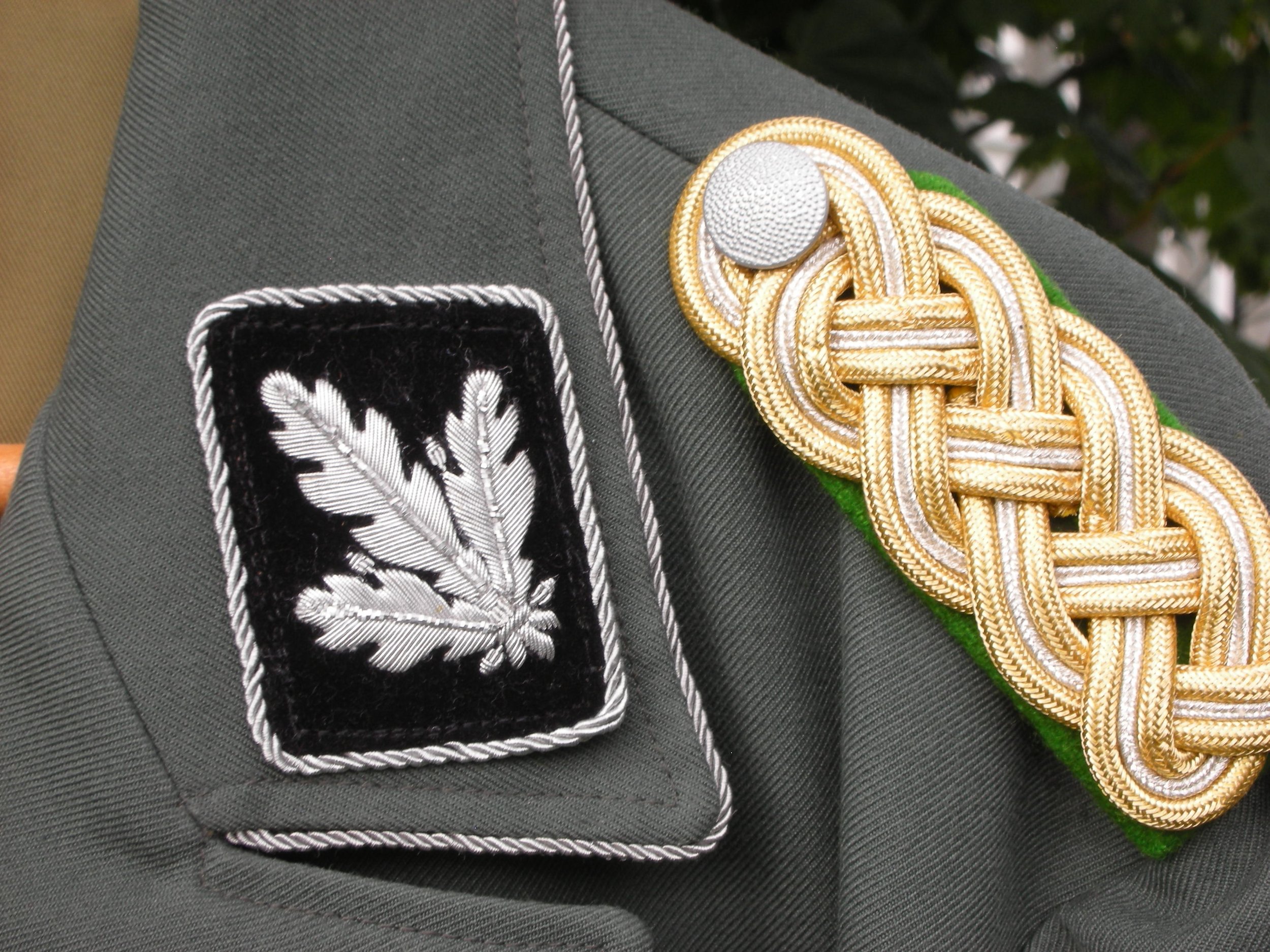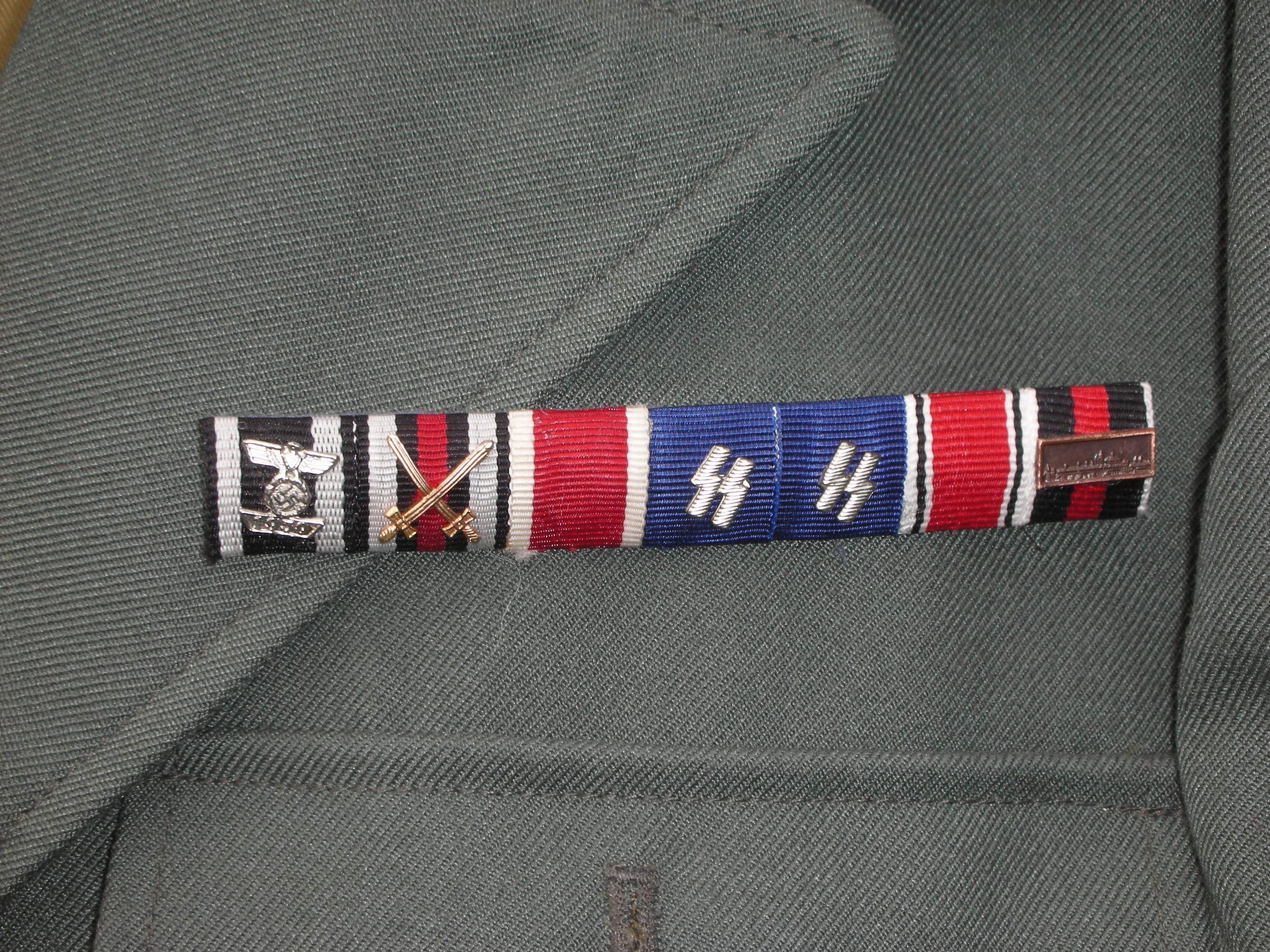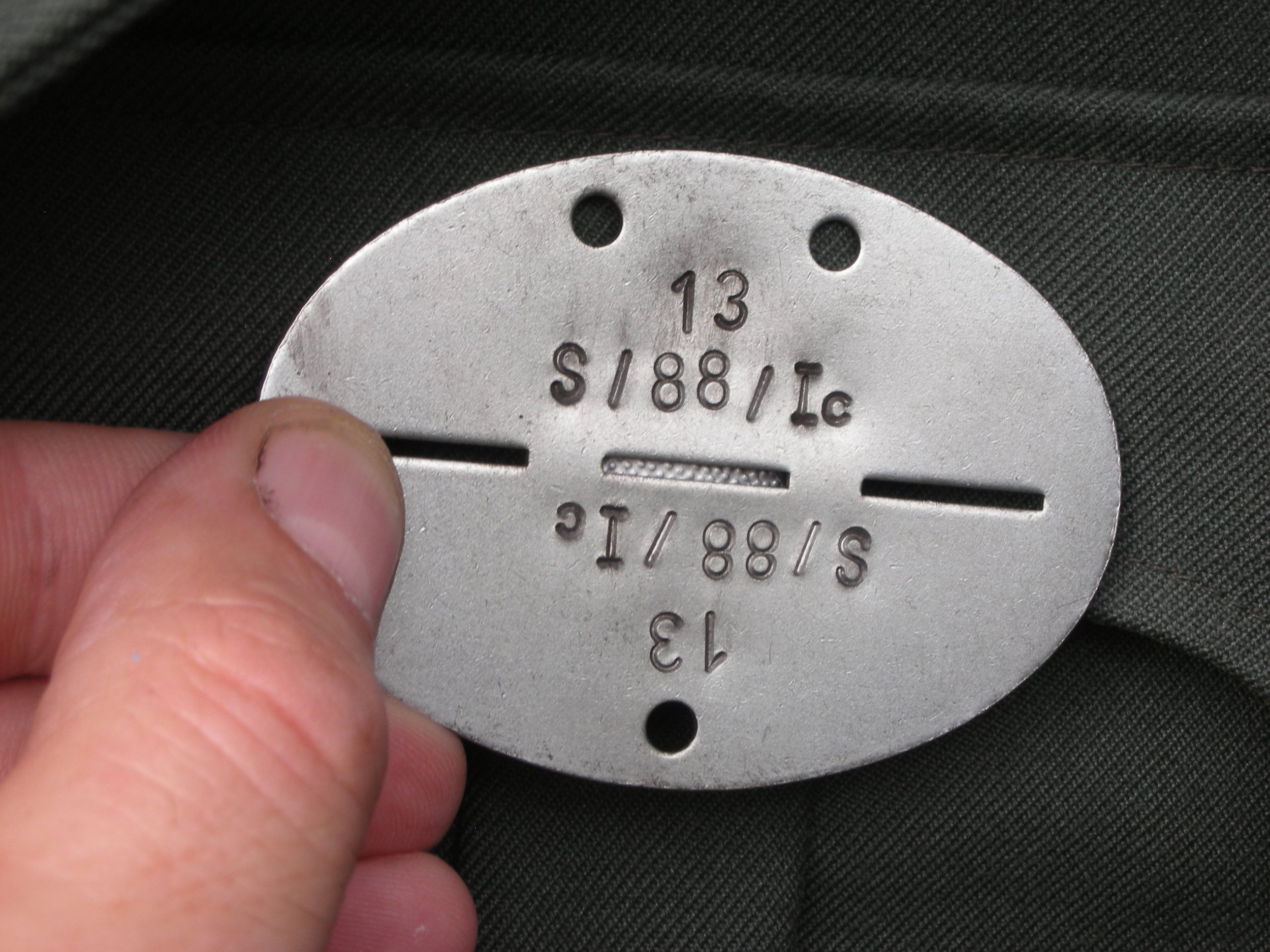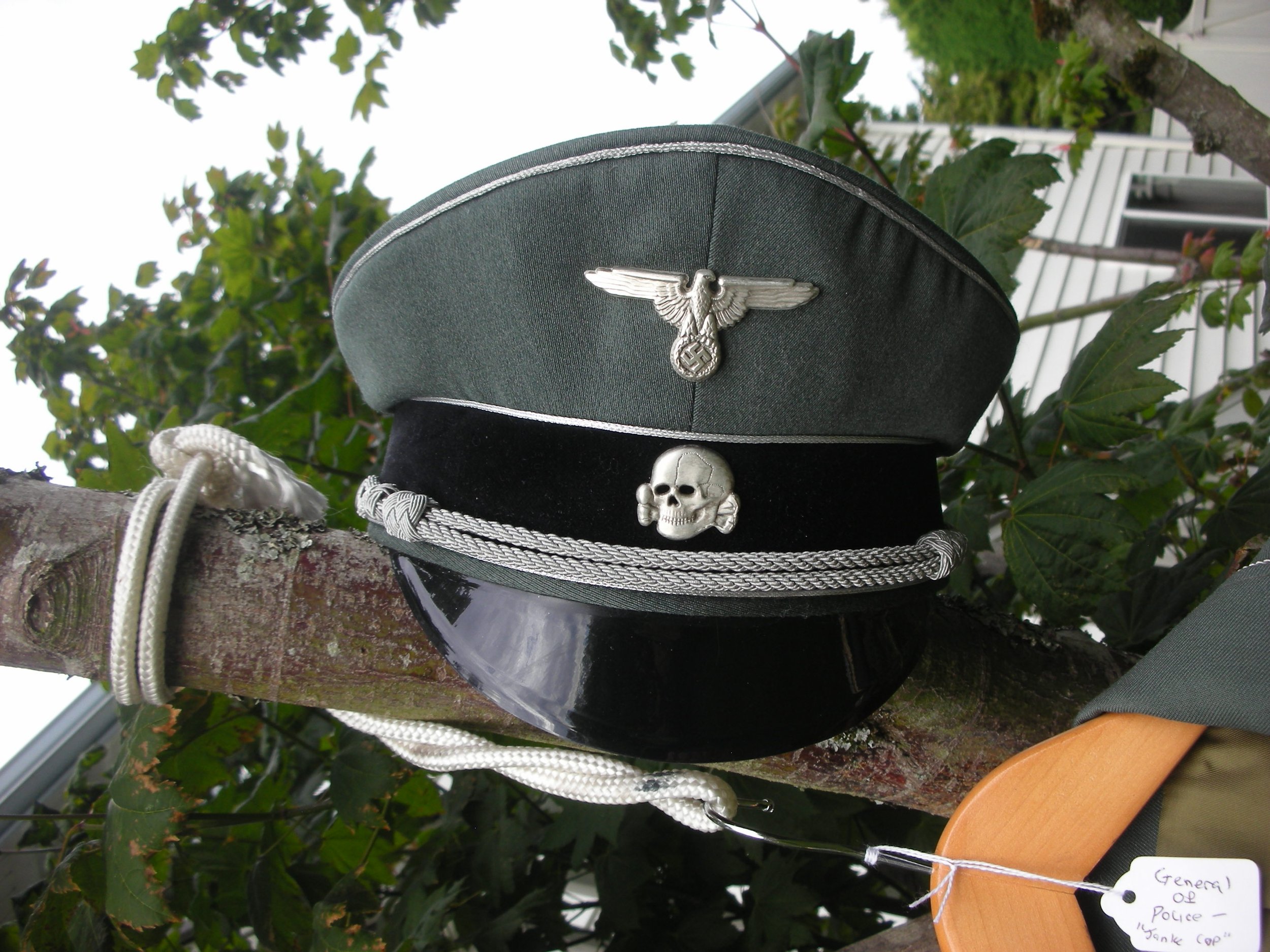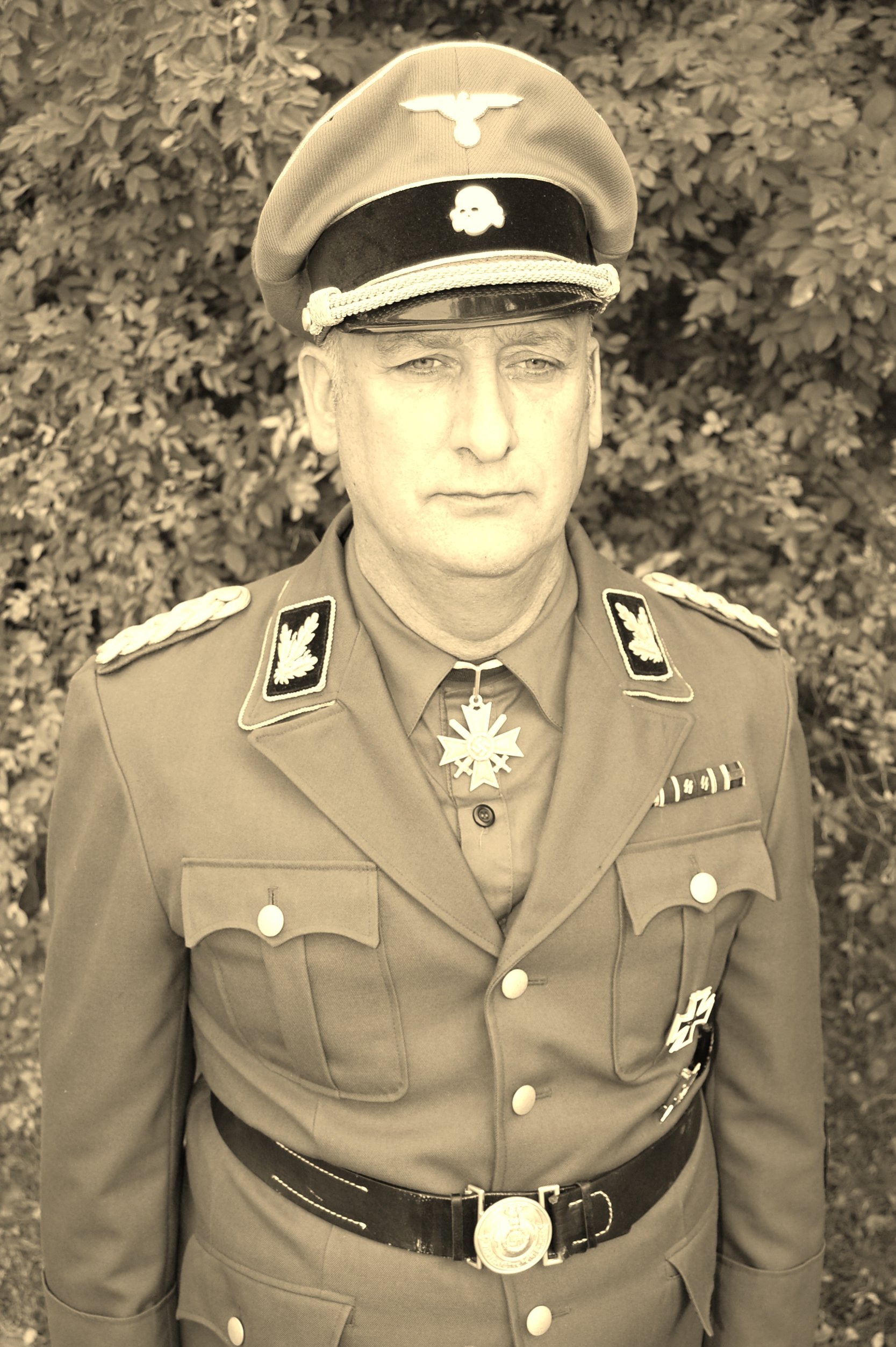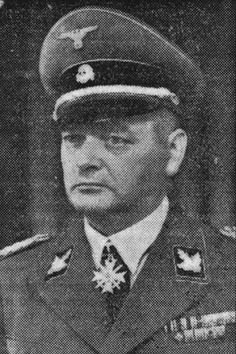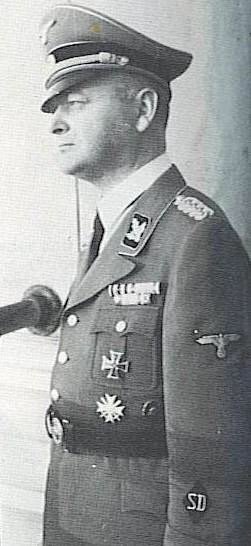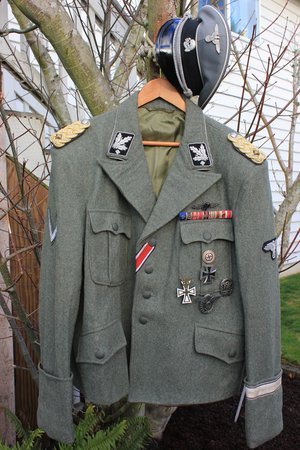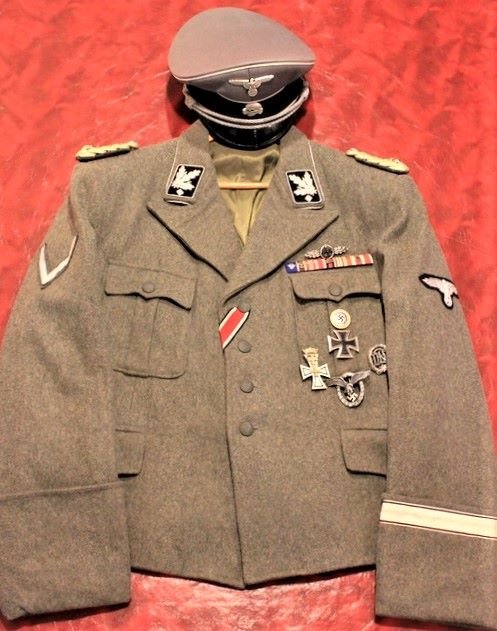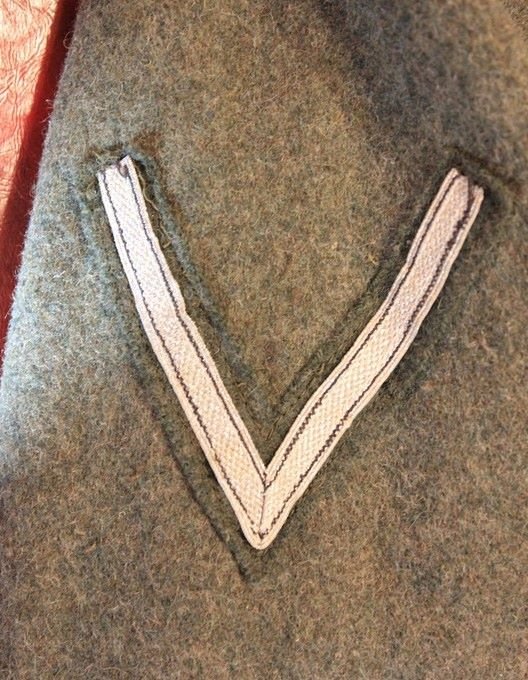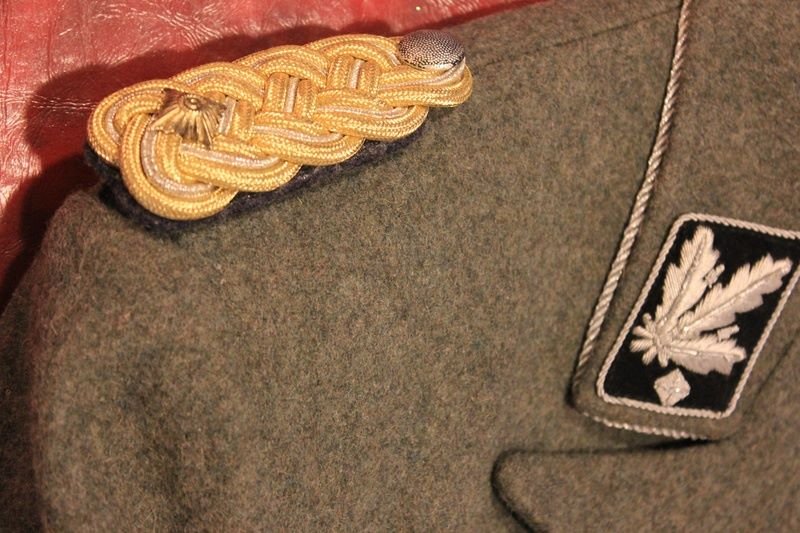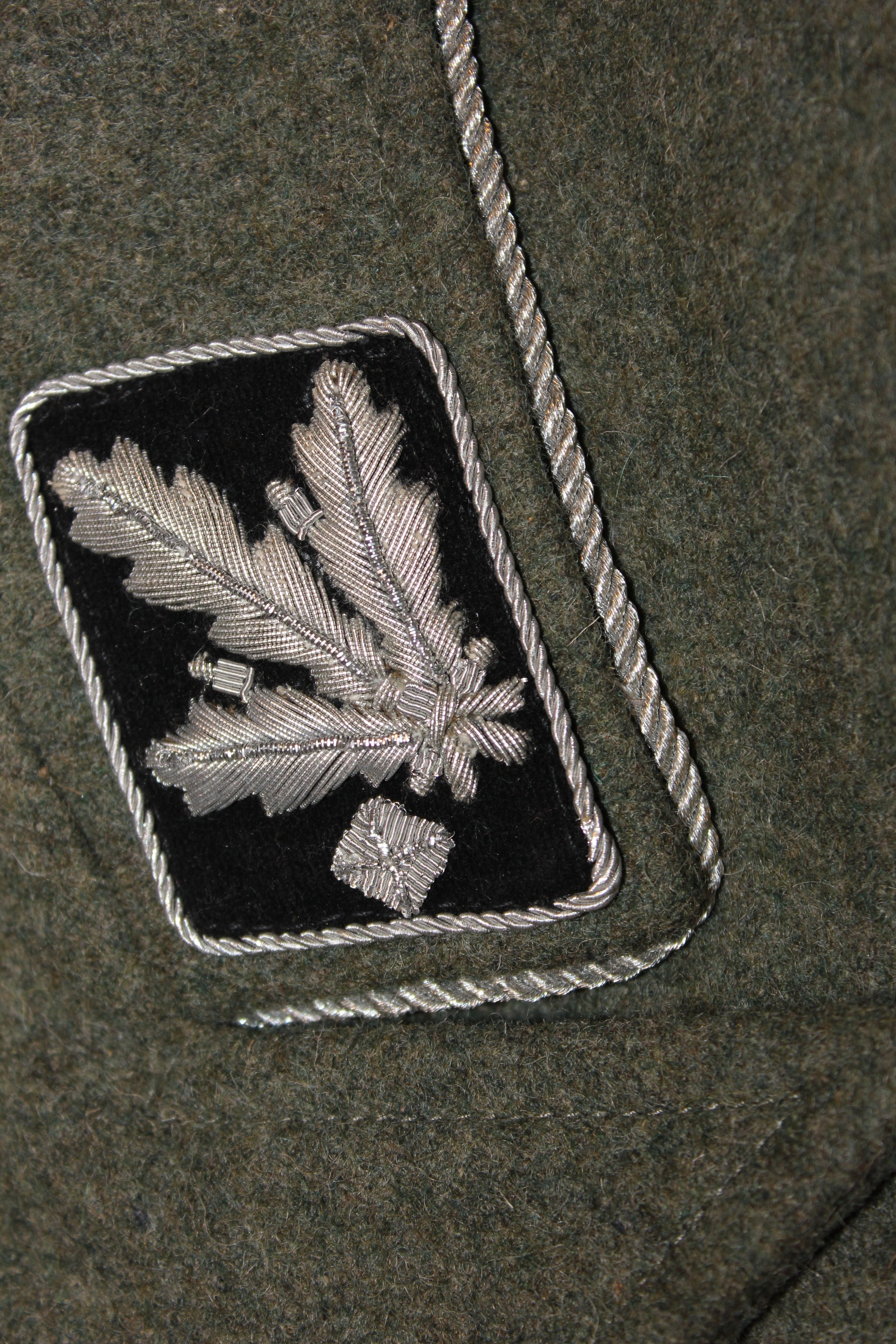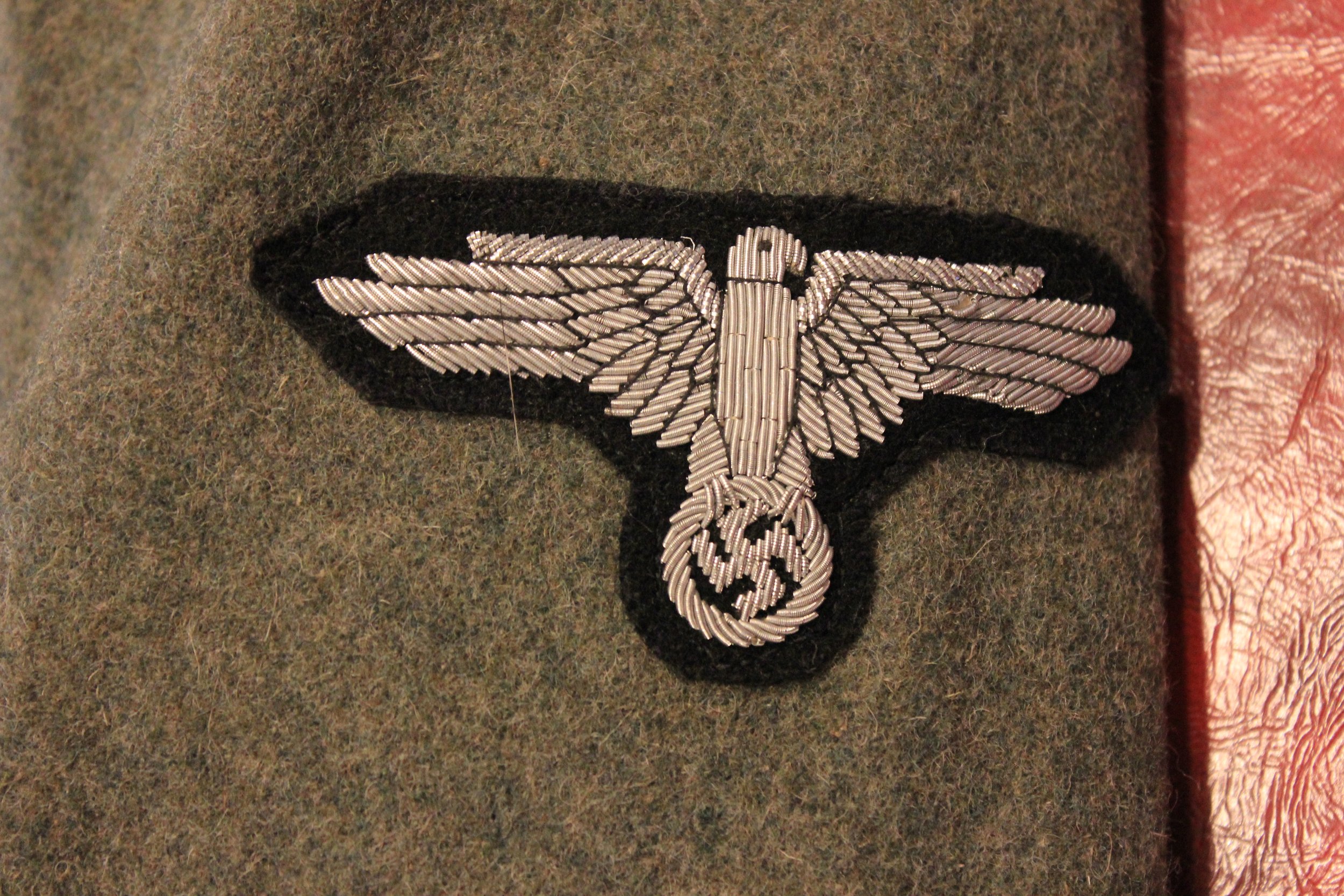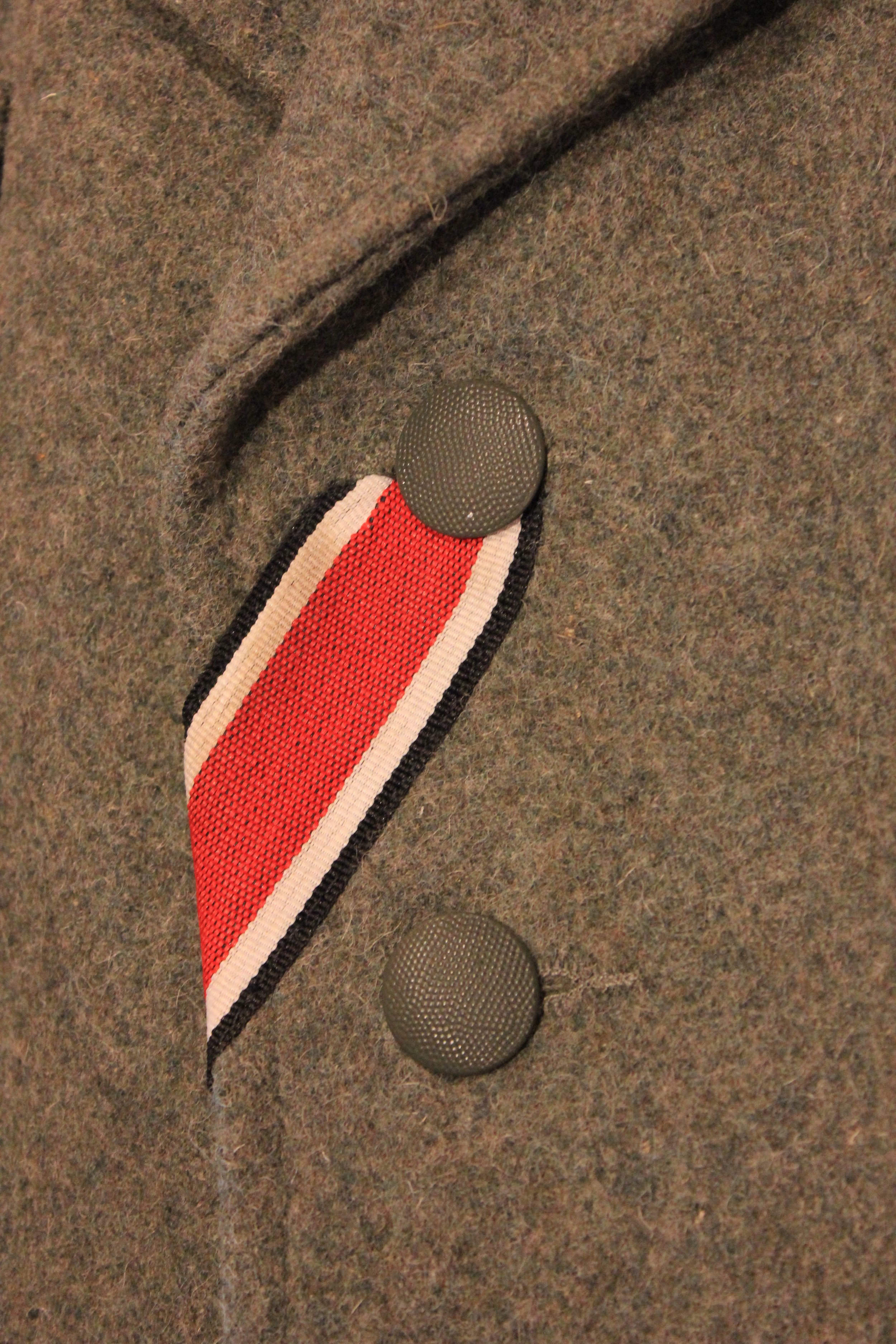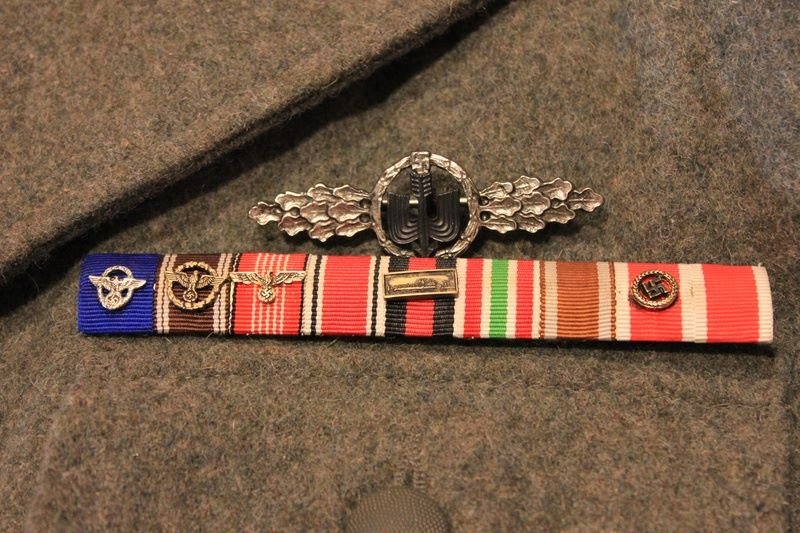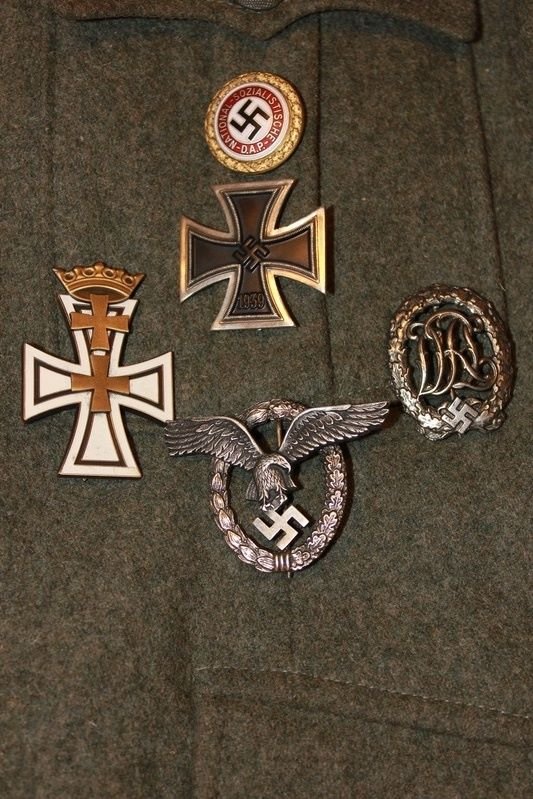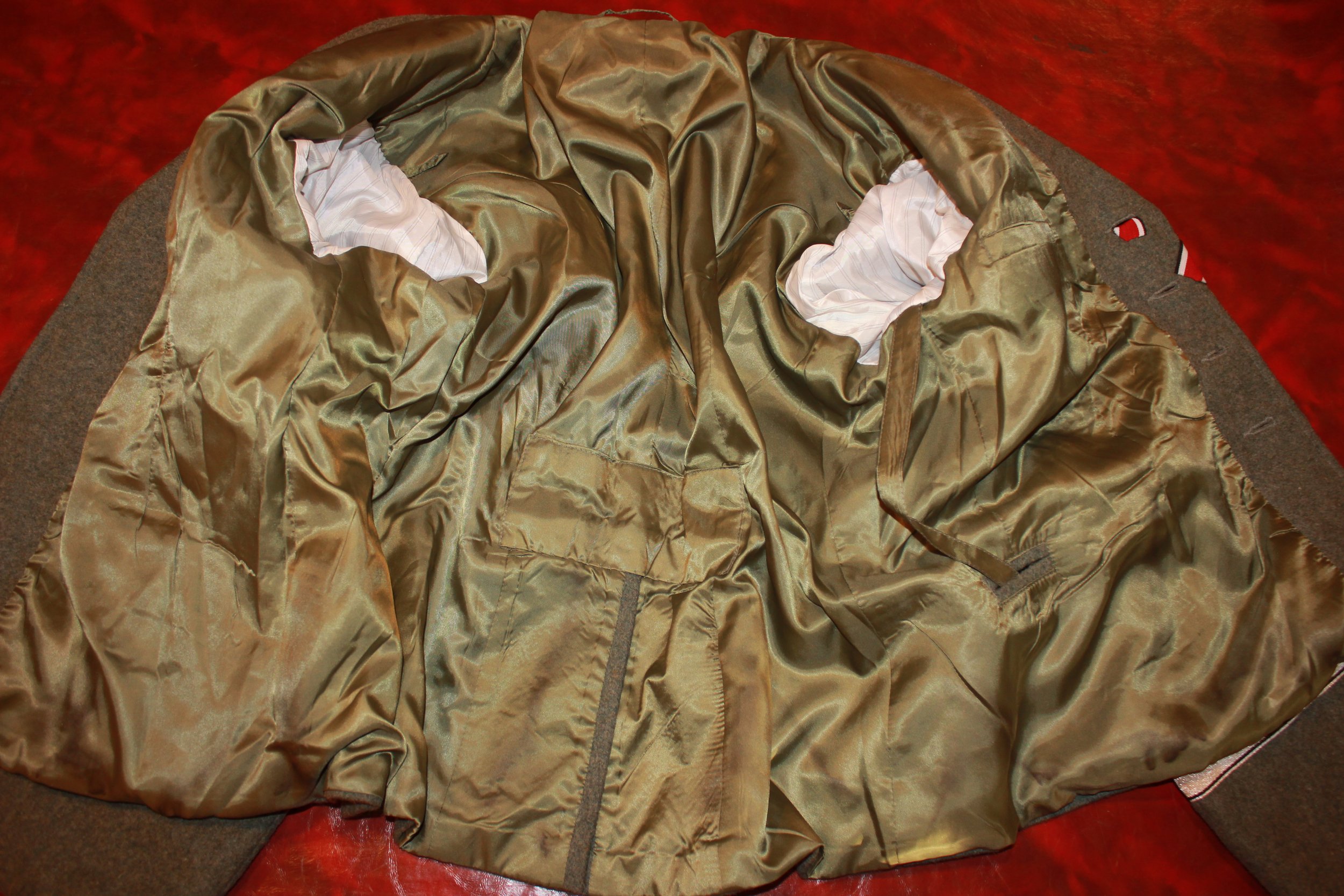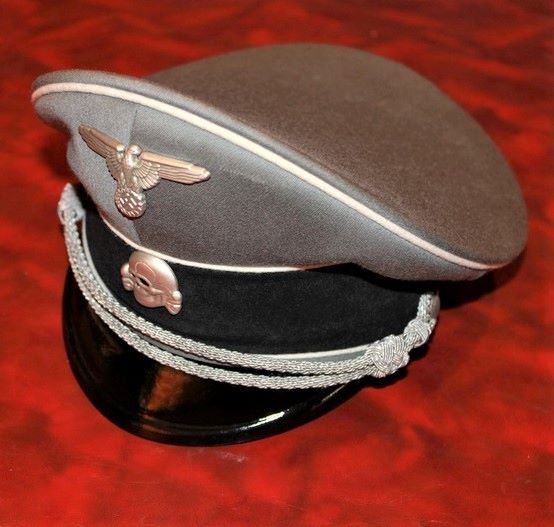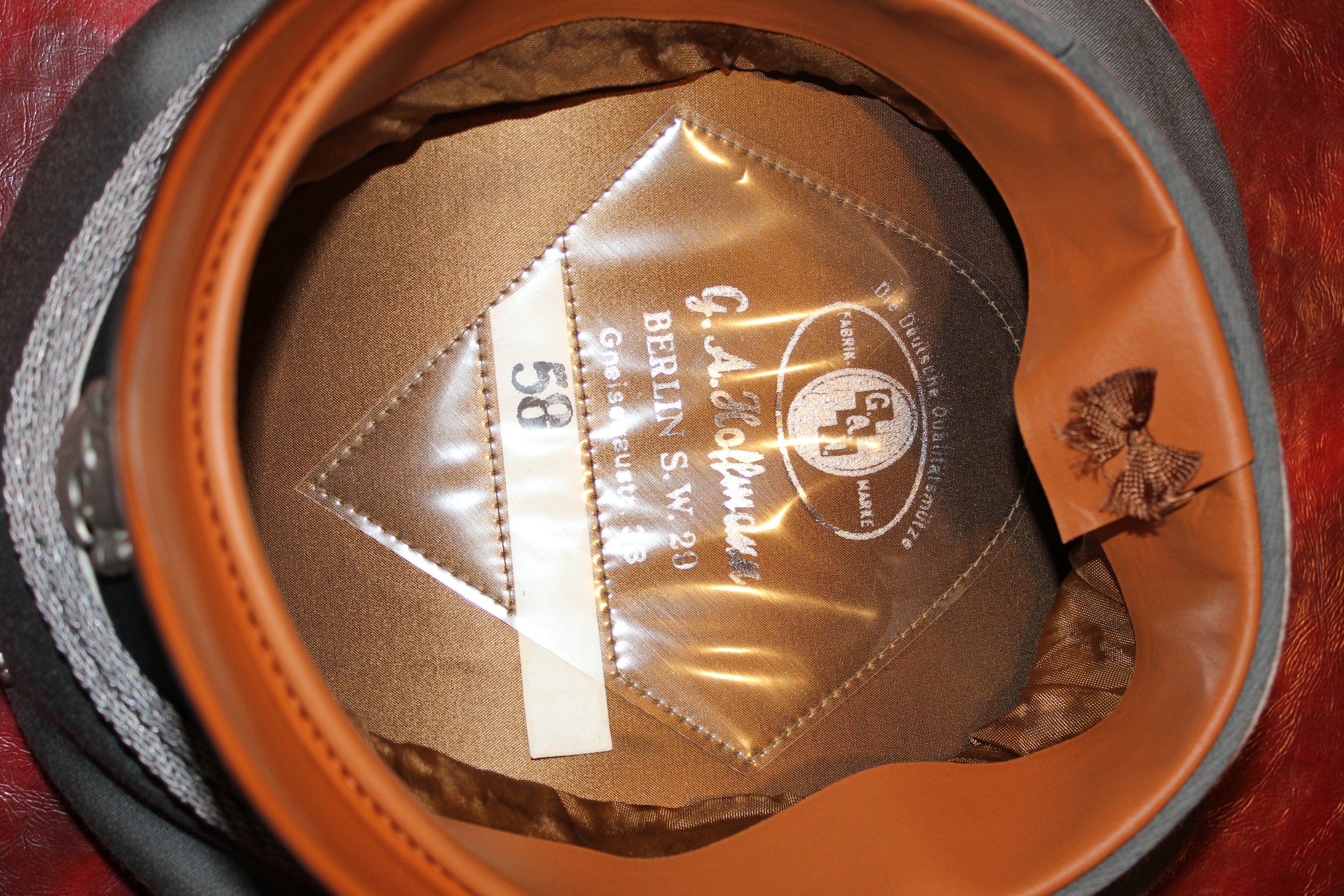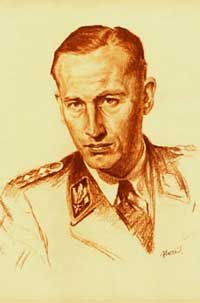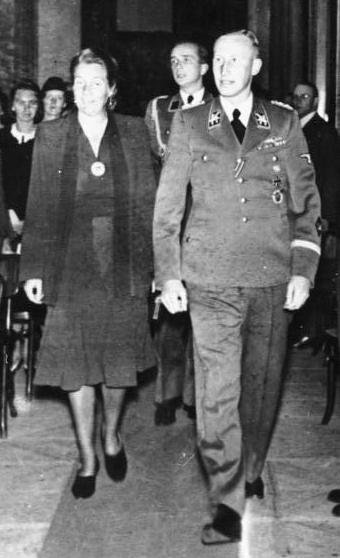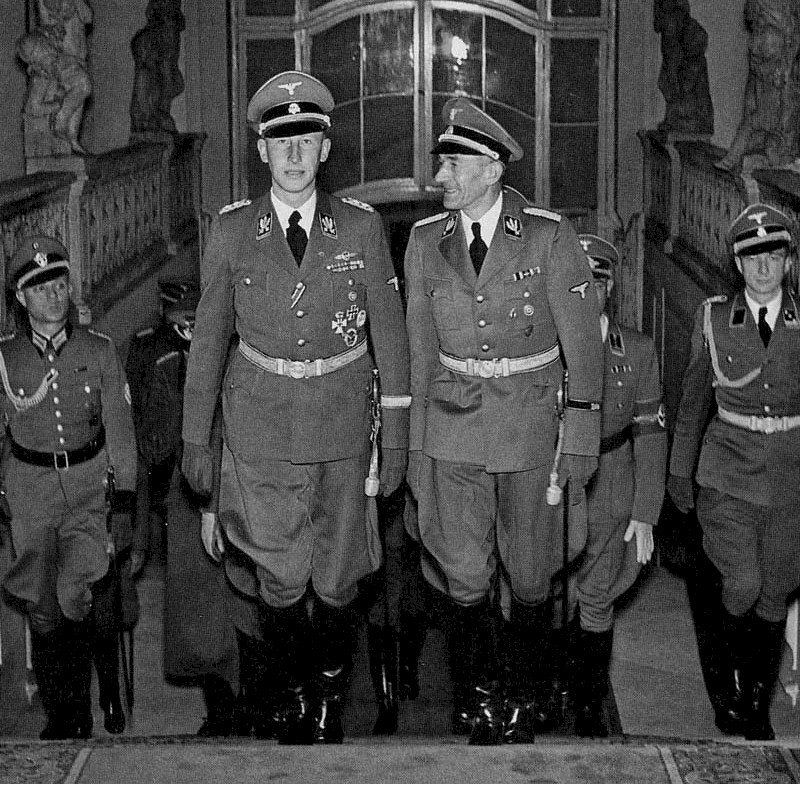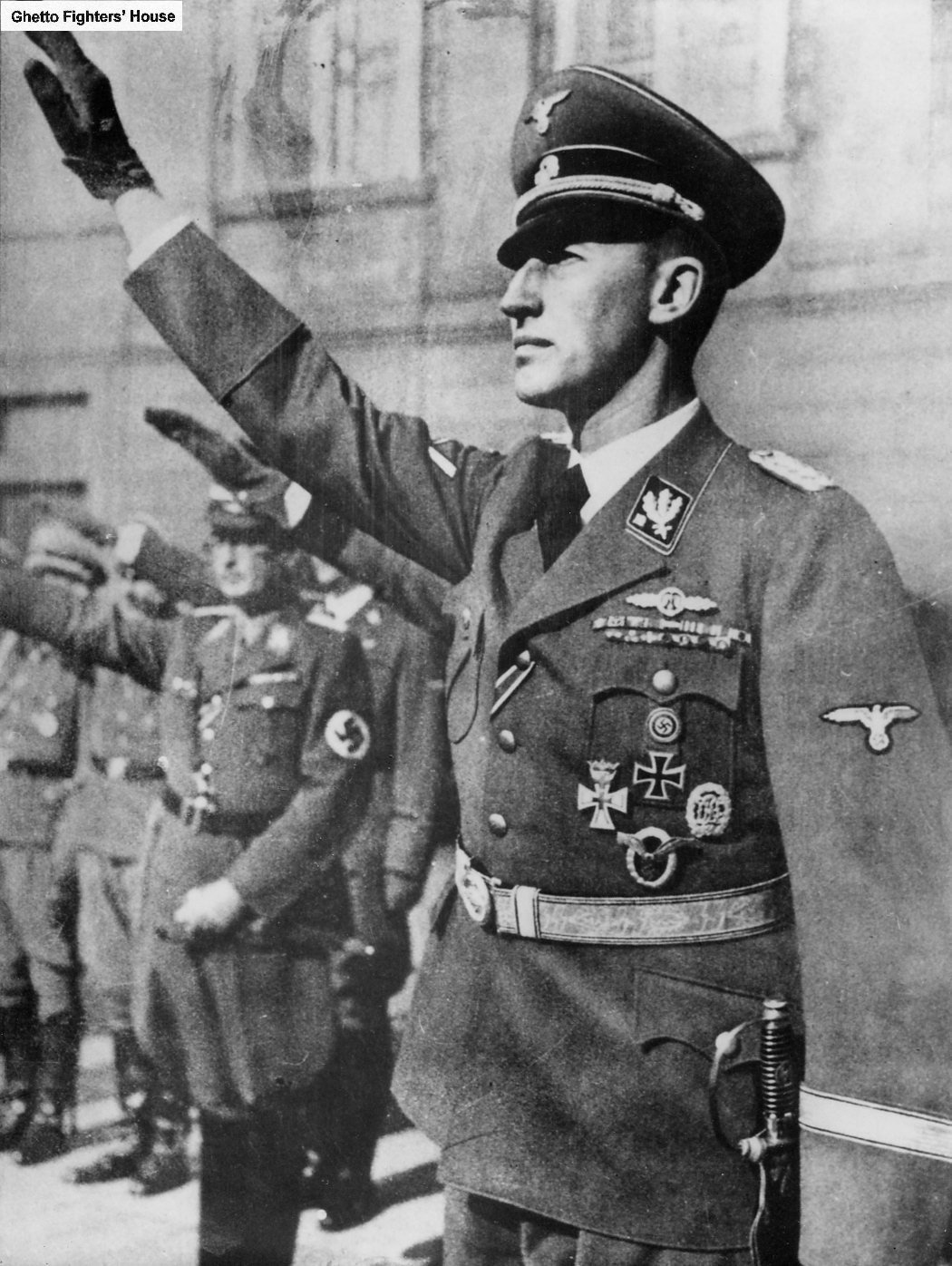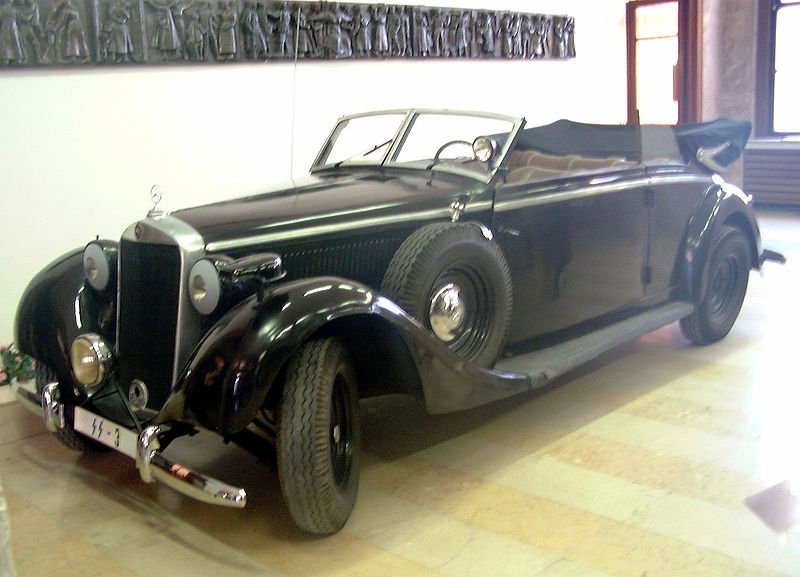‘SD’ Sicherheitsdienst (Security-Police):
SS-Untersturmführer, Sicherheitsdienst Hauptamt:
This SS-Untersturmführer is a member of Department II, Section I of the SD Hauptamt, responsible for gathering intelligence on internal enemies of the 3rd Reich. These were a particularly nasty bunch, who you might meet on the street and think they are just another civilian, but could whisk you away in a flash, in a blink of an eye, you would disappear, and just never be seen again, so many people, turned a blind eye and kept their mouths shut, no one helped no one, yet nobody could say, they had no idea what was going on in the country as well, eventually they all paid the price of saying nothing, and worrying about themselves till it was too late.
And a lesson for all of us. More often than not, we tend to say nothing, and do nothing- and turn a blind eye and hope it stops and goes away, do nothing and hope nothing will happen…but then you can’t say nothing when they come for you, for you did nothing for anyone else, you have to participate and try, and let people know what you saw, and heard. Or it will all be taken away, slowly perhaps, bit by bit, quietly, deliberately, thoroughly, and completely, and you will believe you’ve done right- voted for the right guy, or party, what have you, but you see, that’s what it is all about control and power, and people just don’t want to give that up, but if we all stick together, we hold the power, it’s as simple as that. They promise to clean up the mess they helped make! The war machine thrives on chaos.
The Sicherheitsdienst Hauptamt was founded in October 1931 in Munich by Heinrich Himmler. was later moved to Berlin in 1933, and took on the role of espionage and counter-espionage against organizations opposed to the party and the government. After the Röhm purge, the SD moved aside, leaving the unmasking of state enemies to the “Geheime Staatspolizei,” more famously known as the Gestapo. I wanted to show a Gestapo Uniform, but the fact is they worked in plain clothes, Dress jackets, overcoats, sweaters, and the like, and their only ID was a metal disc with the Eagle and SS # on the back, keeping their identity classified. Now I have to find an 80-year-old suit and shirt!
This SD-Hauptamt was located at 102 Wilhelm Strasse in Berlin. He wears the standard black breeches with the tunic. He is a Veteran of the 1914-18 War and has been wounded (at least once) during his Army service. He wears the “Old-Fighter” Chevron on his sleeve, indicating his long service with the SS and SD. He had a brown shirt with a black tie. The uniform was finished with a fine hat.
The uniform is just exactly what people think of when they think of the “SS” and Police Units, and perhaps, rightly so. I suppose it was a uniform designed to intimidate, and it did indeed. It is a scary-looking uniform to me. All the atrocities, later attributed to the SS, make it all the more terrifying; indeed, the stories made it all the worse. Fear is the name of the game in controlling people with dictatorships and the powers that be. It is the image representing all the SS, albeit the Waffen-SS was a bit different, more in line with politically motivated soldiers loyal to Hitler, not the country. They worked alongside each other at one time or another.
“UPDATED” SS-Oberscharführer, Sicherheitsdienst (SD):
In 1939, Heinrich Himmler established the Central Security Department of the Reich (RSHA-Reichssicherheits Hauptamt). This organization came under the General SS (Allgemeine-SS) and was responsible for the security and police-related tasks associated with the political and racial policies of the Protection Groups (Schutzstaffeln). The RSHA encompassed the Secret State Police, the “Gestapo”, the Criminal Police (Kripo), and the Security Police (Sicherheitspolizei-SD). The SD was often referred to simply as “Sipo”, which was an acronym for this infamous security organization.
It wouldn’t be long before the Polizei and the SD would find themselves on the front. As a separate organization, the SD was formed in 1931 as an intelligence service for the SS. Himmler entrusted Reinhard Heydrich as its leader, and he served in this capacity until his assassination in 1942. The “SD” was initially a small organization, but it grew in power to the point where it had more than 500 branches, which employed nearly 6,000 security personnel. Members of the SD were charged with tasks related to espionage, security observation, global research, and evaluation. You could say they spied on their enemies, and they spied on their own, arresting and punishing people seen as racial threats to the National Socialist / Zionist (NAZI) cause. The SD played an instrumental role in the “Final Solution of the Jewish Question”, which resulted directly in the deaths of more than 6 million Jewish people during the Second World War.
Officers of the SD were also established in occupied countries; these were known as the “Sonderkommandos” and the “Einsatzkommandos” and were organized to collect, transport, and eliminate people they deemed “unworthy” of the Aryan bloodline. Many of those who served in the ‘SD’ were, in fact, young university students who were idealists regarding the National Socialist ideology. As volunteers, they served in all areas of the SD, including research and scientific officers who gathered and analyzed material that would later be used to help support the National Socialist anti-Semitic beliefs.
This Hauptscharführer wears an M43 Tunic as his standard field service uniform with the police-style shoulderboards; soon, SS-style shoulder boards with black instead of brown centers would replace them, possibly due to the lack of the SD shoulder boards, or he has come over to the SD, directly from a Department of the Polizei. He wears a typical SS / NCO Schirmmutz, breaches, and boots; he would have had an SS-Enlisted Man’s belt buckle on a black belt, and quite likely a black holster with a Walther P38 pistol in it, completing the uniform. The NCO has earned the SA Sports Badge in Silver, the War Merit Cross Second Class, as well as the Long Service Award.
Diagnosing the Hauptscharführer uniform, he has seen major combat action and is probably in line for the Anti-Partisan Badge. He has no Ost Front medal; he joined the division about the time of the Siege of Leningrad, stacking up enough combat action time to be one of the few who received the General Assault Badge for 75 days in action. In many hand-to-hand combat actions, earning him the Close Combat Clasp in Bronze and a Silver Wound Badge. His combat leadership is proven by both Iron Crosses and his dedication to supporting his troops in battle by the KVK-II.
These pictures are poor, I know, it’s been re-done 4 times now. The location of the whistle after being found in the pocket was disputed at the time of the photo shoot, but it doesn’t do the uniform a lot of justice either, and it might disappear. German officers carried them sometimes, and NCOs, anyone in-charge would have a whistle, in general Police carried one, to control traffic and whatnot.
I see it with an Overseas cap (Side-Cap), but he quite likely might have had a dressier billed hat, which we always envisioned SS officers to wear, but he’s mid-grad, and they did not all use them. He may have seen the change from the Shako to the helmet, but not necessarily used by this organization often I don’t think.
A black leather belt with a triple cartilage pouch on each side of his SS buckle. a Bayonet, and a bread bag with a water flask, something like an infantryman, but that’s it, maybe a set of Y-Straps, but he wasn’t a field guy, usually near or with a vehicle, and/or a building to set up shop in. With Black boots and gloves, He would have been issued a helmet as well, but they were not always worn at the front; more cleaning up behind them, and working in occupied areas, these lesser grade SD ranks would support their officer, and drive them around, as guards and the like.
“Updated Pictures” SS-Obersturmführer, Sicherheitsdienst, Field Uniform:
The SD was subordinated under Reichsführer-SS and Chief of the German Police Heinrich Himmler, and until 1942 led by Reinhard Heydrich, since 1943 by Ernst Kaltenbrunner. The main task of the SD was the observation of political opponents and the provision of political news from in and out of the country. The foreign service of the SD was to participate in the preparation of uprisings and sabotage abroad.
At home, the SD collected the impressions of the German people towards all political decisions. These reports were summarized twice or three times a week in all SD Departments and handed out to the most important state and party officials. Another task of the Security Service was to judge to political reliability of high officers and party members, sometimes affecting their careers. On September 27, 1939, the SD and the Security Police were comprised of the ”Reichssicherheitshauptamt” (RSHA-Department of Security), which thus became and very influential office under Reinhard Heydrich.
The SD was subordinated under Reichsführer-SS and chief of the German Police Heinrich Himmler and, until 1942, led by Reinhard Heydrich, since January 1943 by Ernst Kaltenbrunner. The foreign service of the SD was to participate in the preparation of uprisings and sabotage abroad.
The SD also used an NSDAP ”Blockleiter” who had to keep an eye on the inhabitants of their blocks. There was an army of volunteers belonging to the NS (National Socialists) Party in all professions and paid agents, as well as so-called “V-Leute” (Vertrauensleute- reliable persons).
This SD officer wears a standard four-pocket with a dark green stand-and-fall collared officer tunic favored by the Waffen-SS. The collar insignia is a standard SD patch, and the boards are early Waffen-SS with Police piping.
The Honor of Old Fighters Chevron on the right sleeve shows his affiliation with the Nazi party before 1935, as does the “Blood Order” ribbon on the right pocket flap. The SD patch on the left sleeve shows this officer to have been a former member of the Gestapo, or Stapostelle (State Police Station).
Involved with the Freikorps in Selesia, this officer also took part in the campaigns in Austria and Czechoslovakia. His actions in combat zones have earned him the War Merit Cross (without swords) in both 1st and 2nd classes, as well as a black wound badge (1-2 wounds) indicating possible actions against partisans. He wears standard SS officer headgear, breeches, or Trousers and boots to complete this uniform, along with an officer's double-claw buckle, and a holstered pistol. Originally, the uniform had a wool Officers’ Schirmmutz cap, but that’s been misplaced; then it had an M43, now an Officers Crusher Cap, all good.
Note, The Breeches have leather seats, making them “Riding Breeches” popular at the time, even if they didn’t ride. The green-dyed leather does seem to be quite a rarity, and maybe a particular set, I thought it fit here well, at any rate. I’m not sure why, but I like this pair of breeks. You’ll see gray-colored leather, too, at times, but normally, it's tanned naturally. These breaches have also been used with the SS-Obersturmführer, Sicherheitsdienst, and Field Uniforms of the collection (the Prior Uniform). It had straight leg-slacks as well for a more office look to the uniform.
SS-Sicherheitsdienst, Gray leather jacket:
Part 2 call it, as this was with the prior uniform, so no further story here, other than these leather “Over Coats” were often associated with members of the SD and Gestapo. This was the image that came to mind for many when there was a knock at the door in the middle of the night. Deliberately intimidating and heavy, but it kept them warm; they were not specific to the branch or the Polizei Forces, though. It fits here, but these were seen with the Heer, SS, and Kriegsmarine, in sometimes slightly different patterns. It wouldn’t be a reach to say they had feldgrau cloth or gray leather gloves as well.
SD-Sturmscharführer, Sicherheitsdienst:
This SD-Sturmscharführer’s uniform tells of a long time at work in the Eastern Front-occupied areas. The Sturmscharfuhrer is interesting to me, he may be assigned to work with or lead a group of Ost Truppen, or he is not of German descent, he does not carry the SD Diamond identification insignia on his uniform, but he is SD affiliated, and likely as well, he didn’t want to draw too much attention to himself. Breaking down the uniform with a closer look at his awards and decorations, we can deduce some of this mystery.
Wearing the Ost Front (1st Winter in Russia) ribbon means he was with the initial security detail that went into the USSR after the initial invasion in 1941, and he was there through that 1st winter in the Soviet Union. Having the KUBAN Shield on his left arm, he was still in the Soviet Union in 1943, putting him in operations with Army Group South, where, after continuously falling back, in retreat, they stopped to defend the KUBAN Bridgehead in Crimea.
The intriguing part, though, of this man’s service to me is the connection with the Eastern Volunteers, possibly serving with several different elements throughout his time on the Eastern Front. The SS knew of the Crimean distaste of Sovietization, and that for the Crimean Tatars, many initially saw the German invasion of 1941 as a good thing.
But once the Germans established their administration in Crimea, it was made clear that even though some new religious freedoms were granted during the occupation, the Nazis could be just as oppressive in their rule as the Soviets, and so many went back; some were stuck. He may have been with some of the ones that continued the fight, but this is all speculation. We can deduce that he probably served with the Tartar or Cossack forces.
He does carry on the uniform Eastern Peoples (Volunteers) Decorations, having both 1st and 2nd Classes (with Swords), and First Class in Gold with Swords too, for bravery in combat. These awards may have been given due to his leadership while conducting direct operations on Partisan bands, in the area threatening the Bridgehead, covering the withdrawal, and in its aftermath. You did not want to be this man in this position and get captured by the Soviets either.
Whether or not his service continued with the Volunteers after the battle, we can only wonder. But with his Anti-Partisan badge in Bronze, his service was recognized by the German command. He also received the War Merit Cross with Swords II Class, which gives us an indication that he was significant in carrying out combat operations.
He would have had an SS-Enlisted Buckle on his black belt, a sidearm on it, generally the P38. He has the Schirmmütz cap and would have had breeches or trousers with boots or shoes, depending on the occasion, a service shirt, and a black tie would complete this uniform. I have no delusions about the representation of the SD-Sturmscharführer role in history, and not trying to show a happy-go-lucky guy; these were a rough lot and meant business, and dangerous folks indeed to all. A revered by all-even their own. I am not here to judge, but to show the uniform and the story it tells, so it is not forgotten.
SS-Hauptscharführer, Sicherheitsdienst (SD), 4. SS-Panzer Pioneer Bataillon, of the “SS-Polizei-Division”:
This is the “Tropical SS-Uniform” of an SS-Hauptscharführer of the 4. SS-Panzer Pioneer Bataillon, of the “SS-Polizei-Division”. Waffen-SS units themself in some Tropical climates, though this is often overlooked. They even developed their model uniform, which had obvious Italian influences. It was known as the “Saharaina” (Named after the Sahara Desert, as the Itilian uniform also was) the jacket was matched with either trousers or shorts, worn over the tropical weight shirt, and could either wear the tropical (called M40 now) sort of M43 cut cap, in similar material or the lightweight pith helmet, the standard helmet was the last resort, heavier, often still dark green, likley quite hot in the tropical sun. The Hauptscharführer is a veteran of the Great War, having earned the 1st and 2nd class Iron Crosses in that war, and he was wounded severly, keeping out of the service but not the police. He was involved in one type of police work for some time as well, with Police, SA, and Army, long service awards, and he was at the Anschluss, Prague, and Italy, with some West Wall time in too. He also wears the rare SA Braunschweig Rally Badge 1931 as well.
Now ‘Pioneers’ generally is thought to be the same as Engineers, but here it refers more to working with explosives, and mines on the road, but also preparing needed bridges, roads, etc. They could blow stuff up, too. With the power of the SS and Polizei behind them in this case, they got things done. SS-Polizei found itself fighting first in France in 1940, then the next stop was on the Russian Front, which introduced a scale of brutality of war unseen since Genghis Khan. Much of the SS-Division was part of the Armee Group Nord around Leningrad. After suffering heavy losses, the division was moved to security duty in Poland and Czechoslovakia and then on to Greece in 1943. 1944 found it fighting Tito’s Partisans in Serbia, then back to Hungary, finally backing itself into Berlin, where it would come to an end.
SS-Brigadeführer, Hans Julius Kehrl, Chief Air Commander of the Polizei & Raid Warden of Hamburg:
Brigadeführer Kehrl was the chief air warden of Hamburg, organizing safety and security during the massive air raids by the Allies. He was promoted to SS-Brigadeführer in 1942, and he was the Major General of the General Police in Hamburg until the end of the war. Kehrl had a long career in judicial and police work, starting in 1914 when he went to war, earning the rank of lieutenant and winning the Iron Cross, First and Second Class, as well as the wound badge of the time. Joining the ranks of the SS in 1937, Kehrl’s service in Hamburg earned him the War Merit Cross Second Class, First, and the Knight’s Cross, all with Swords.
Obergruppenfuhrer und General der Polizei, Reinhard Heydrich:
From 1931 until his death in 1941, Reinhard Heydrich experienced a meteoric rise through the ranks of the SS-Mann to SS-Obergruppenführer, Himmler’s right-hand man in developing the security and police side of the SS. At the start of WWII, Heydrich became commander of the consolidated Reich Security Central Office of the SS.
On his order, the Einsatzgruppen were created for the specific purpose of hunting down, gathering, and then exterminating all the Jews of Poland and Russia.
Three years later, in 1942, he chaired the Wannsee Conference, where the decision was made to exterminate all the Jews they could in Europe. So he was promoted to SS-Obergruppenführer. Heydrich was made the Reich Govenor of Czechoslovkia.
Aware of how powerful and cunning British Intelligence Agents put together an operation designed to kill him, trained and then dispatched three Czech exiles to Prague. The assassination was carried out in May of 1942. Not initially killed as the execution, did not happen like planned, but later died from an infection generated from the Grenaide’s fragments going threw the seat first, before they went into him, and he died from that, on June 4th, that same day, in the Pacific Theater, The American Navy bumped into the Japanese Imperial Navy in the Battle of Midway.
During World War II, while serving as one of the highest officers in the SS, Heydrich was also a Reserve Officer with the less intimidating rank of Luftwaffe Hauptmann. He flew combat missions too, in the Bf-109 fighter aircraft in Poland, France, and the Russian Front, before he was forbidden to fly when he realized that if he was captured and became a POW, it would be a major security breach to Germany. Heydrich was an avid sportsman who loved challenges; he even competed in the 1936 Olympic Fencing, as well as Horsemanship events. Both of these are noted in various Reich Awards.
The Heydrich uniform is but one; this would represent a final pattern uniform seen in Prague. Made of service grade wool material, in the SS-Dienstbluse pattern noted by the pleated back panels, open collar cut with slash lower pockets.
A recipient of many awards, one of the uniforms is the white and gold “Danzig Cross” on his left pocket. Also on the uniform, he displays his athletic ability, with the National Sports Badge in Silver, as well as the Iron Cross 2nd Class ribbon through the button-hole, as a front-line soldier might, the 1st Class Medal, and the Luftwaffe Pilot Badge, and the Luftwaffe Short-Range Fighter Clasp in Silver are also combat-related. His early affiliation with the NAZI Party was displayed by his Gold Party Badge.
The silver and black cuff title shows him to be a member of Himmler’s Staff, and he wears the Honor Chevron (Old Fighters Chevron) on her right arm, indicating his early affiliation in the SS with service. He is wearing the SS Officer, Brocade, Dress belt, with the sword on this occasion. The uniform is completed by him wearing Breaches, and Riding Boots, and finishing with his Schirmmutz, wearing white gloves.
